This class describes the displacement operator defined on the data of the mesh. More...
#include <EMM_DisplacementOperator.h>


Public Member Functions | |
| virtual void | adimensionize (const tReal &Le, const tReal &Ms, const tReal &T, const tReal &L) |
| adimensionize the operator More... | |
| const tReal * | getAdimensionizedSegmentsSize () const |
| get the segments size in all directions More... | |
| const EMM_RealArray & | getAdimensionizedVolumicMass () const |
| get the adimensionized volumic mass per cell More... | |
| const EMM_4SymmetricTensors & | getLambdaE () const |
return the adimensionized elastic tensor distribution  More... More... | |
| const EMM_4Tensors & | getLambdaEDoubleDotLambdaM () const |
return the adimensionized magnetic tensor distribution  More... More... | |
| const EMM_4Tensors & | getLambdaMDoubleDotLambdaE () const |
return the adimensionized magnetic tensor distribution  More... More... | |
| const EMM_4SymmetricTensors & | getLambdaMDoubleDotLambdaEDoubleDotLambdaM () const |
return the adimensionized magnetic tensor distribution  More... More... | |
| void | setInitialDisplacement (const tReal &scale, const tString &dataFile) |
| set initial displacement field. More... | |
| void | setInitialDisplacement (const tReal data[3]) |
| set initial displacement field More... | |
| void | setInitialDisplacement (const tReal U0, const tReal &U1, const tReal &U2) |
| set initial displacement field More... | |
| void | setInitialDisplacement (const EMM_RealField &data) |
| set initial displacement field More... | |
| void | setInitialVelocity (const tReal &scale, const tString &dataFile) |
| set initial velocity field More... | |
| void | setInitialVelocity (const EMM_RealField &data) |
| set initial velocity field More... | |
| void | setInitialVelocity (const tReal data[3]) |
| set initial velocity field More... | |
| void | setInitialVelocity (const tReal &V0, const tReal &V1, const tReal &V2) |
| set initial velocity field More... | |
| void | setLimitConditionOnPoints (const EMM_IntArray &lc) |
| set the limit condition each point is set to More... | |
| void | setLimitConditionOnPoints (const tLimitCondition &lc) |
| set the limit condition to all points More... | |
| void | setConstraints (const tFlag &C, const tString &dataFile) |
| set constraints from file defined on points More... | |
| void | setConstraints (const tFlag &C, const tReal data[3]) |
| set constraints field More... | |
| void | setConstraints (const tFlag &C, const tReal &C0, const tReal &C1, const tReal &C2) |
| set initial constriants field More... | |
| void | setConstraints (const tFlag &C, const EMM_RealField &data) |
| set constraints More... | |
| const tFlag & | getConstraintFaces () const |
get the constraint faces   if face f is constrainted More... if face f is constrainted More... | |
| const EMM_RealField & | getConstraints () const |
| get the constraints field for reading More... | |
| EMM_RealField & | getConstraints () |
| get the constraints field for writing More... | |
| const EMM_LimitConditionArray & | getLimitConditionOnPoints () const |
| SPC::EMM_LimitConditionArray | getLimitConditionOnPointsByReference () const |
| virtual void | buildDataOnBoundaryFaces (const EMM_Grid3D &mesh, const EMM_LimitConditionArray &limitConditionOnPoints, const EMM_RealField &U0, EMM_RealField &DnU0)=0 |
| build the data on boundary faces More... | |
| void | nullProjectionOnDirichletBoundary (EMM_RealField &V) const |
| project the velocity to 0 on dirichlet boundary points More... | |
| void | nullProjectionOnDirichletBoundary (const tUIndex &nPoints, const tDimension &dim, tReal *V) const |
| project the velocity to 0 on dirichlet boundary points More... | |
| void | projectionOnDirichletBoundary (const EMM_RealField &V0, EMM_RealField &V) const |
| project the velocity to 0 on dirichlet boundary points More... | |
| void | projectionOnDirichletBoundary (const tUIndex &nPoints, const tDimension &dim, const tBoolean &incV0, const tReal *V0, tReal *V) const |
| project the velocity to 0 on dirichlet boundary points More... | |
| void | periodicProjection (const tCellFlag &periodicity, const tUInteger nPoints[3], EMM_RealField &V) const |
| make the periodic projection of the field V More... | |
| virtual tULLInt | getMemorySize () const |
| return the memory size in byte More... | |
| virtual tBoolean | discretize (const EMM_LandauLifschitzSystem &system) |
| discretize and initialize the operator More... | |
| virtual tBoolean | resetToInitialState (const EMM_LandauLifschitzSystem &system) |
| reset the opertaro to initial state More... | |
| virtual tBoolean | backup (const tString &prefix, const tString &suffix, const tString &ext) const |
| backup of the operator data into file(s) used for restoring More... | |
| virtual tBoolean | restore (const EMM_LandauLifschitzSystem &system, const tString &prefix, const tString &suffix, const tString &ext) |
| restore the operator data from file(s) More... | |
| const EMM_2PackedSymmetricTensors & | getElasticTensor () const |
return the elastic tensor  More... More... | |
| virtual tUSInt | getDataFieldsNumber () const |
| get the number of field used in the operator More... | |
| virtual tBoolean | getDataField (const tUSInt &index, tString &dataName, tUIndex &n, tDimension &dim, const float *&values) const |
| get the data field at index for saving data in vtk,txt,... files. More... | |
| virtual tBoolean | getDataField (const tUSInt &index, tString &dataName, tUIndex &n, tDimension &dim, const double *&values) const |
| get the data field at index for saving data in vtk,txt,... files. More... | |
| virtual tBoolean | getDataField (const tUSInt &index, tString &dataName, tUIndex &n, tDimension &dim, const long double *&values) const |
| get the data field at index for saving data in vtk,txt,... files. More... | |
| virtual tBoolean | isAffine () const |
| return true if the operator is either constant or linear More... | |
| virtual tBoolean | isGradientComputationable () const |
| return true if the gradient of the magnetic excitation is computationable More... | |
| void | setDisplacement (const EMM_RealField &u) |
| set the displacement field More... | |
| void | setDisplacement (const tReal &Ux, const tReal &Uy, const tReal &Uz) |
| set the displacement field to an uniform vector defied on points More... | |
| EMM_RealField & | getDisplacement () |
| get the displacement for writing More... | |
| const EMM_RealField & | getDisplacement () const |
| get the displacement for reading More... | |
| const EMM_RealField & | getDisplacement (const tReal &t) const |
| get the veolicty at time More... | |
| void | setVelocity (const EMM_RealField &v) |
| set the velocity of dicplacement defined on points More... | |
| void | setVelocity (const tReal &Vx, const tReal &Vy, const tReal &Vz) |
| set the displacement velocity field to an uniform vector defined on points More... | |
| EMM_RealField & | getVelocity () |
| get the velocity for writing More... | |
| const EMM_RealField & | getVelocity (const tReal &t) const |
| get the velocity at time More... | |
| const EMM_RealField & | getVelocity () const |
| get the velocity at t for reading More... | |
| EMM_RealField & | getAccelerator () |
| get the accelerator for writing More... | |
| const EMM_RealField & | getAccelerator () const |
| get the accelerator for reading More... | |
| virtual void | setSolver (const tString &solverName) |
| set the solver More... | |
| void | setSolver (SP::MATH_Solver solver) |
| set the solver More... | |
| MATH_Solver * | getSolver () |
| get the solver of the system More... | |
| void | setElasticityState (const tFlag &v) |
| set the elasticity state More... | |
| tBoolean | isSteadyState () const |
| tBoolean | isEquilibriumState () const |
| tBoolean | isFrozenState () const |
| void | setTimeIntegrationMethod (const tFlag &m) |
| set the time integration method for new field More... | |
| const tFlag & | getTimeIntegrationMethod () const |
| get the time integration method for next time step More... | |
| void | setTimeIntegrationOrder (const tInt &o) |
| set the time integration order for new field More... | |
| const tUCInt & | getTimeIntegrationOrder () const |
| get the time integration order for new field More... | |
| const tReal & | getTimeStep () const |
| get the time step for elasticty More... | |
| void | setCFL (const tReal &cfl) |
| set the cfl for computing the initial time step More... | |
| virtual tBoolean | computeFieldsAtTime (const tReal &t, const tFlag &order, const EMM_RealArray &sigma, const EMM_RealField &dM_dt0, const EMM_RealField &M0) |
| compute the fields of operator at time More... | |
| virtual tBoolean | updateAtNextTimeStep (const tReal &dt, const EMM_RealArray &sigma, const EMM_RealField &Mt) |
| update the data of operator at next time step More... | |
| virtual SP::EMM_BlockEquilibriumMatrix | NewEquilibriumMatrix () const |
| create the equilibrium matrix More... | |
| void | setIsEquilibriumMatrixReconditioned (const tBoolean &c) |
| set to true if the equilibrium matrix is conditioned More... | |
| const tBoolean & | isEquilibriumMatrixReconditioned () const |
| get if the equilibrium matrix is conditioned More... | |
| virtual void | computeEquilibriumMatrixDiagonalConditioner (MATH_Vector &D) const |
| compute the diagonal conditioner More... | |
| tBoolean | computeEquilibriumState (const EMM_RealArray &sigma, const EMM_RealField &M, const EMM_RealField &U0, EMM_RealField &U) |
compute the equilibirum state  More... More... | |
| virtual void | computeElasticStressMatrixProduct (const tUIndex &nData, const tDimension &dim, const tReal *U, tReal *D) const |
compute the elastic stress Matrix product  More... More... | |
| virtual void | computeElasticTensor (const EMM_RealField &U, EMM_2PackedSymmetricTensors &eTensor) |
compute the elastic tensor for all cells  More... More... | |
| void | computeStress (const EMM_RealArray &sigma, const EMM_RealField &U, const EMM_RealField &M, EMM_RealField &stress) const |
compute the stress  More... More... | |
| virtual void | computeElasticStress (const EMM_RealField &U, EMM_RealField &S) const |
compute the elastic stress for all cells  More... More... | |
| void | computeElasticStress (const tUIndex &nData, const tDimension &dim, const tReal *U, tReal *D) const |
compute the elastic stress  More... More... | |
| void | computeMagneticStress (const EMM_RealArray &sigma, const EMM_RealField &M, EMM_RealField &S) const |
compute the magnetic stress for all cells  More... More... | |
| virtual void | computeMagneticStress (const tReal &alpha, const tReal &beta, const EMM_RealArray &sigma, const EMM_RealField &M, EMM_RealField &S) const =0 |
compute the magnetic stress for all cells from the stress  More... More... | |
| tReal | computeEnergy (const tReal &t, const tUIndex &nCells, const tDimension &dim, const EMM_RealArray &sigma, const tReal *M) const |
| compute the energy of the magnetostriction operator at current displacement and velocity More... | |
| tReal | computeCineticEnergyAtTime (const tReal &t) const |
| compute the energy due to velocity More... | |
| virtual tReal | computeCineticEnergy (const EMM_RealField &V) const =0 |
| compute the energy due to velocity More... | |
| tReal | computePotentialEnergyAtTime (const tReal &t) const |
| compute the potential energy to the space variation of the displacement More... | |
| virtual tReal | computePotentialEnergy (const EMM_RealField &U) const |
| compute the potential energy to the space variation of the displacement More... | |
| tReal | computeStressConstraintEnergy (const tReal &t) const |
| compute the energy of the boundary stress constraint More... | |
| virtual tReal | computeStressConstraintEnergy (const EMM_RealField &U) const =0 |
| compute the energy of the stress constraint with displacemet More... | |
| virtual tString | toString () const |
| turn the martix into string More... | |
| virtual tString | getName () const |
| return an human reading name of the operator More... | |
| const tBoolean & | isCubicVolume () const |
| return the true if the element is cubic More... | |
| const tReal & | getElementVolume () const |
| return the adimensionized volume of the element More... | |
| virtual tBoolean | getDataFieldSpace (const tUSInt &index, tString &dataName, tFlag &supportType, tString &dFieldType, tUIndex &n, tDimension &dim) const |
| get the data field at index for saving data in vtk,txt,... files. More... | |
| void | getSharedPointer (SP::CORE_Object &p) |
| get the shared pointer of this class into p More... | |
| void | getSharedPointer (SPC::CORE_Object &p) const |
| get the shared pointer of this class into p More... | |
| tString | getClassName () const |
| return the class name of the object More... | |
| tString | getIdentityString () const |
| return the identity string of the object of the form className_at_address More... | |
| tString | getPointerAddress () const |
| return the identity string of the object More... | |
| template<class T > | |
| tBoolean | isInstanceOf () const |
| test if the clas T is an instance of this class More... | |
| tBoolean | isInstanceOf (const tString &name) const |
| test if the object is an instance of className More... | |
Static Public Member Functions | |
| static void | setIsMemoryChecked (const tBoolean &v) |
| set if the memory checking is used More... | |
| static void | setOut (SP::CORE_Out out) |
| set the output stream More... | |
| static void | resetOut () |
| reset the output stream More... | |
| static void | setThread (SP::CORE_Thread thread) |
| set the thread More... | |
| static void | resetThread () |
| reset the output stream More... | |
| static CORE_Out & | out () |
| get the output More... | |
| static SP::CORE_Out | getOut () |
| get the output More... | |
| static CORE_Thread & | getThread () |
| get the profilier More... | |
| static const tBoolean & | isMemoryChecked () |
| get if the memory checking is used More... | |
| static tString | getClassName (const tString &identityString) |
| return the class name of the object More... | |
| template<class T > | |
| static tString | getTypeName () |
| get type name More... | |
| static tBoolean | is64Architecture () |
| return true if the machine is a 64 bits machine More... | |
| static tBoolean | is32Architecture () |
| return true if the machine is a 32 bits machine More... | |
| static tString | pointer2String (const void *obj) |
| return the string representation of a pointer More... | |
| static void | printObjectsInMemory (ostream &f) |
| print object in memory More... | |
| static void | printObjectsInMemory () |
| print object in memory in the standart output More... | |
| static tChar | getMaxChar () |
| get the max value for tChar type More... | |
| static tChar | getMinChar () |
| get the min value for tChar type More... | |
| static tUChar | getMaxUChar () |
| get the max value for tUChar type More... | |
| static tUChar | getMinUChar () |
| get the min value for tUChar type More... | |
| static tSInt | getMaxSInt () |
| get the max value for tSInt type More... | |
| static tSInt | getMinSInt () |
| get the min value for tSInt type More... | |
| static tUSInt | getMaxUSInt () |
| get the max value for tUSInt type More... | |
| static tUSInt | getMinUSInt () |
| get the min value for tUSInt type More... | |
| static tInt | getMaxInt () |
| get the max value for tInt type More... | |
| static tInt | getMinInt () |
| get the min value for tInt type More... | |
| static tUInt | getMaxUInt () |
| get the max value for tUInt type More... | |
| static tUInt | getMinUInt () |
| get the min value for tUInt type More... | |
| static tLInt | getMaxLInt () |
| get the max value for tLInt type More... | |
| static tLInt | getMinLInt () |
| get the min value for tLInt type More... | |
| static tULInt | getMaxULInt () |
| get the max value for tULInt type More... | |
| static tULInt | getMinULInt () |
| get the min value for tULInt type More... | |
| static tLLInt | getMaxLLInt () |
| get the max value for tULInt type More... | |
| static tLLInt | getMinLLInt () |
| get the min value for tLLInt type More... | |
| static tULLInt | getMaxULLInt () |
| get the max value for tULLInt type More... | |
| static tULLInt | getMinULLInt () |
| get the min value for tULLInt type More... | |
| static tFloat | getMaxFloat () |
| get the max value for tFloat type More... | |
| static tFloat | getMinFloat () |
| get the min value for tFloat type More... | |
| template<class T > | |
| static T | getEpsilon () |
| get the epsilon value for T type More... | |
| template<class T > | |
| static T | getInfinity () |
| get the infinity for T type More... | |
| static tFloat | getFloatEpsilon () |
| get the epsilon value for tFloat type More... | |
| static tFloat | getFloatInfinity () |
| get the infinity value for tFloat type More... | |
| static tDouble | getMaxDouble () |
| get the max value for tDouble type More... | |
| static tDouble | getMinDouble () |
| get the min value for tDouble type More... | |
| static tDouble | getDoubleInfinity () |
| get the infinity value for tFloat type More... | |
| static tDouble | getDoubleEpsilon () |
| get the epsilon value for tDouble type More... | |
| static tLDouble | getMinLDouble () |
| get the min value for tLDouble type More... | |
| static tLDouble | getMaxLDouble () |
| get the max value for tLDouble type More... | |
| static tLDouble | getLDoubleEpsilon () |
| get the epsilon value for tLDouble type More... | |
| static tDouble | getLDoubleInfinity () |
| get the infinity value for tDouble type More... | |
| static tIndex | getMaxIndex () |
| get the max value for the array/vector indexing type More... | |
| static tIndex | getMinIndex () |
| get the min value for the array/vector indexing type More... | |
| static tUIndex | getMaxUIndex () |
| get the max value for difference the array/vector indexing type More... | |
| static tUIndex | getMinUIndex () |
| get the min value for difference the array/vector indexing type More... | |
| static tFlag | getMaxFlag () |
| get the max value for the tFlag type More... | |
| static tFlag | getMinFlag () |
| get the min value for the tFlag type More... | |
| static tUInteger | getMaxUInteger () |
| get the max value for the unsigned integer type More... | |
| static tUInteger | getMinUInteger () |
| get the min value for the unsigned integer type More... | |
| static tInteger | getMaxInteger () |
| get the max value for the integer type More... | |
| static tInteger | getMinInteger () |
| get the min value for the integer type More... | |
| static tReal | getMaxReal () |
| get the max value for the real type More... | |
| static tReal | getMinReal () |
| get the min value for the real type More... | |
| static tReal | getRealEpsilon () |
| get the eps which is the difference between 1 and the least value greater than 1 that is representable. More... | |
| static tReal | getRealInfinity () |
| get the infinity value More... | |
| template<class T > | |
| static T | computeEpsilon () |
| compute epsilon More... | |
Static Public Attributes | |
| static const tFlag | P1 =1 |
| static const tFlag | TE =0 |
| static const tFlag | FROZEN_STATE =1 |
| static const tFlag | EQUILIBRIUM_STATE =3 |
| static const tFlag | UNSTEADY_STATE =0 |
| static const tReal | Mu0 =4*M_PI*1e-07 |
| static const tReal | Gamma =-1.7e11 |
| static const tDimension | X =0 |
| static const tDimension | Y =1 |
| static const tDimension | Z =2 |
| static const tReal | NULL_VALUE [] ={0,0,0} |
Protected Member Functions | |
| EMM_DisplacementOperator (void) | |
| create More... | |
| virtual | ~EMM_DisplacementOperator (void) |
| destroy More... | |
| virtual void | toDoAfterThisSetting () |
| method called after the setting of the shared pointer this method can only be called once. More... | |
| virtual void | spaceRelevant (EMM_RealField &V) const =0 |
| make the relevment of the vector B from the solving linear space. More... | |
| virtual void | initializeEquilibriumSolver (const EMM_RealField &U0) |
| initialize the equilibrium solver More... | |
| virtual void | computeElasticTensor (const tUIndex &nData, const tDimension &dim, const tReal *U, EMM_2PackedSymmetricTensors &eTensor) const =0 |
compute the elastic tensor for all cells  More... More... | |
| virtual void | computeElasticStress (const tBoolean &withConstraints, const tReal &beta, const tUIndex &nData, const tDimension &dim, const tReal *U, tReal *D) const =0 |
compute the elastic stress  which is an affine operator which is an affine operator  where More... where More... | |
| virtual void | computeMagneticStress (const tReal &alpha, const tReal &beta, const tUIndex &nCells, const tDimension &dim, const EMM_RealArray &sigma, const tReal *M, const tUIndex &nS, tReal *S) const =0 |
compute the magnetic stress  to elastic stress S More... to elastic stress S More... | |
| void | setThis (SP::CORE_Object p) |
| set this weak shared pointer called toDoAfterThis setting method More... | |
Private Member Functions | |
| SP_OBJECT (EMM_DisplacementOperator) | |
| tBoolean | computePastDisplacement (const tReal &dt, const EMM_RealField &accelerator, const EMM_RealField &U0, const EMM_RealField &V0, EMM_RealField &U) const |
compute  from from  and and  with time step dt More... with time step dt More... | |
| tBoolean | computeFieldsAtTimeWithTE2 (const tReal &dtau, const tReal &dt, const EMM_RealField &accelerator, const EMM_RealField &U0, const EMM_RealField &U1, EMM_RealField &U2, EMM_RealField &V2) const |
| compute the new U & V at by taylor extension of order 2 More... | |
| tBoolean | computeFieldsAtTimeWithTE1 (const tReal &dt, const EMM_RealField &accelerator, const EMM_RealField &U0, const EMM_RealField &V0, EMM_RealField &U1, EMM_RealField &V1) const |
| compute the new U & V at by taylor extension of order 2 More... | |
| tBoolean | computeFieldsAtTimeWithGL1Interpolation (const tReal &dt, const EMM_RealArray &sigma, const EMM_RealField &dM_dt0, const EMM_RealField &M0, const EMM_RealField &U0, const EMM_RealField &V0, EMM_RealField &Ut, EMM_RealField &Vt) const |
| compute the new U & V at by gauss legendre interpolation of degre N (N=1) More... | |
| tBoolean | computeFieldsAtTimeWithGLnInterpolation (const tReal &dt, const EMM_RealArray &sigma, const EMM_RealField &dM_dt0, const EMM_RealField &M0, const EMM_RealField &U0, const EMM_RealField &V0, EMM_RealField &Ut, EMM_RealField &Vt, EMM_RealField &Us, EMM_RealField &Ms) |
| compute the new U & V at by gauss legendre interpolation of degre N (N=4) More... | |
| tBoolean | computeAccelerator (EMM_RealField &V) |
| compute the accelerator from the mass matrix : M.X=V V:=X More... | |
| virtual tBoolean | solveAcceleratorSystem (EMM_RealField &V)=0 |
| solve the accelerator system : M.X=V V:=X More... | |
| virtual void | spaceProjection (EMM_RealField &V) const =0 |
| make the projection of the vector B into the solving linear space More... | |
| virtual void | spaceProjection (const EMM_RealField &V0, EMM_RealField &V) const =0 |
| make the projection of the vector B into the solving linear space More... | |
Private Attributes | |
| SP::EMM_4SymmetricTensors | mLe |
| SP::EMM_4Tensors | mLme |
| SP::EMM_4Tensors | mLem |
| SP::EMM_4SymmetricTensors | mLmem |
| tFlag | mElasticityState |
| tFlag | mTimeIntegrationMethod |
| tUCInt | mTimeIntegrationOrder |
| tReal | mL [3] |
| tReal | mCFL |
| tReal | mDt |
| EMM_RealArray | mKappa |
| SP::EMM_LimitConditionArray | mLimitConditionOnPoints |
| EMM_2PackedSymmetricTensors | mEpsilonUt |
| SP::EMM_RealField | mUnm1 |
| SP::EMM_RealField | mUn |
| SP::EMM_RealField | mUt |
| SP::EMM_RealField | mVt |
| SP::EMM_RealField | mVn |
| SP::EMM_RealField | mAccelerator |
| SP::EMM_RealField | mAccelerator_t |
| tString | mInitUFile |
| tReal | mInitUFileScale |
| SP::EMM_RealField | mInitU |
| tString | mInitVFile |
| tReal | mInitVFileScale |
| SP::EMM_RealField | mInitV |
| tFlag | mConstraintFaces |
| SP::EMM_RealField | mConstraints |
| tReal | mElasticTensorAdimensionizedParameter |
| tReal | mTc |
| tReal | mLc |
| tReal | mMsat |
| SP::MATH_GaussLegendreIntegration | mIntegrator |
| SP::EMM_RealField | mUs |
| SP::EMM_RealField | mMs |
| SP::MATH_Solver | mSolver |
| tBoolean | mIsEquilibriumMatrixConditioned |
| SP::EMM_BlockEquilibriumMatrix | mEquilibriumMatrix |
Detailed Description
This class describes the displacement operator defined on the data of the mesh.
It solves the equation either
- the steady equilibrium equation
 or
or - the unsteady equation

with mixed limit condition :
 on
on  and
and on
on  .
.
The physical parameters are:
 the mass density expressed in
the mass density expressed in 
 is the elastic tensor stress
is the elastic tensor stress is the magnetic tensor stress
is the magnetic tensor stress
The mathematical operators are:
 is a symmetric matrix of size 3x3
is a symmetric matrix of size 3x3 ![$ [M \otimes M]_{ij}=M_i . M_j \in R^3 \times R^3 $](form_853.png)
- U : V is a 2-tensor product of 2 matrices, U of size 3x3, V of size 3x3,
![$ \displaystyle [U : V ] = \sum_{ij} U_{ij} . V_{ij} \in R $](form_854.png)
- A : U is a 4-tensor product of a symmetric 4-tensor of size 3x3x3x3, U a matrix of size 3x3
![$ \displaystyle [ A : U ]_{ij} = \sum_{kl} A_{ijkl}. U_{kl} \in R^3 \times R^3 $](form_855.png)
 and
and  are symmetric tensor of 4 dimensions
are symmetric tensor of 4 dimensions  and positive definite
and positive definite 
We normalize the variables by  ,
,  and
and  when L denotes the reference length of cells (max step size of the cell).
when L denotes the reference length of cells (max step size of the cell).
The unsteady equation becomes:
 with :
with :
 ,
, ,
, where
where  is the reference magnetization at saturation and
is the reference magnetization at saturation and  is the magnetization at saturation of the point whe m is computed.
is the magnetization at saturation of the point whe m is computed.
 and
and , the caracteristic time of the magnetostriction process expressed in seconds.
, the caracteristic time of the magnetostriction process expressed in seconds. , the adimensionizing of the displacement
, the adimensionizing of the displacement , the adimensionizing of the velocity
, the adimensionizing of the velocity
There is two kinds of numerical integrations:
We denote by  ,
,  ,
,  ,
,  ,
,  and
and  .
.
The first use the Gauss Legendre integrations:
 verifies the system:
verifies the system:

 where
where is the elastic stress tensor
is the elastic stress tensor is the magnetic stress tensor
is the magnetic stress tensor
we have:

 using 4 order Gauss Legendre integration with
using 4 order Gauss Legendre integration with
This first method is unconditionally unstable in dimension 1. So we prefer to use the second integration method which use a Taylor expansion with respect of time which is stable with a CFL defined by  of 1.
of 1.
So,  , then we conclude that
, then we conclude that

and the elasticity equation gives 
For computing the first step before t=0, we can forseen  by
by  when
when  is the initial velocity of the displacement.
is the initial velocity of the displacement.
At any time, it is possible to compute the velocity in 2 order precision in time by using  ,
,  and
and  :
:


so with  ,
,
 .
.
For constant time step the formula becomes:
 .
.
The main idea algorithm to compute the displacement is to discretize the elastic equation in a discrete solving space space  to leads to a matrix equation :
to leads to a matrix equation :  where
where

 where F is the applied forces on Neumann boundary,
where F is the applied forces on Neumann boundary,  is the values of U on the Dirichlet boundary
is the values of U on the Dirichlet boundary
- P(.) is the projection of the field into the discrete solving space
 .
.  , M,B,C are a matrix of size sxs where s is the dimension of the discrete solving space
, M,B,C are a matrix of size sxs where s is the dimension of the discrete solving space  .
.
Note that the discrete solving space is either the vertices of the grid for the Finite Element Methods or the elements of the grid for the Finite Volume Methods.
To solve the equilibrium state, we suppose that  which leads to :
which leads to :

In this formulation  is a symetric definite negative matrix. So we prefer to solve the equation in order to have better performance of conjugate gradient linear solver :
is a symetric definite negative matrix. So we prefer to solve the equation in order to have better performance of conjugate gradient linear solver :

The solving of this linear equation is done by the Conjugate Gradient method which needs only the definition of the Matrix.Vector product.
As displacement is known in dirichlet point, we ensure that ![$ S_e.P(U_n)[i]=P(U_n)[i] $](form_912.png) for all Dirichlet points i and that the right hand side of the equation verifies
for all Dirichlet points i and that the right hand side of the equation verifies ![$ B.P(U_0)[i]+ C.P(F)[i] -S_m. P(M_{n-1})[i]=P(U_n)[i] $](form_913.png) . This is done by the spaceProjection() method.
. This is done by the spaceProjection() method.
For sqalve point s, we ensure that ![$ P(U_n)[s] $](form_914.png) is replaced by its corresponding
is replaced by its corresponding ![$ P(U_n)[m] $](form_915.png) values when m is the master vertex corresponding to s in the periodic slave boundary. At the end the sapceRelevant() method set
values when m is the master vertex corresponding to s in the periodic slave boundary. At the end the sapceRelevant() method set ![$ P(U_n)[s] $](form_914.png) to
to ![$ P(U_n)[m] $](form_915.png) .
.
The input data of the algorithm to solve the displacement and velocity field are:
- the definition of the limit condition on all the vertices of the mesh which is (computed by EMM_DisplacementOperator::setLimitConditionOnPoints() method)
- EMM_Grid3D::DIRICHLET_LIMIT_CONDITION for a point on the Dirichlet boundary
- EMM_Grid3D::NEUMANN_LIMIT_CONDITION for a point on the Neumann boundary
- EMM_Grid3D::SLAVE_LIMIT_CONDITION for a point on the periodic boundary deduced from its master point on the periodic boundary
- EMM_Grid3D::NO_LIMIT_CONDITION for a point inside the domain.
- the value of U at the Dirichlet boundary. In fact U is defined on all the points. It is also the value of U at t=0 (computed by EMM_DisplacementOperator::setInitialDisplacement() method)
- the value of V at the initial time (computed by EMM_DisplacementOperator::setInitialVelocity() )
- the value of the applied forces on the Neumann boundary (computed by EMM_DisplacementOperator::setConstraints() )
- the physical parameters are defined within the matter class EMM_Matter
The output results at each time is the
- displacement U get by EMM_DisplacementOperator::getDisplacement() and
- the velocity V get by EMM_DisplacementOperator::getVelocity()
- the elastic tensor
 computed by EMM_DisplacementOperator::getElasticTensor()
computed by EMM_DisplacementOperator::getElasticTensor() - the elastic energies :
- cinetic energy
 computed by EMM_DisplacementOperator::computeCineticEnerg()
computed by EMM_DisplacementOperator::computeCineticEnerg() - potential energy
 computed by EMM_DisplacementOperator::computePotentialEnergy()
computed by EMM_DisplacementOperator::computePotentialEnergy() - applied forces energy
 computed by EMM_DisplacementOperator::computeStressConstraintEnergy()
computed by EMM_DisplacementOperator::computeStressConstraintEnergy()
- cinetic energy
The algorithm to compute the unsteady output results :
- discretize the problem (done by EMM_DisplacementOperator::discretize() ) or make a restore done by EMM_DisplacementOperator::restore()
- It computes the tensor
 ,
,  ,
,  and
and 
- computes the limit condition on all points from the mesh data input
- initializes the default time step to
 depending on the max size of the cell of the mesh
depending on the max size of the cell of the mesh - allocates , initializes and adimensionizes
 ,
,  &
&  fields from the initial values given in the input. The size of the field is by default the number of the vertices of the mesh
fields from the initial values given in the input. The size of the field is by default the number of the vertices of the mesh  is set to 0 on dirichlet points.
is set to 0 on dirichlet points. values on slave points are set to its values on master point for periodic domain
values on slave points are set to its values on master point for periodic domain- The adimensionized boundary data are build by the method EMM_DisplacementOperator::buildDataOnBoundaryFaces()
- compute the past displacement befor time 0 using the velocity EMM_DisplacementOperator::computePastDisplacement()
- It computes the tensor
- compute the total stress
 computed by EMM_DisplacementOperator::computeStress()
computed by EMM_DisplacementOperator::computeStress()- compute the elastic stress
 computed by EMM_DisplacementOperator::computeElasticStress()
computed by EMM_DisplacementOperator::computeElasticStress() - compute the magnetic stress
 computed by EMM_DisplacementOperator::computeMagneticStress()
computed by EMM_DisplacementOperator::computeMagneticStress()
- compute the elastic stress
- compute the accelerator
 computed by EMM_DisplacementOperator::computeAccelerator(), the system is solved by the conjugate gradient method if M is not diagonal.
computed by EMM_DisplacementOperator::computeAccelerator(), the system is solved by the conjugate gradient method if M is not diagonal.- in order to impose that the accelerator in null on dirichlet points, we project the stress on
 done by EMM_DisplacementOperator::spaceProjection() which calls EMM_DisplacementOperator::projectionOnDirichletBoundary() and
done by EMM_DisplacementOperator::spaceProjection() which calls EMM_DisplacementOperator::projectionOnDirichletBoundary() and - to ensure the slave point values to its corresponding master points value for periodic domain, a relevant of the field is called done by EMM_DisplacementOperator::spaceRelevant() with calls EMM_DisplacementOperator::periodicProjection()
- in order to impose that the accelerator in null on dirichlet points, we project the stress on
- compute the fields at new time using the Taylor Expansion at order 2 with respect of time:
 computed by EMM_DisplacementOperator::computeFieldsAtTimeWithTE2()
computed by EMM_DisplacementOperator::computeFieldsAtTimeWithTE2() - compute the elastic tensor
 computed by EMM_DisplacementOperator::computeElasticTensor()
computed by EMM_DisplacementOperator::computeElasticTensor()
The algorithm to compute the steady output results : 
 with
with  and
and 
As  is definite negative, we solve instead
is definite negative, we solve instead 
- initialize equilibrium solver done by EMM_DisplacementOperator::initializeEquilibriumSolver() :
- create the equilibrium matrix done by EMM_DisplacementOperator::NewEquilibriumMatrix
- compute the constant part of the elastic stress
 computed by EMM_DisplacementOperator::computeElasticStress()
computed by EMM_DisplacementOperator::computeElasticStress() - compute the diagonal preconditioner by EMM_DisplacementOperator::computeEquilibriumMatrixDiagonalConditioner(). This conditioning may be enabled by the method EMM_DisplacementOperator::setIsEquilibriumMatrixReconditioned()
- solve the equilibrium state with respect of M done in EMM_DisplacementOperator::computeEquilibriumState()
- compute the magnetic stress
 computed by EMM_DisplacementOperator::computeMagneticStress()
computed by EMM_DisplacementOperator::computeMagneticStress() - compute

- solve
 by the conjugate gradient method which only needs to implement the Matrix vector product
by the conjugate gradient method which only needs to implement the Matrix vector product  . see the EMM_DisplacementOperator::computeElasticStressMatrixProduct().
. see the EMM_DisplacementOperator::computeElasticStressMatrixProduct().
- compute the magnetic stress
- Version
- 1.0
Constructor & Destructor Documentation
◆ EMM_DisplacementOperator()
|
protected |
create
References mCFL, mDt, mElasticityState, mElasticTensorAdimensionizedParameter, mInitU, mLc, mMsat, mTc, mTimeIntegrationMethod, mTimeIntegrationOrder, TE, tUSInt, and UNSTEADY_STATE.
◆ ~EMM_DisplacementOperator()
|
protectedvirtual |
destroy
Member Function Documentation
◆ adimensionize()
|
inlinevirtual |
adimensionize the operator
- Parameters
-
[in] Le common elasticity adimensionized parameter [in] Ms common magnetization at saturation [in] T caracterictic time [in] L caracteristic length
adimensionize the associated displacement operator
Reimplemented from EMM_Operator.
◆ backup()
|
virtual |
backup of the operator data into file(s) used for restoring
- Parameters
-
prefix : common prefix of the saving files suffix : common suffix of the saving files ext : common extension of the saving files
- Returns
- true if the saving of the U & V file have succeeded
It saves
- the current time step in {prefix}_dt_{suffix}.{ext}
- U at previous time step in {prefix}_Unm1_{suffix}.{ext}
- U at current time step in {prefix}_Un_{suffix}.{ext}
- V at current time step in {prefix}_Vn_{suffix}.{ext}
- dV/dt at current time step in {prefix}_Acc_{suffx}.{ext}
Reimplemented from EMM_Operator.
Reimplemented in EMM_DisplacementFVMOperator.
References isEquilibriumState(), isFrozenState(), mAccelerator, mDt, mEpsilonUt, mTimeIntegrationMethod, mUn, mUnm1, mVn, CORE_Object::out(), CORE_Out::println(), EMM_Tensors::saveToFile(), tBoolean, TE, and tString.
Referenced by EMM_DisplacementFVMOperator::backup(), and getLimitConditionOnPointsByReference().

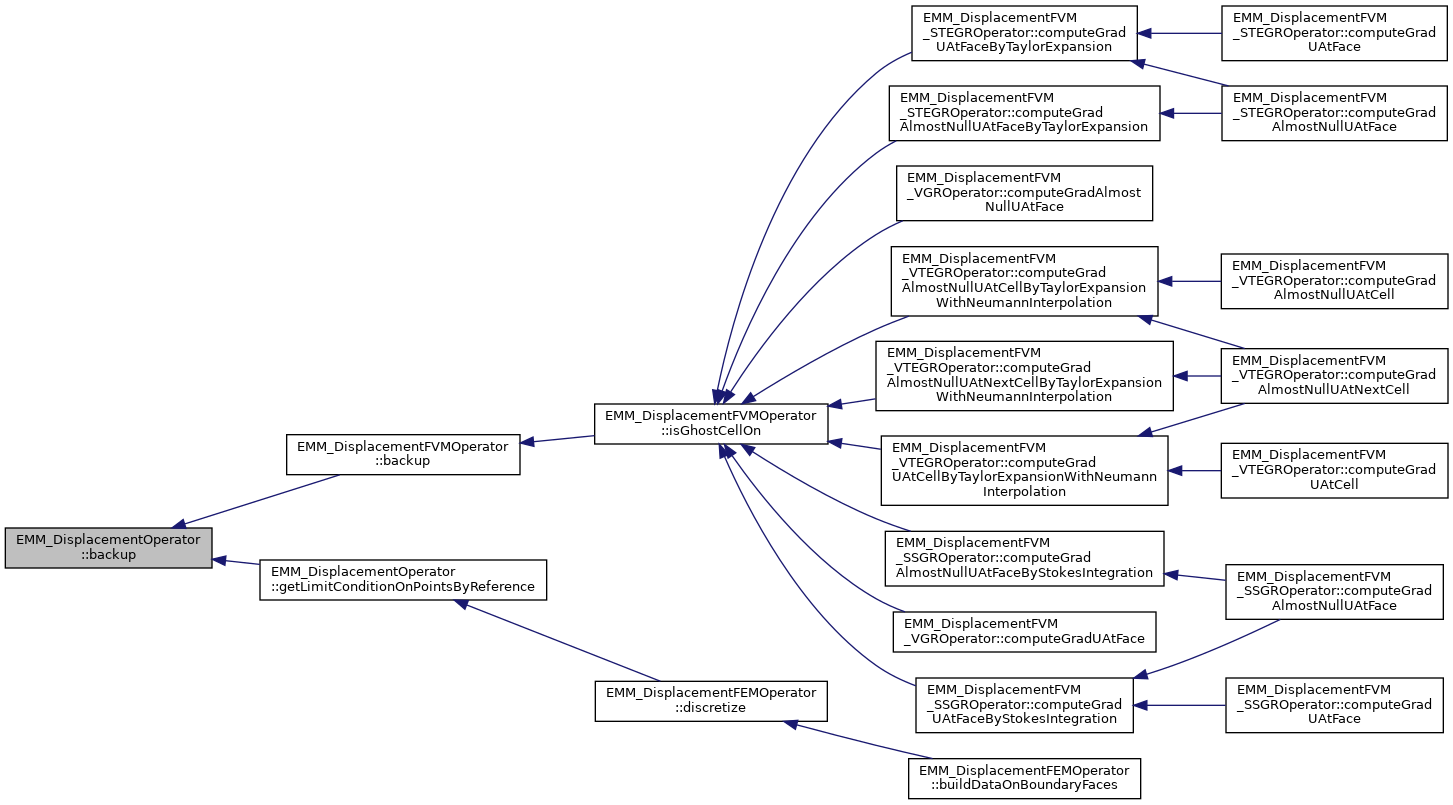
◆ buildDataOnBoundaryFaces()
|
pure virtual |
build the data on boundary faces
- Parameters
-
mesh : mesh of the domain limitConditionOnPoints : limit condition on points U0 : U at all points at t=0 DnU0 : grad UO . N at each point
discretize the limit condition into the linar solving space
Implemented in EMM_DisplacementFEMOperator, and EMM_DisplacementFVMOperator.
Referenced by getLimitConditionOnPointsByReference().

◆ computeAccelerator()
|
private |
compute the accelerator from the mass matrix : M.X=V V:=X
- Parameters
-
V - input : the stress
- output : the accelerator
- Returns
- true if the solving succeeds
- make a projection of the solving space : the accelearyor mudt be null on Dirichlet point
- solve the linear equation
- make a relevant of the solution
References solveAcceleratorSystem(), spaceProjection(), spaceRelevant(), and tBoolean.
Referenced by computeFieldsAtTimeWithGLnInterpolation(), restore(), setCFL(), and updateAtNextTimeStep().
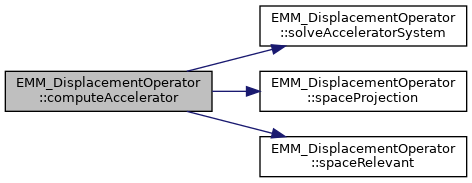
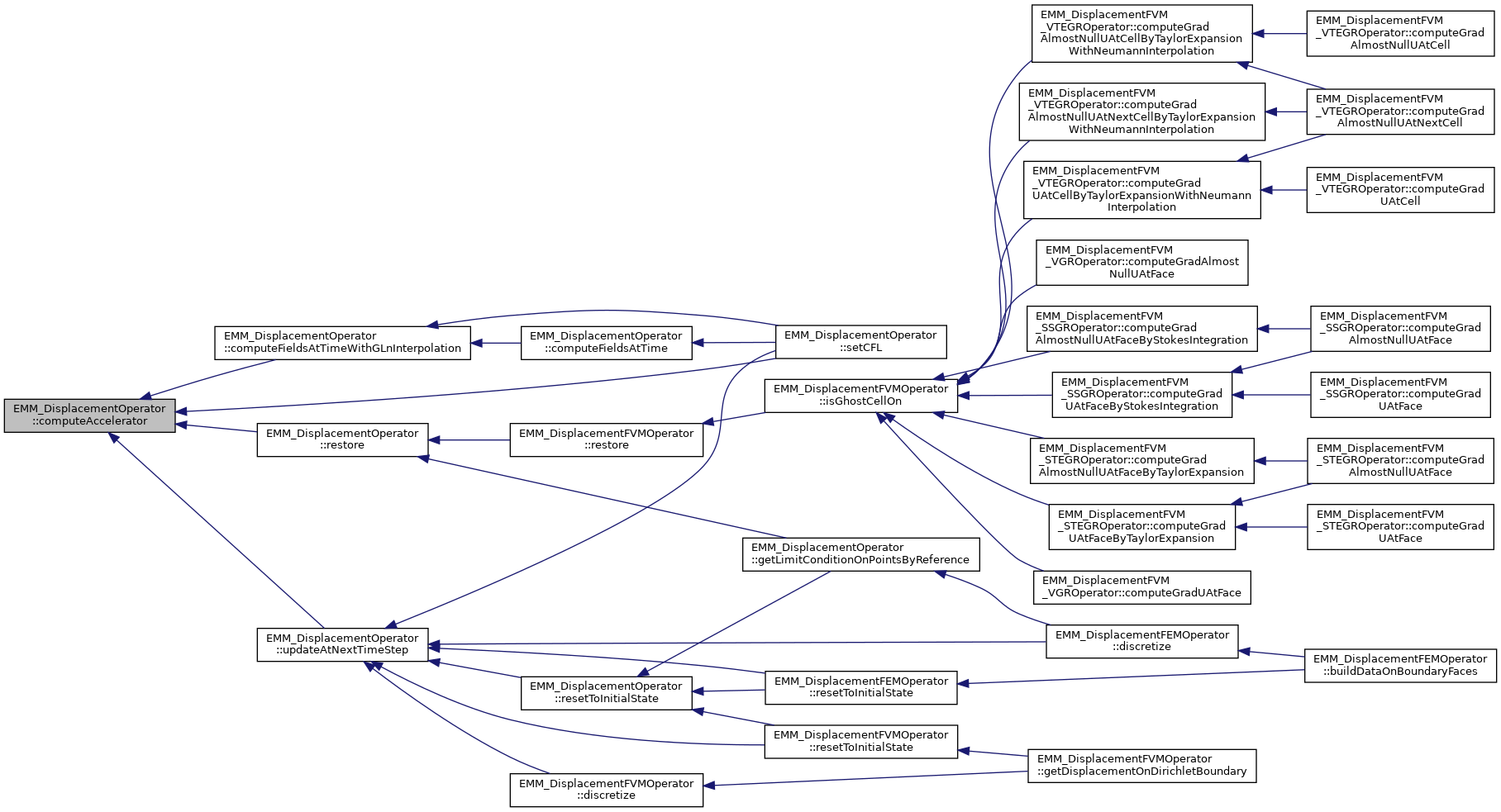
◆ computeCineticEnergy()
|
pure virtual |
compute the energy due to velocity
- Parameters
-
V velocity field
- Returns
- cinetic energy value

Implemented in EMM_DisplacementFEMOperator, and EMM_DisplacementFVMOperator.
Referenced by computeCineticEnergyAtTime().

◆ computeCineticEnergyAtTime()
compute the energy due to velocity
- Parameters
-
t time in [0,dt[ where dt is the time step
- Returns
- cinetic energy value

References computeCineticEnergy(), getVelocity(), and tReal.
Referenced by computeEnergy().

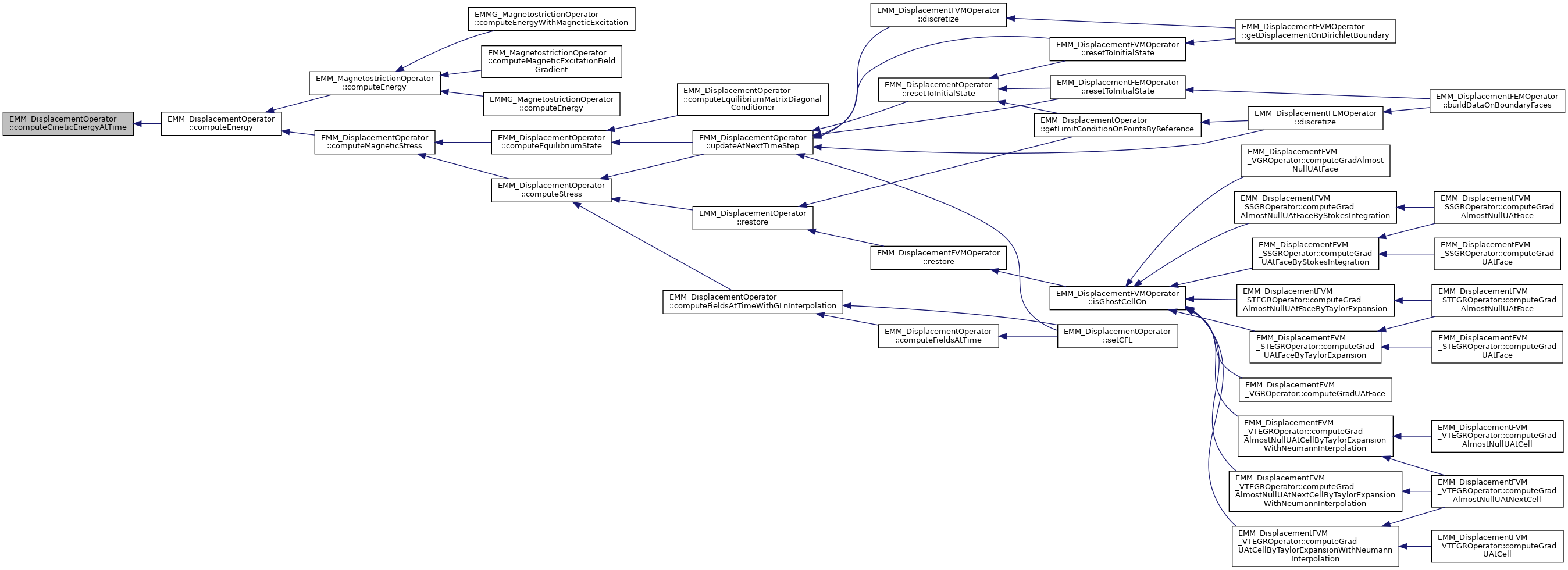
◆ computeElasticStress() [1/3]
|
inlinevirtual |
compute the elastic stress for all cells 
- Parameters
-
U the displacement field S the elastic stress field
It computes:
 where
where
 is the s-coordinate of the displacement u at cell i when s is in [0,d[ and d is the dimension of the space (i.e. 3).
is the s-coordinate of the displacement u at cell i when s is in [0,d[ and d is the dimension of the space (i.e. 3). is the r-coordinate of points in cell
is the r-coordinate of points in cell
Reimplemented in EMMG_DisplacementFVM_VOGGROperator, EMMG_DisplacementFVM_SSGROperator, EMMG_DisplacementFVM_STEGROperator, EMMG_DisplacementFVM_VTEGROperator, and EMMG_DisplacementFEMOperator.
References EMM_RealField::getDimension(), EMM_RealField::getValues(), tDimension, tReal, and tUIndex.
Referenced by computeElasticStress(), computeElasticStressMatrixProduct(), computeStress(), and initializeEquilibriumSolver().

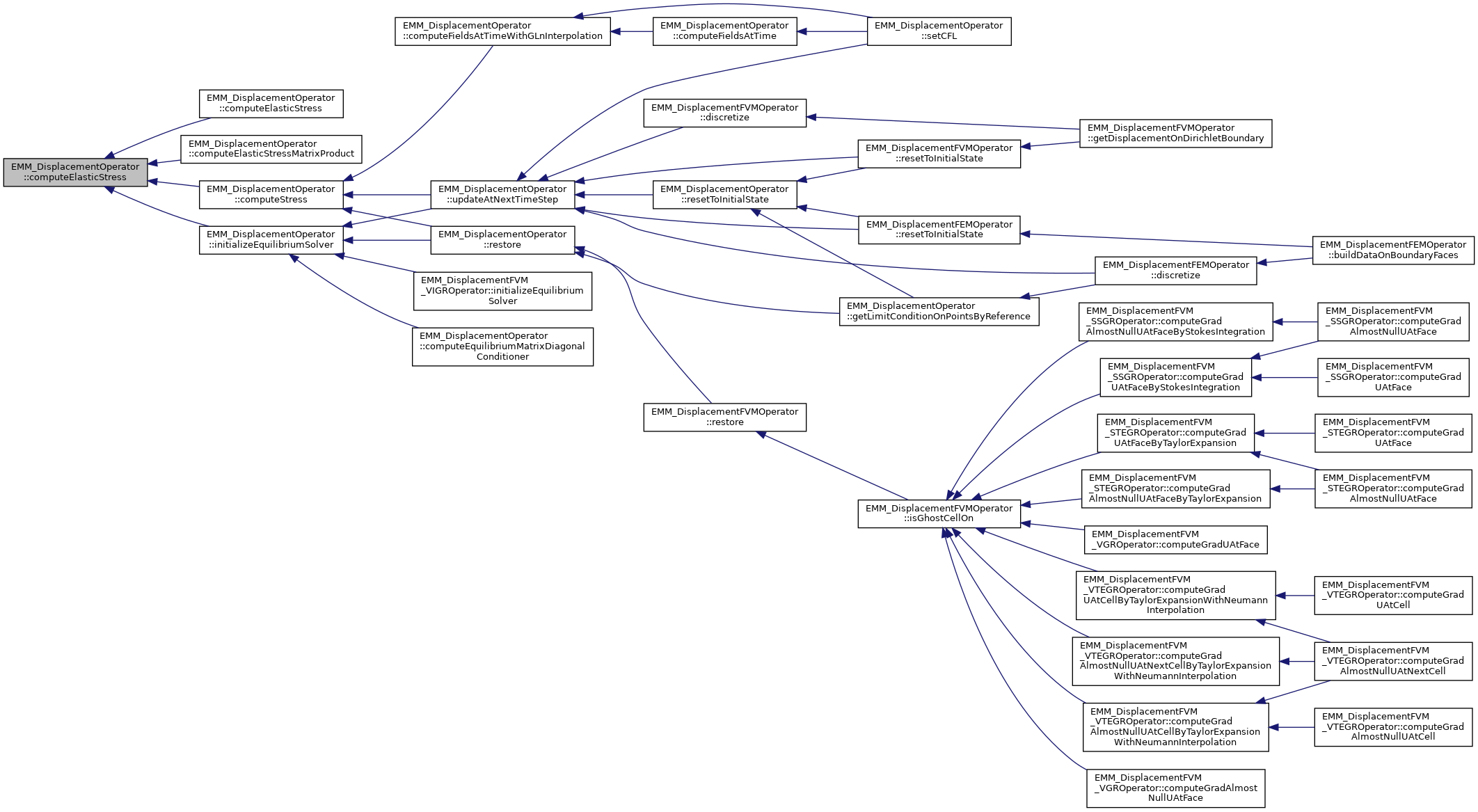
◆ computeElasticStress() [2/3]
|
inline |
compute the elastic stress 
- Parameters
-
nData number of data for U (nCells or nVertices depending on the method) dim dimension of the problem in [1,3] U the displacement field values D the elastic stress of size nData*dim
It computes 
![$ \forall d \in [0,3[, \forall q \in [0,P[, B[3q+d]= \displaystyle - \sum_{c \in V(P_q)} \int_{\omega_c} \sum_{p=0}^{p=8} \sum_{lrs} \left ( \lambda^c_{dlrs} u_{i_P}^s(t)\frac{\partial \Phi_p }{\partial x_r } \frac{\partial \Phi_q }{\partial x_l} \right ) d\omega $](form_980.png)
where  is the index of the p-th point into cell
is the index of the p-th point into cell  , P is the number of interior magnetized points and
, P is the number of interior magnetized points and  is the set of cells connected to point q.
is the set of cells connected to point q.
Algorithm:
- D=0, initialize to 0
- pts={[0,0,0],[1,0,0],[0,1,0],[1,1,0],[0,0,1],[1,0,1],[0,1,1],[1,1,1]} local coordinates of cell points.


 index of the cell c
index of the cell c- if iCell is in magnetized domain
 of size 3x3x3x3
of size 3x3x3x3 loop on nodes of cell iCell of local coordinate
loop on nodes of cell iCell of local coordinate  .
.- iP is the global index of local point p
- iP=(i+Px)+Nx*(j+Py)+Nx.Ny.(k+Pz)
 with
with
References computeElasticStress(), tBoolean, tDimension, tReal, and tUIndex.

◆ computeElasticStress() [3/3]
|
protectedpure virtual |
compute the elastic stress  which is an affine operator
which is an affine operator  where
where
- A is symmetric definite positive which is the linear part of the affine operator
 is the constant part of the affine operator
is the constant part of the affine operator is the Dirichlet values of the field
is the Dirichlet values of the field is the applied forces
is the applied forces
- Parameters
-
withConstraints : if true compute the whore opertaor if false, compute only the linear part of operator beta factor of the strees to turn intto definite positive/negative matrix nData number of data for U (nCells or nVertices depending on the method) dim dimension of the problem in [1,3] U the displacement field values D the elastic stress of size nData*dim
Implemented in EMM_DisplacementFEMOperator, and EMM_DisplacementFVMOperator.
◆ computeElasticStressMatrixProduct()
|
inlinevirtual |
compute the elastic stress Matrix product 
- Parameters
-
nData number of data for U (nCells or nVertices depending on the method) dim dimension of the problem in [1,3] U the displacement field values D the elastic stress of size nData*dim
make the computation of A.U=-S_e.U for the elastic equilibrium matrix product with null constraints
Reimplemented in EMM_DisplacementFVM_VIGROperator.
References computeElasticStress(), computeElasticTensor(), tDimension, tReal, and tUIndex.

◆ computeElasticTensor() [1/2]
|
virtual |
compute the elastic tensor for all cells 
- Parameters
-
U the displacement field eTensor the elastic tensor of size 3x3 stored in row-packed symmetric upper matrix array of size 6
![$ \forall (r,s) \in [0,3[^2, \varepsilon_{rs}= \displaystyle \frac{1}{2}\left ( \frac{\partial u_r}{\partial x_s} + \frac{\partial u_s}{\partial x_r} \right )=eTensor[r+(s*(s+1)/2)]$](form_681.png) where
where
 is the r-coordinate of the displacement u
is the r-coordinate of the displacement u is the s-coordinate of point in cell
is the s-coordinate of point in cell
Reimplemented in EMM_DisplacementFVMOperator, and EMM_DisplacementFVM_VIGROperator.
References EMM_RealField::getDimension(), EMM_RealField::getValues(), tDimension, tReal, and tUIndex.
Referenced by computeElasticStressMatrixProduct(), EMM_DisplacementFVMOperator::computeElasticTensor(), computeFieldsAtTime(), restore(), and updateAtNextTimeStep().

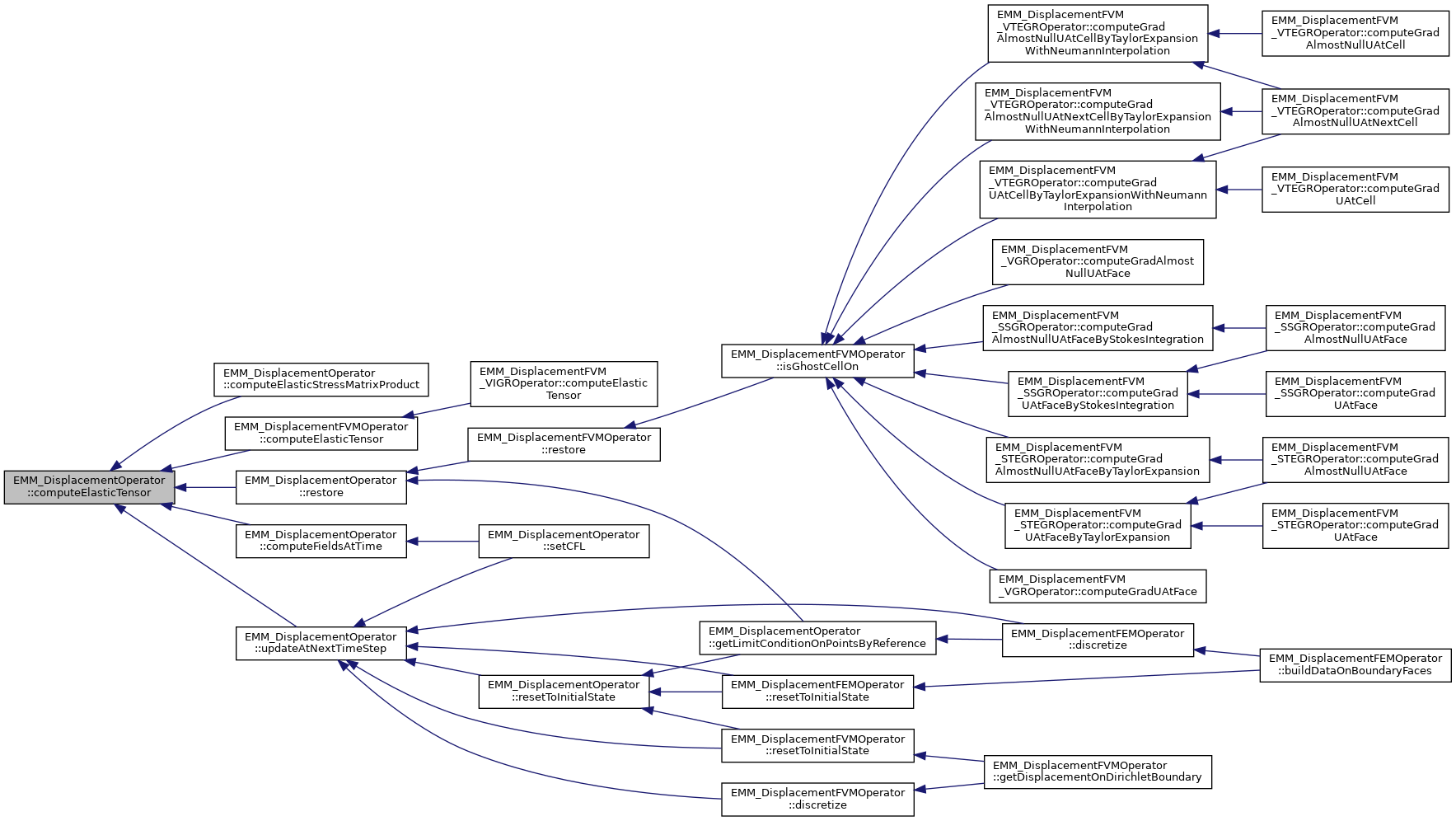
◆ computeElasticTensor() [2/2]
|
protectedpure virtual |
compute the elastic tensor for all cells 
- Parameters
-
nData size of the displacement field dim dimension of the displacement field U values of the displacement field of size nData x dim eTensor the elastic tensor of size 3x3 stored in column-packed symmetric upper matrix array of size 6
![$ \forall (r,s) \in [0,3[^2, \varepsilon_{rs}= \displaystyle \frac{1}{2}\left ( \frac{\partial u_r}{\partial x_s} + \frac{\partial u_s}{\partial x_r} \right )=eTensor[r+(s*(s+1)/2)]$](form_681.png) where
where
 is the r-coordinate of the displacement u
is the r-coordinate of the displacement u is the s-coordinate of point in cell
is the s-coordinate of point in cell
Implemented in EMM_DisplacementFEMOperator, and EMM_DisplacementFVMOperator.
◆ computeEnergy()
| tReal EMM_DisplacementOperator::computeEnergy | ( | const tReal & | t, |
| const tUIndex & | nCells, | ||
| const tDimension & | dim, | ||
| const EMM_RealArray & | sigma, | ||
| const tReal * | M | ||
| ) | const |
compute the energy of the magnetostriction operator at current displacement and velocity
- Parameters
-
t the time in [0,dt[ where dt is the time step nCells : number of cells dim dimension of each point of mesh sigma the weight of each cell M the magnetization field values
- Returns
- energy value :
![$ E(m,u)=\displaystyle \frac{1}{2} \int_\omega \sigma^4(x)[\tilde \lambda^e:(\tilde \lambda^m:m \otimes m)]:(\tilde \lambda^m:m \otimes m) d\omega $](form_992.png)



References computeCineticEnergyAtTime(), computePotentialEnergyAtTime(), computeStressConstraintEnergy(), getConstraints(), getElasticTensor(), EMM_Operator::getElementVolume(), CORE_Array< T >::getSize(), CORE_Object::getThread(), isEquilibriumState(), mLme, CORE_Thread::startChrono(), tBoolean, tReal, and tString.
Referenced by EMM_MagnetostrictionOperator::computeEnergy(), and computeMagneticStress().
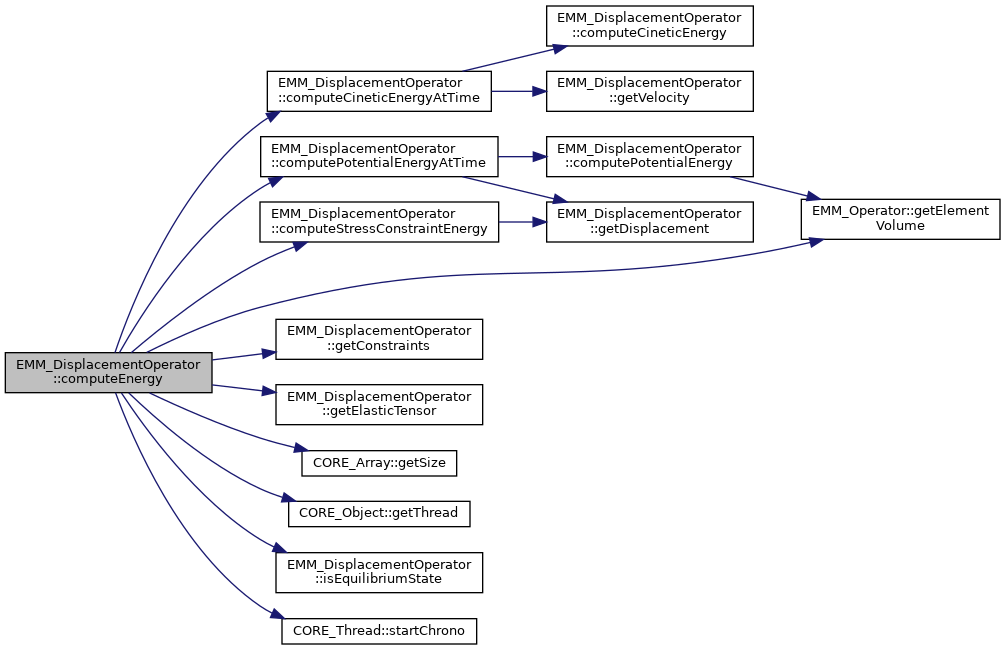
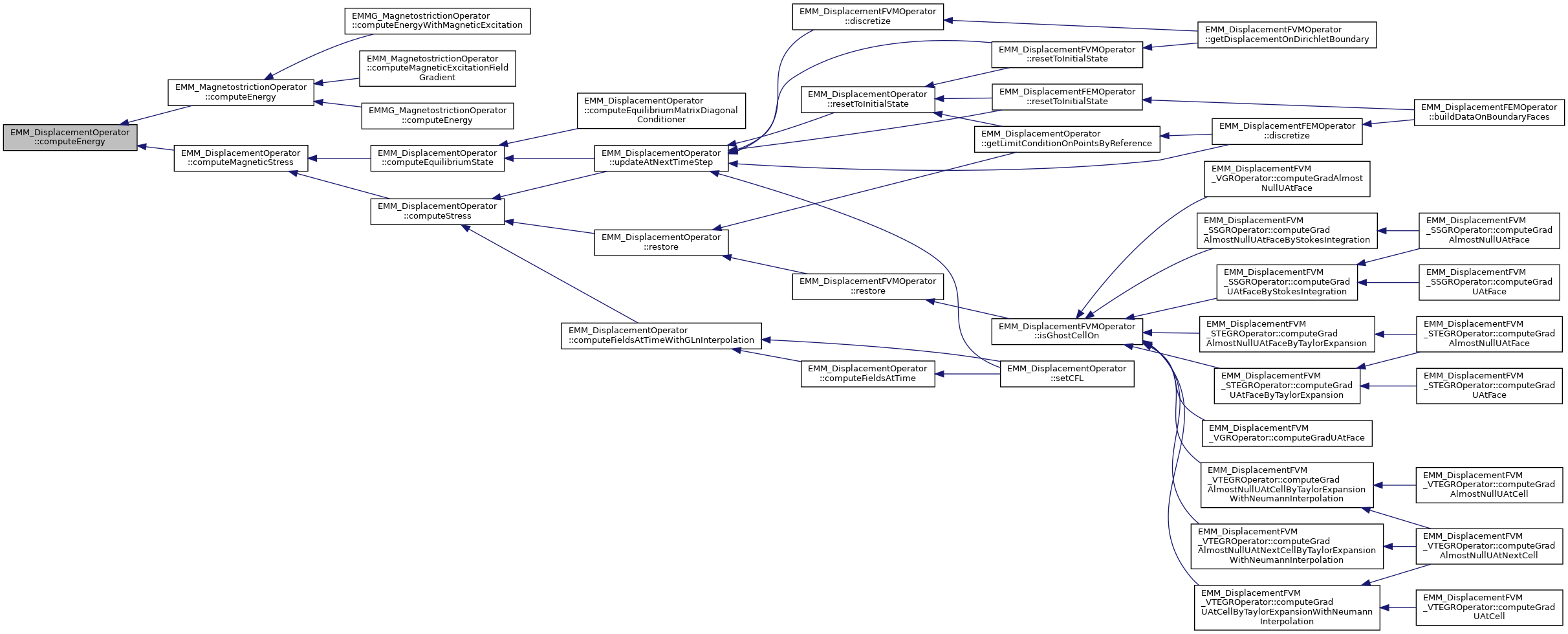
◆ computeEpsilon()
|
inlinestaticinherited |
compute epsilon
- Returns
- the epsilon value eps=10^{-p/3} where p is defined by getEpsilon()=10^{-p}
◆ computeEquilibriumMatrixDiagonalConditioner()
|
inlinevirtual |
compute the diagonal conditioner
- Parameters
-
[out] D is the diagonal conditioner of the equilibrium matrix by defualt the diagonal matrix is the identity (its size if set to 0);
Reimplemented in EMM_DisplacementFEMOperator, and EMM_DisplacementFVMOperator.
References computeEquilibriumState(), initializeEquilibriumSolver(), MATH_Vector::setSize(), and tBoolean.
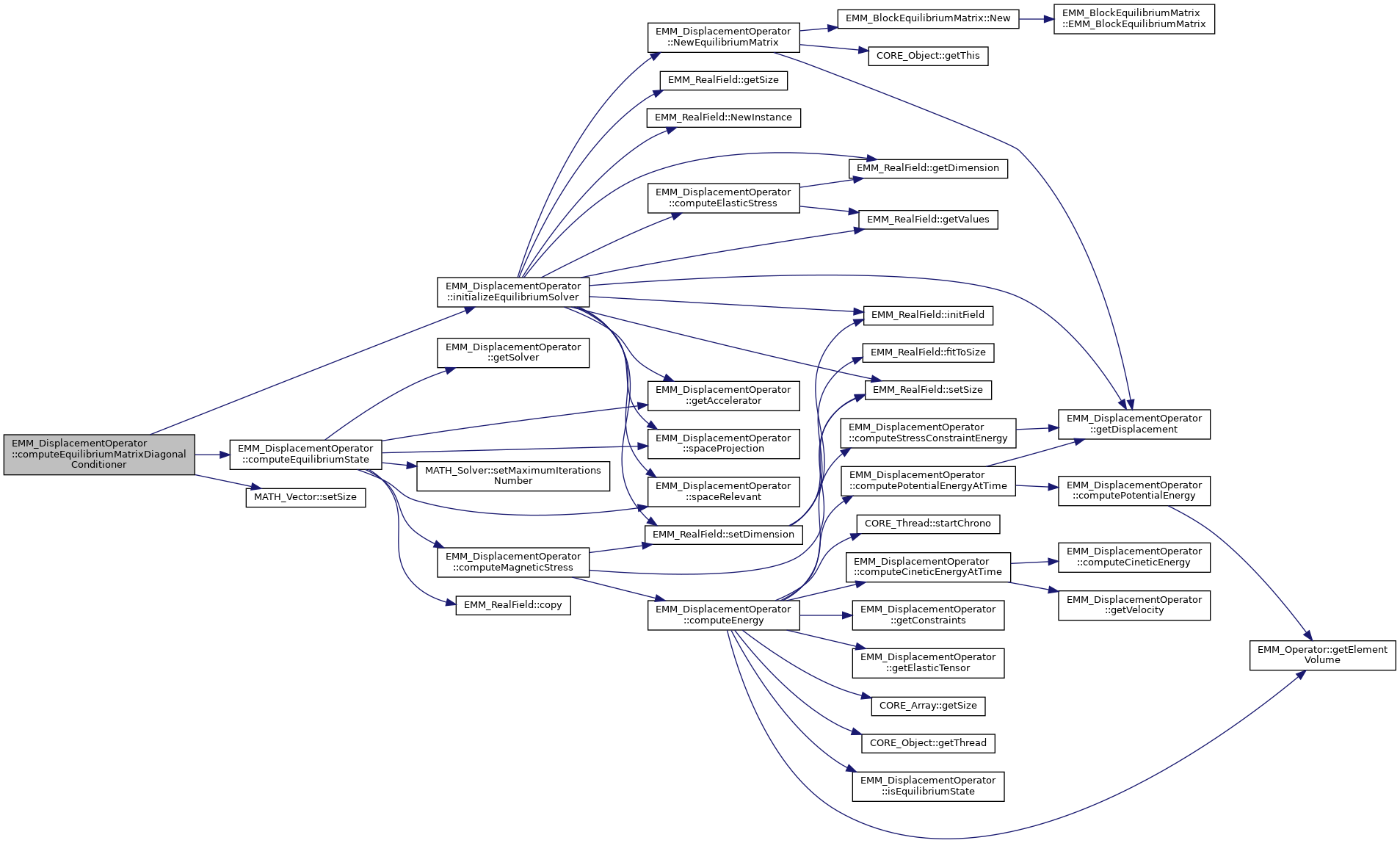
◆ computeEquilibriumState()
| tBoolean EMM_DisplacementOperator::computeEquilibriumState | ( | const EMM_RealArray & | sigma, |
| const EMM_RealField & | M, | ||
| const EMM_RealField & | U0, | ||
| EMM_RealField & | U | ||
| ) |
compute the equilibirum state 
- Parameters
-
[in] sigma : the weight array due to unhomegeneous magnetization at saturation [in] M : the magnetization field [in] U0 : the displacement field at dirichlet point [out] U the dispacement field at equilibrium
- Returns
- true if the solving succeeds
- compute the right hand side of the equation

- make a projection of W into f the solving space (W=U0 on Dirichlet point) in order to ensure that U=U_0 on Dirichlet boundary
- solve the linear equation with a conjugate gradient method
 S_e is diagonla for derichlet point
S_e is diagonla for derichlet point - make a relevant of the solution (Us=Um for slave/master points)
- compute the right hand side of the equation
References computeMagneticStress(), EMM_RealField::copy(), getAccelerator(), getSolver(), mEquilibriumMatrix, mUt, MATH_Solver::setMaximumIterationsNumber(), spaceProjection(), spaceRelevant(), and tBoolean.
Referenced by computeEquilibriumMatrixDiagonalConditioner(), and updateAtNextTimeStep().
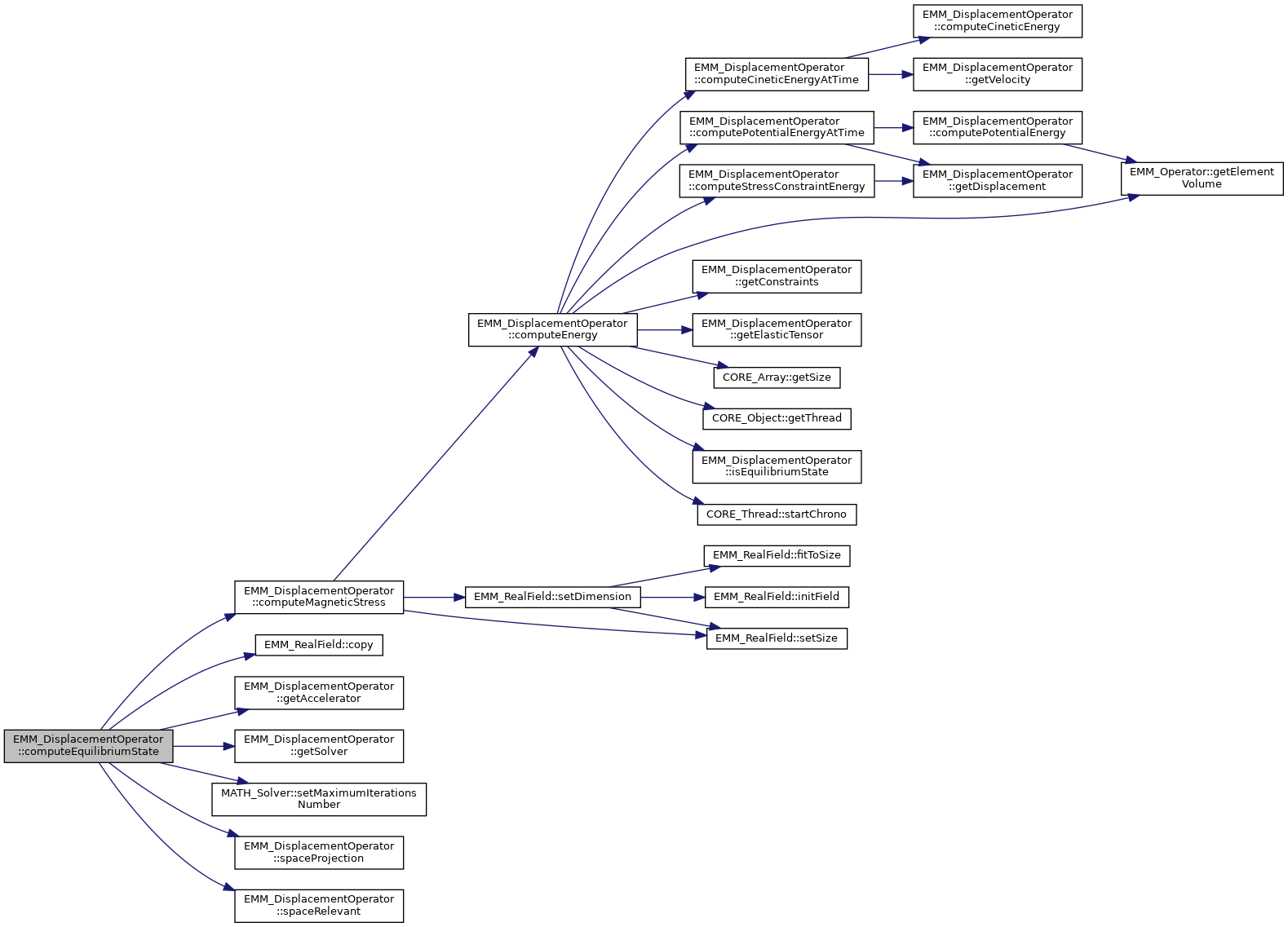

◆ computeFieldsAtTime()
|
virtual |
compute the fields of operator at time
- Parameters
-
t the time order order of integration of the fields sigma the magnetized weight of each cell dM_dt0 the variation of M at time 0 M0 the magnetization field at each point at time t 0
- Returns
- true if the computation has succeeded.
compute fields at time from M and its first time derivative
Implements EMM_Operator.
References computeElasticTensor(), computeFieldsAtTimeWithGL1Interpolation(), computeFieldsAtTimeWithGLnInterpolation(), computeFieldsAtTimeWithTE1(), computeFieldsAtTimeWithTE2(), isSteadyState(), mAccelerator, mDt, mEpsilonUt, mMs, mTimeIntegrationMethod, mTimeIntegrationOrder, mUn, mUnm1, mUs, mUt, mVn, mVt, P1, tBoolean, TE, and tFlag.
Referenced by setCFL().
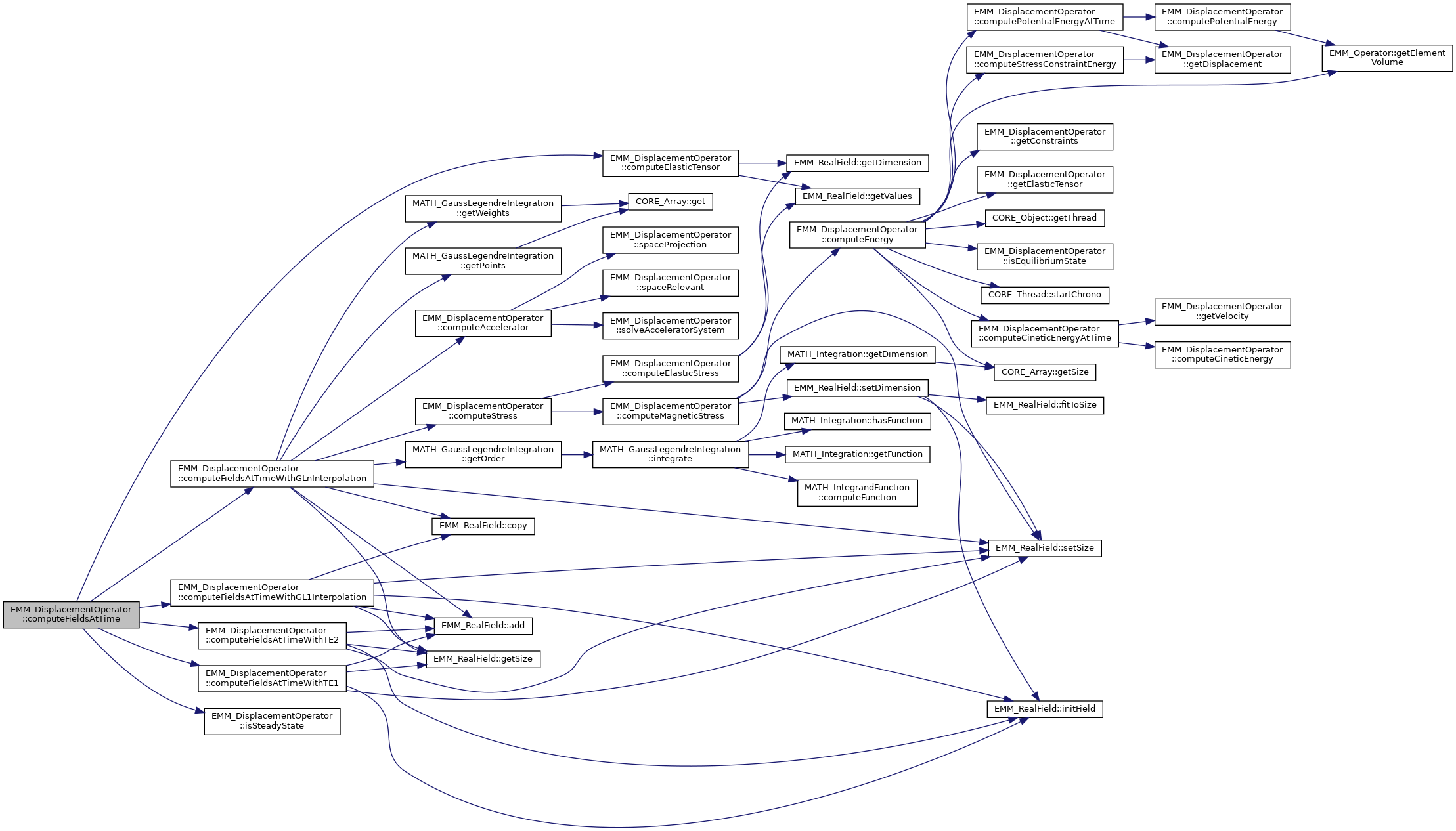

◆ computeFieldsAtTimeWithGL1Interpolation()
|
private |
compute the new U & V at by gauss legendre interpolation of degre N (N=1)
- Parameters
-
dt the time step sigma the magnetized weight of each cell dM_dt0 : the magnetization field variation at time 0 M0 the magnetization field at time 0 U0 the displacement field at time 0 V0 the velocity field at time 0 Ut the returned displacement field at time t Vt the returned velocity field at time t
The new M is given by the formula: 
 where
where 
References EMM_RealField::add(), EMM_RealField::copy(), EMM_RealField::getSize(), EMM_RealField::initField(), mAccelerator, and EMM_RealField::setSize().
Referenced by computeFieldsAtTime(), and setCFL().
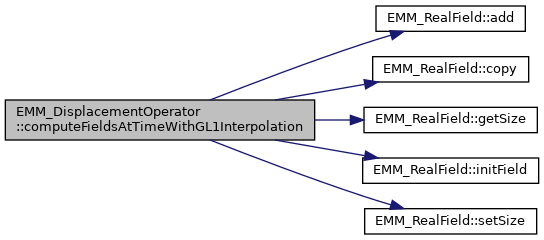

◆ computeFieldsAtTimeWithGLnInterpolation()
|
private |
compute the new U & V at by gauss legendre interpolation of degre N (N=4)
- Parameters
-
dt the time step sigma the magnetized weight of each cell dM_dt0 : the magnetization field variation at time 0 M0 the magnetization field at time 0 U0 the displacement field at time 0 V0 the velocity field at time 0 Ut output displacement field at time dt Vt output velocity field at time dt Us working displacement field at time s.dt Ms working magnetization field at time s.dt
- Returns
- true if the GL integrator has succeeded
M variation in [0,dt[:
U Variation in [0,dt[ :
V variation in [0,dt[
References EMM_RealField::add(), computeAccelerator(), computeStress(), EMM_RealField::copy(), MATH_GaussLegendreIntegration::getOrder(), MATH_GaussLegendreIntegration::getPoints(), EMM_RealField::getSize(), MATH_GaussLegendreIntegration::getWeights(), mAccelerator, mAccelerator_t, mIntegrator, mKappa, EMM_RealField::setSize(), tBoolean, tReal, tUIndex, and tUSInt.
Referenced by computeFieldsAtTime(), and setCFL().
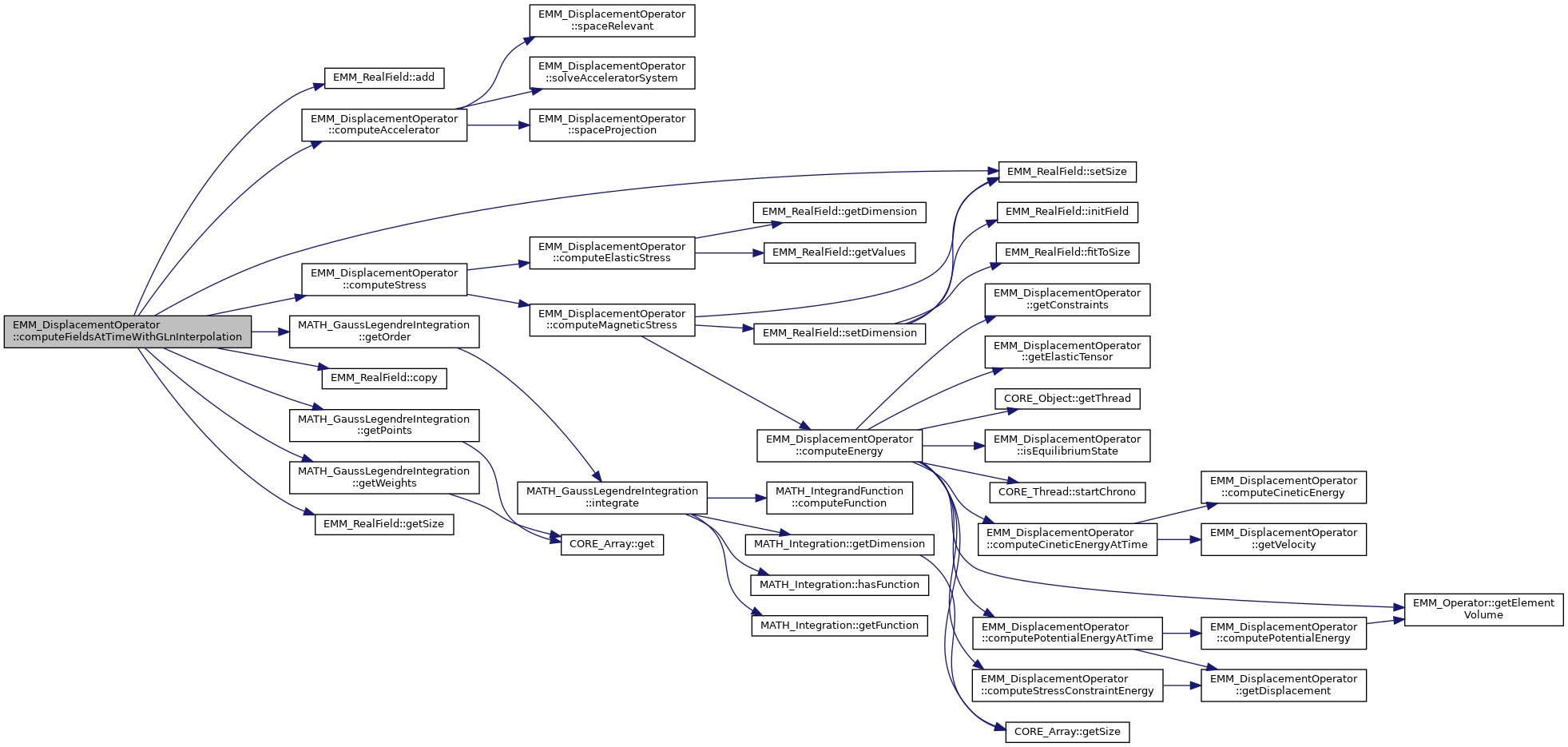

◆ computeFieldsAtTimeWithTE1()
|
private |
compute the new U & V at by taylor extension of order 2
- Parameters
-
dt the time step 
accelerator : the accelerator d^2U/dt^2 at each cell 
U0 the displacement U at time 
V0 the velocity field V at time 
U1 the OUTPUT displacement U at time 
V1 the OUTPUT velocity V at time 


References EMM_RealField::add(), EMM_RealField::getSize(), EMM_RealField::initField(), and EMM_RealField::setSize().
Referenced by computeFieldsAtTime(), and setCFL().
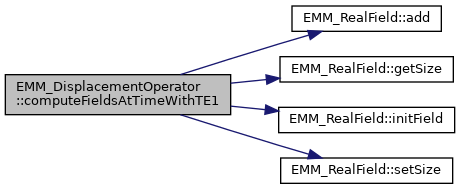

◆ computeFieldsAtTimeWithTE2()
|
private |
compute the new U & V at by taylor extension of order 2
- Parameters
-
dtau the time step 
dt the time step 
accelerator : the accelerator d^2U/dt2 at each cell 
U0 the displacement U at time 
U1 the displacement U at time 
U2 the OUTPUT displacement U at time 
V2 the OUTPUT velocity V at time 
 and
and  ,
,

 with
with 
References EMM_RealField::add(), EMM_RealField::getSize(), EMM_RealField::initField(), EMM_RealField::setSize(), and tReal.
Referenced by computeFieldsAtTime(), and setCFL().
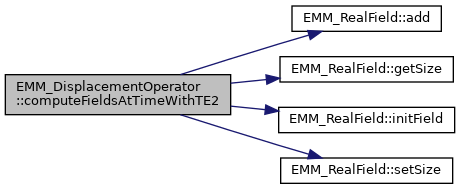

◆ computeMagneticStress() [1/3]
|
inline |
compute the magnetic stress for all cells 
- Parameters
-
[in] sigma magnetized weight for each cell [in] M the magnetization field [out] S the magnetic stress dield
It computes:
 where
where
 is the s-coordinate of the magnetization field M at cell i when s is in [0,d[ and d is the dimension of the space (i.e. 3).
is the s-coordinate of the magnetization field M at cell i when s is in [0,d[ and d is the dimension of the space (i.e. 3). is the r-coordinate of center of cell
is the r-coordinate of center of cell
References computeEnergy(), EMM_RealField::setDimension(), EMM_RealField::setSize(), tDimension, tReal, and tUIndex.
Referenced by computeEquilibriumState(), and computeStress().
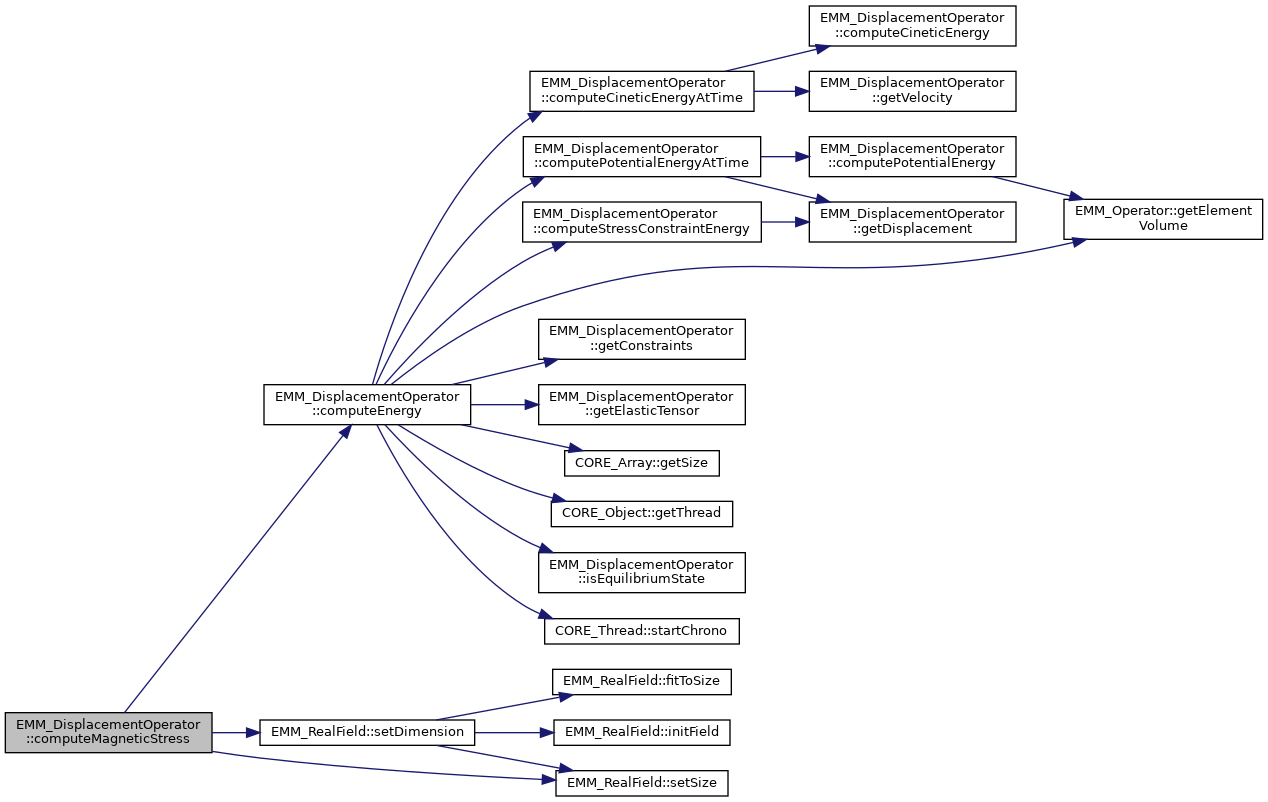
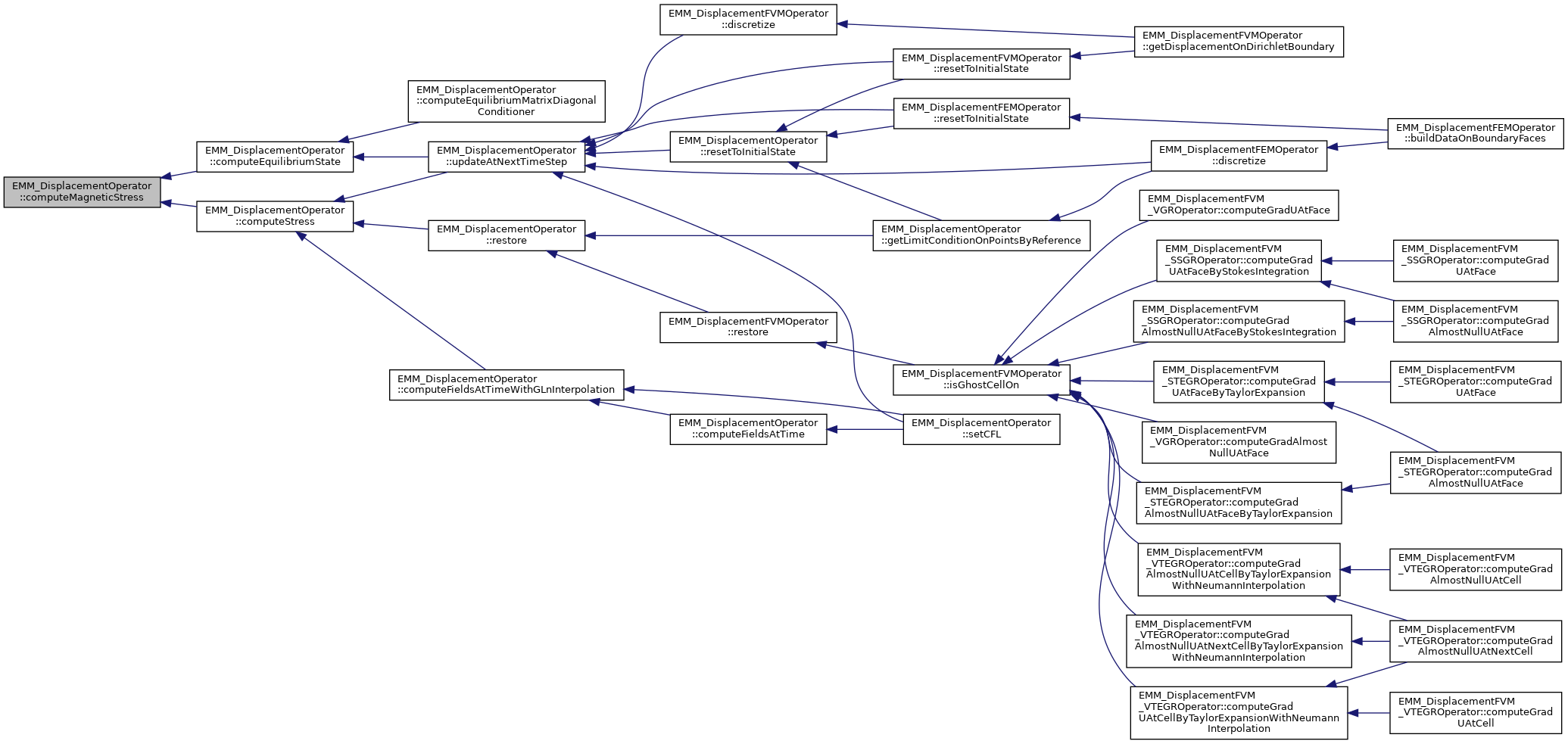
◆ computeMagneticStress() [2/3]
|
pure virtual |
compute the magnetic stress for all cells from the stress 
- Parameters
-
[in] alpha : multiplicator factor for S [in] beta : multiplicator factor for magnetic stress [in] sigma the magnetized weight of cells [in] M the magnetization field [in,out] S the total stress field
It computes:
 where
where
 is the s-coordinate of the magnetization field M at cell i when s is in [0,d[ and d is the dimension of the space (i.e. 3).
is the s-coordinate of the magnetization field M at cell i when s is in [0,d[ and d is the dimension of the space (i.e. 3). is the r-coordinate of center of cell
is the r-coordinate of center of cell
Implemented in EMMG_DisplacementFVM_VOGGROperator, EMMG_DisplacementFVM_SSGROperator, EMMG_DisplacementFVM_STEGROperator, EMMG_DisplacementFVM_VTEGROperator, and EMMG_DisplacementFEMOperator.
◆ computeMagneticStress() [3/3]
|
protectedpure virtual |
compute the magnetic stress  to elastic stress S
to elastic stress S
- Parameters
-
[in] alpha : multiplicator factor for S [in] beta : multiplicator factor for magnetic stress [in] nCells the size of the magnetism value [in] dim dimension of the problem in [1,3] [in] sigma weight of each cell [in] M the magnetization field values of size nCells x dim [in] nS size of stress field values [in,out] S the stress in input the elastic stress , in output the total stress of size nData x dim
Implemented in EMM_DisplacementFEMOperator, and EMM_DisplacementFVMOperator.
◆ computePastDisplacement()
|
private |
compute  from
from  and
and  with time step dt
with time step dt
- Parameters
-
dt time step  .
. accelerator d2U/dt^2 at t=0 U0 displacement field at t=0 V0 : velocity field at t=0 U : OUTPUT displacement field at t=t_{-1}

References EMM_RealField::add(), and EMM_RealField::copy().
Referenced by setCFL(), and updateAtNextTimeStep().


◆ computePotentialEnergy()
|
virtual |
compute the potential energy to the space variation of the displacement
- Parameters
-
U displacement field
- Returns
- potential energy value

Reimplemented in EMM_DisplacementFEMOperator, and EMM_DisplacementFVMOperator.
References EMM_Operator::getElementVolume(), mEpsilonUt, mLe, and tReal.
Referenced by EMM_DisplacementFVMOperator::computePotentialEnergy(), EMM_DisplacementFEMOperator::computePotentialEnergy(), and computePotentialEnergyAtTime().


◆ computePotentialEnergyAtTime()
compute the potential energy to the space variation of the displacement
- Parameters
-
t time in [0,dt[ where dt is the time step
- Returns
- potential energy value

References computePotentialEnergy(), getDisplacement(), and tReal.
Referenced by computeEnergy().

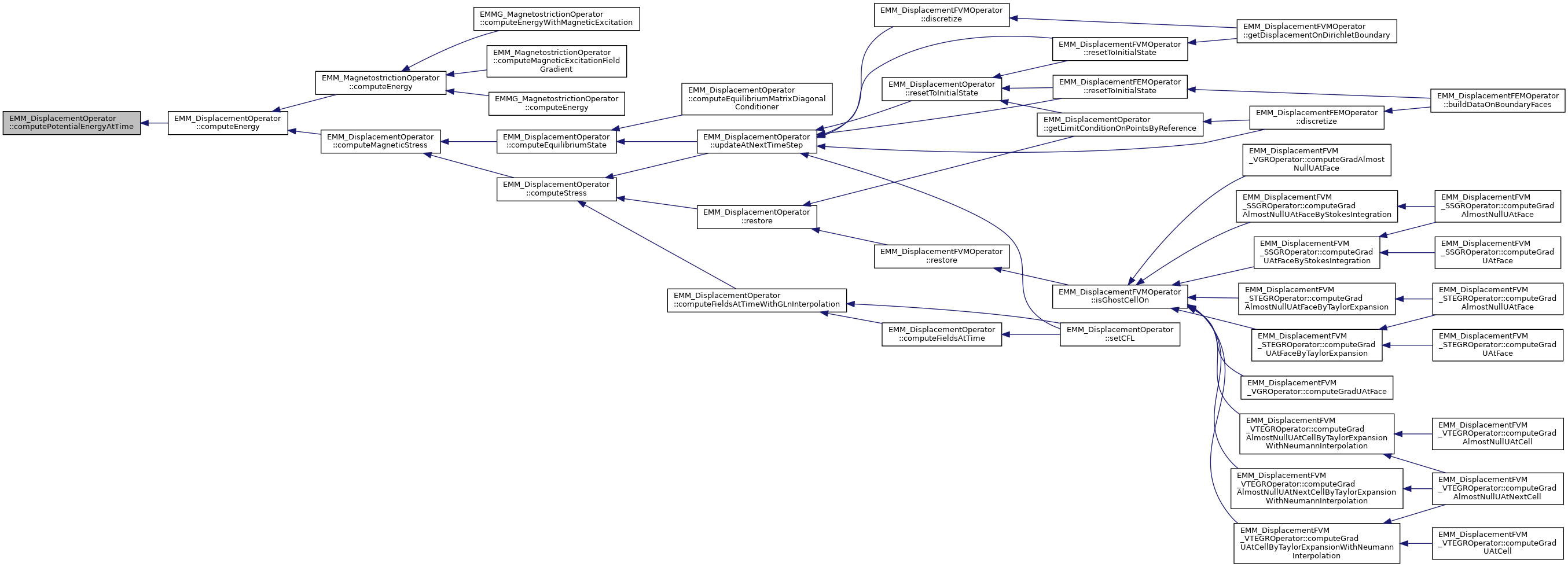
◆ computeStress()
|
inline |
compute the stress 
- Parameters
-
sigma magnetized weight for each cell U the displacement field M the magnetization field stress the divergence stress field
It calls:
- EMM_DisplacementOPerator::computeElasticStress();
- EMM_DisplacementOperator::computeMagneticStress();
References computeElasticStress(), and computeMagneticStress().
Referenced by computeFieldsAtTimeWithGLnInterpolation(), restore(), and updateAtNextTimeStep().
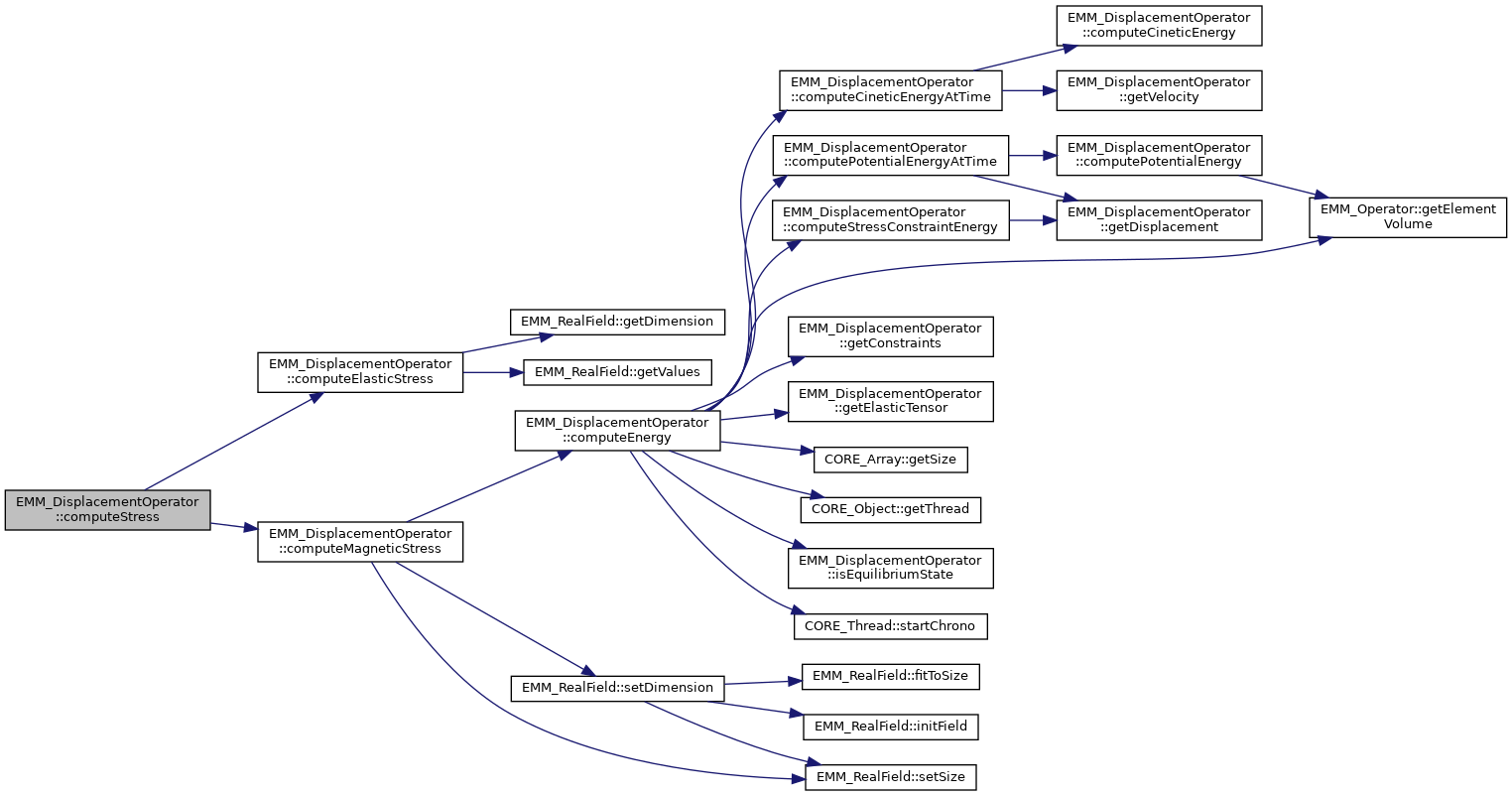
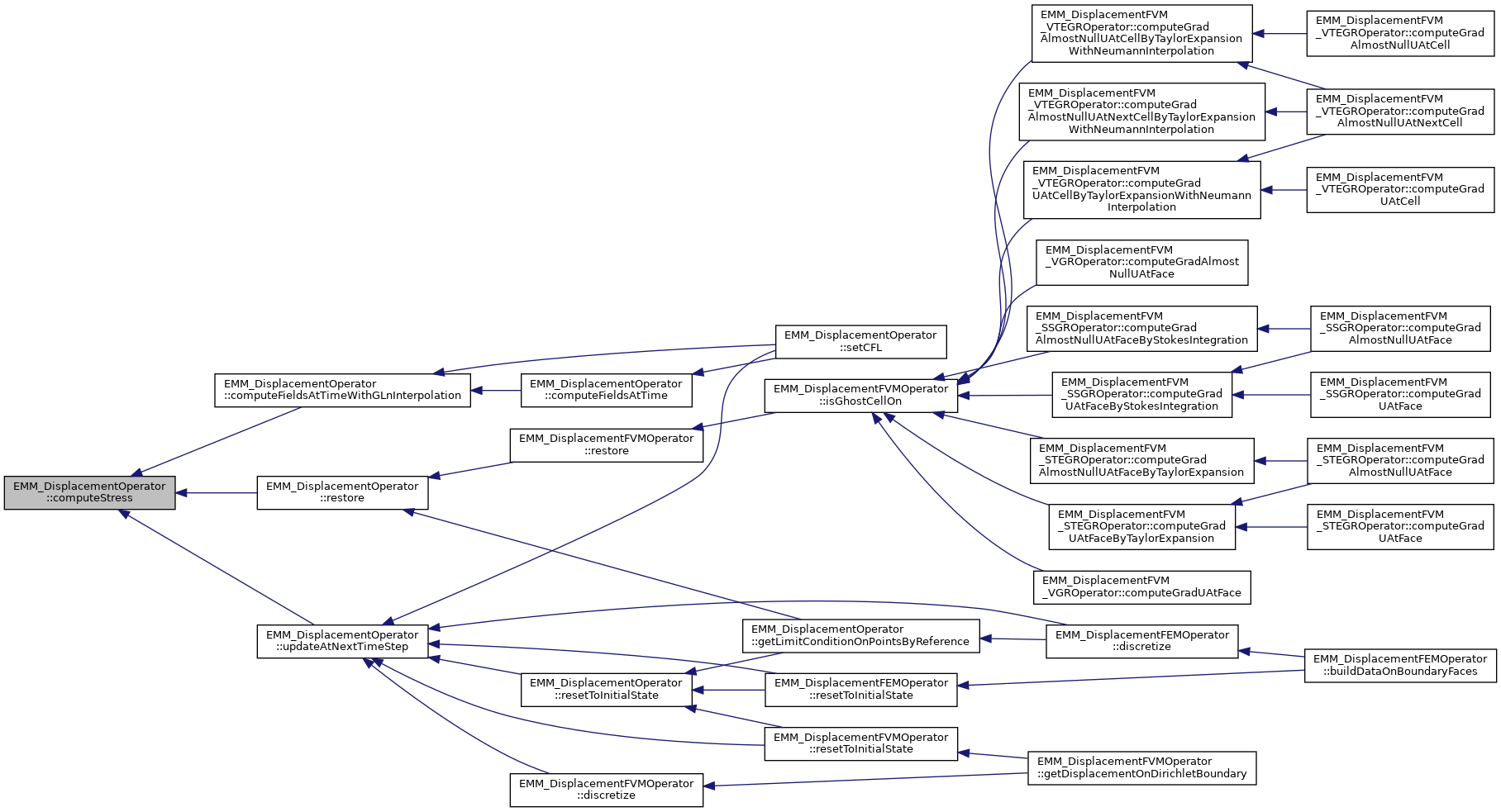
◆ computeStressConstraintEnergy() [1/2]
compute the energy of the boundary stress constraint
- Parameters
-
t time in [0,dt[ where dt is the time step
References getDisplacement(), and tReal.
Referenced by computeEnergy().

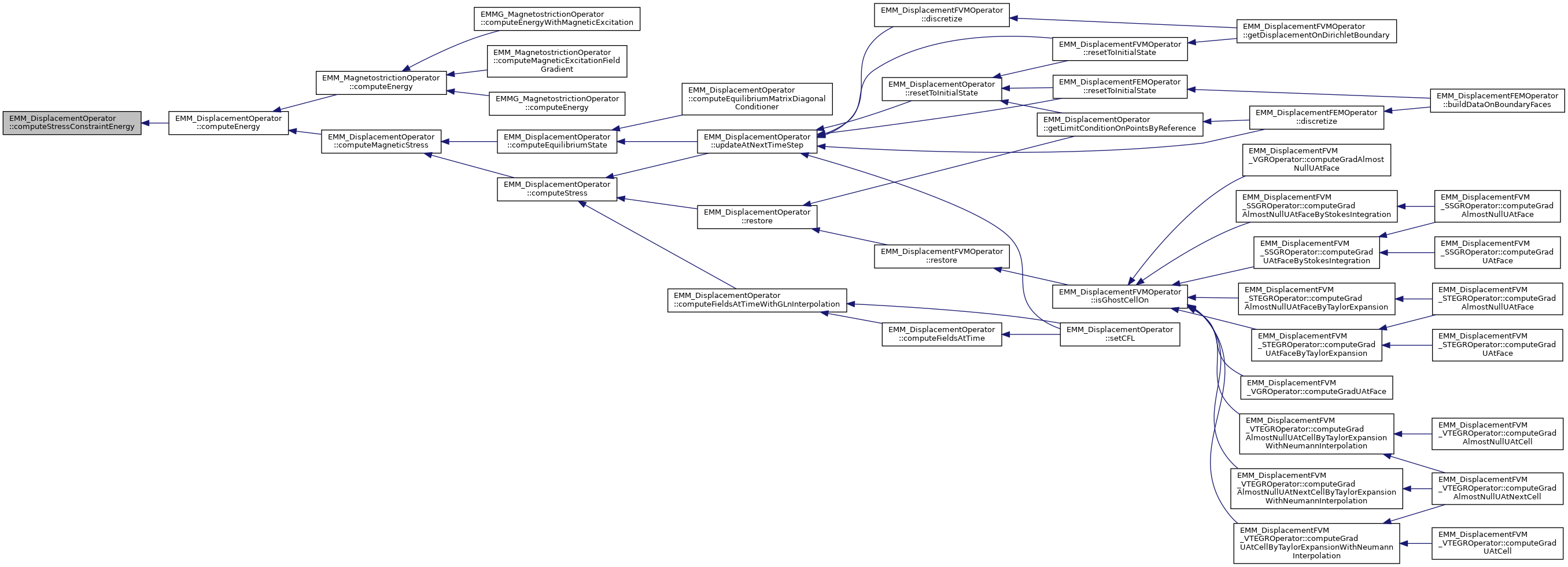
◆ computeStressConstraintEnergy() [2/2]
|
pure virtual |
compute the energy of the stress constraint with displacemet
- Parameters
-
U the displacement field
- Returns
- the stress constraint energy on boundary

Implemented in EMM_DisplacementFEMOperator, and EMM_DisplacementFVMOperator.
◆ discretize()
|
virtual |
discretize and initialize the operator
- Parameters
-
system the data to discretize the operator
- Returns
- true if it succeeds
- crete the field U & V on the points of the mesh
- build the limit condition on all the points
- create the time step integrator
- create all the integrator fields
- compute the elastic time step
- initialize U & V
- project U & V on the working spaces
- build the data on boundaries
Reimplemented from EMM_Operator.
Reimplemented in EMM_DisplacementFEMOperator, and EMM_DisplacementFVMOperator.
References EMM_Grid3D::getAdimensionizedSegmentsSize(), EMM_Grid3D::getElementsNumber(), EMM_LandauLifschitzSystem::getMatterField(), EMM_MatterField::getMatterParameterDistribution(), EMM_LandauLifschitzSystem::getMesh(), EMM_Grid3D::getVerticesNumber(), mKappa, mL, mLmem, EMM_Matter::RHOd, tBoolean, tReal, tUIndex, and tUSInt.
Referenced by EMM_DisplacementFVMOperator::discretize(), EMM_DisplacementFEMOperator::discretize(), and getLimitConditionOnPointsByReference().
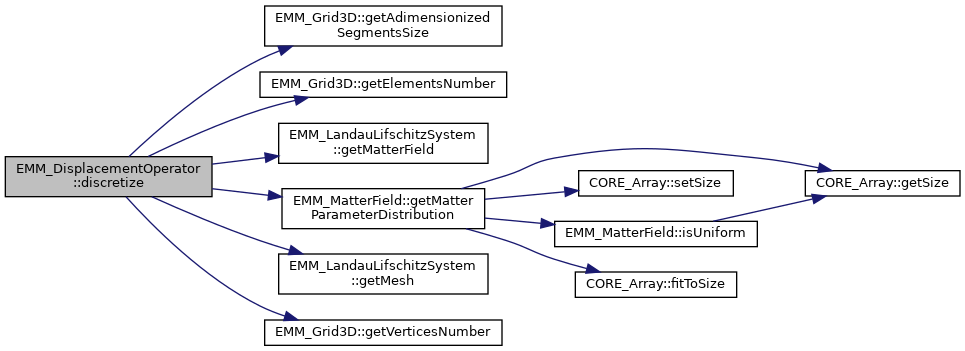

◆ getAccelerator() [1/2]
|
inline |
get the accelerator for writing
- Returns
- the accelerator field
Referenced by computeEquilibriumState(), EMM_DisplacementFVMOperator::discretize(), EMM_DisplacementFEMOperator::discretize(), EMM_DisplacementFVMOperator::getDataFieldSpace(), EMM_DisplacementFEMOperator::getDataFieldSpace(), EMM_DisplacementFVM_VIGROperator::initializeEquilibriumSolver(), and initializeEquilibriumSolver().
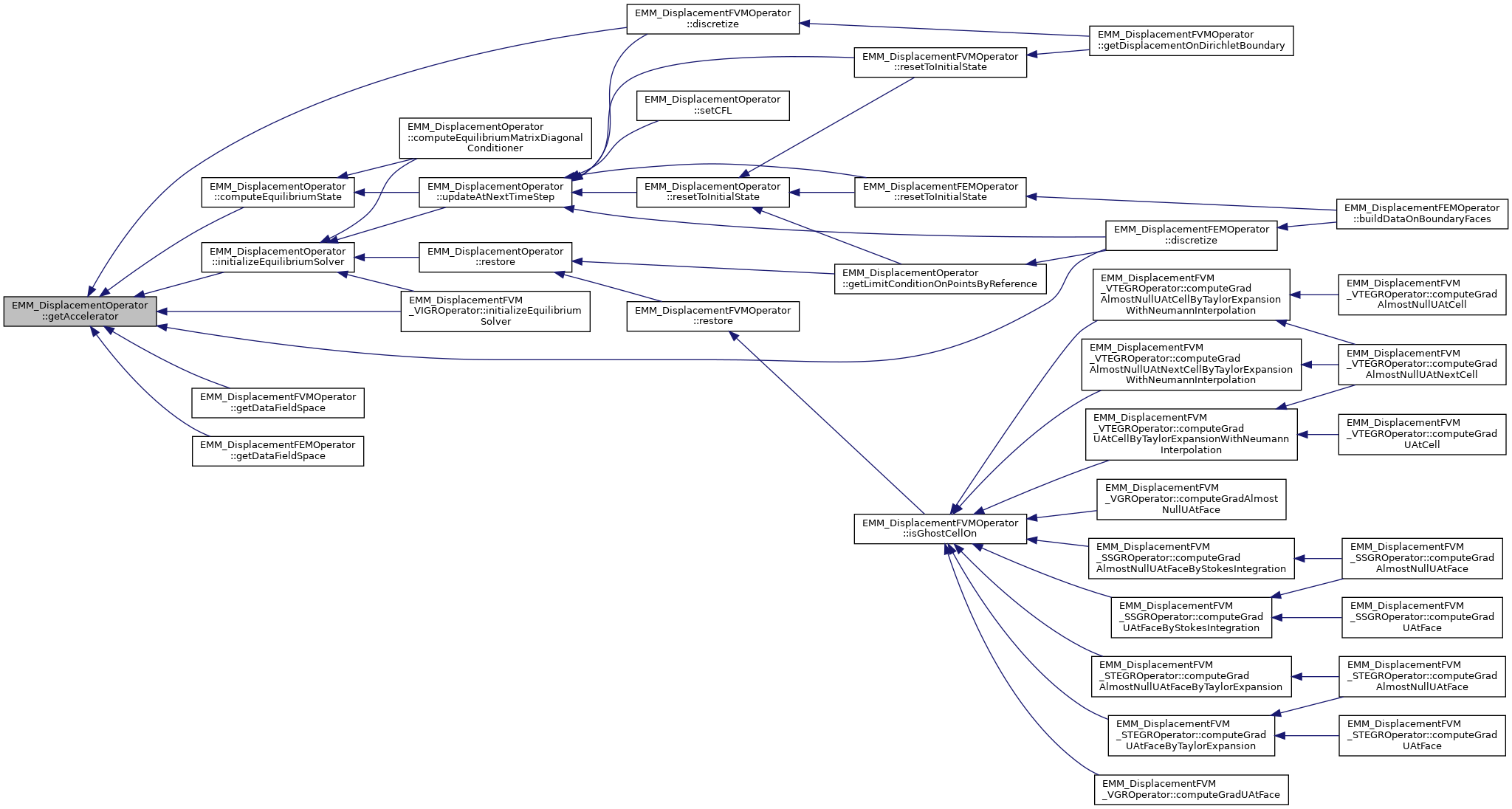
◆ getAccelerator() [2/2]
|
inline |
get the accelerator for reading
- Returns
- the accelerator field
References setSolver(), and tString.

◆ getAdimensionizedSegmentsSize()
|
inline |
get the segments size in all directions
- Returns
- an array of size 3 which give sthe step size in the i-direction for i in [0,3[
References mL.
Referenced by EMM_DisplacementFEMOperator::buildDataOnNeumannBoundaryFaces(), EMM_DisplacementFVMOperator::computeElasticStress(), EMM_DisplacementFEMOperator::computeElasticStress(), EMM_DisplacementFVMOperator::computeElasticTensor(), EMM_DisplacementFEMOperator::computeElasticTensor(), EMM_DisplacementFVMOperator::computeEquilibriumMatrixDiagonalConditioner(), EMM_DisplacementFEMOperator::computeEquilibriumMatrixDiagonalConditioner(), EMM_DisplacementFVMOperator::computeMagneticStress(), EMM_DisplacementFEMOperator::computeMagneticStress(), and EMM_DisplacementFEMOperator::computeStressConstraintEnergy().
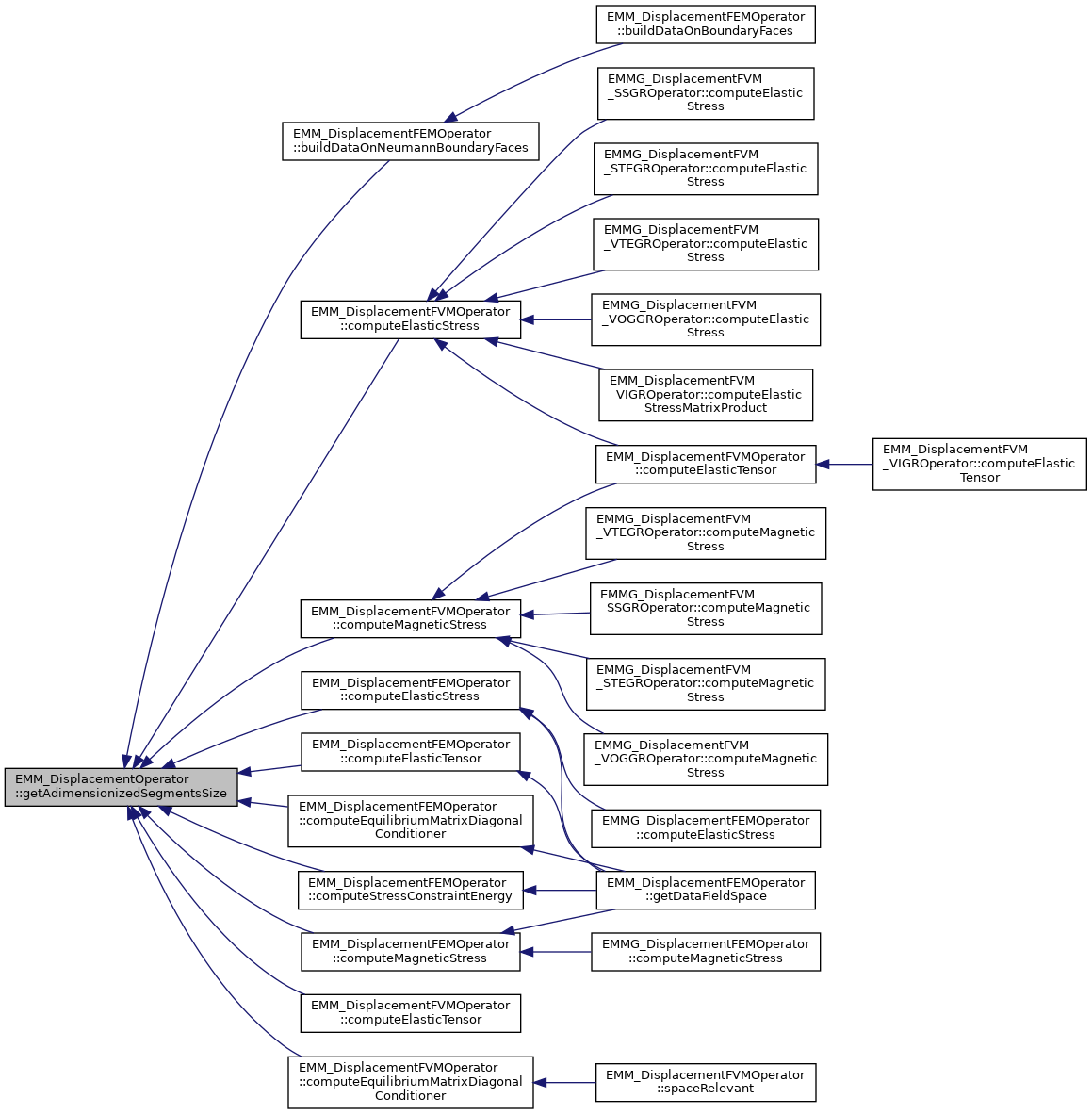
◆ getAdimensionizedVolumicMass()
|
inline |
get the adimensionized volumic mass per cell
- Returns
- the adimensionized volumic mass
References mKappa.
Referenced by EMM_DisplacementFVMOperator::computeCineticEnergy(), and EMM_DisplacementFEMOperator::computeCineticEnergy().

◆ getClassName() [1/2]
|
inherited |
return the class name of the object
- Returns
- the class name of the object
References tString.
Referenced by CORE_Object::getIdentityString(), EMM_Operator::getName(), and CORE_Object::isMemoryChecked().

◆ getClassName() [2/2]
return the class name of the object
- Parameters
-
identityString the identity string of the object
- Returns
- the class name
◆ getConstraintFaces()
|
inline |
get the constraint faces 
 if face f is constrainted
if face f is constrainted
- Returns
- the constraints faces
References mConstraintFaces.
Referenced by EMM_DisplacementFEMOperator::buildDataOnNeumannBoundaryFaces(), and EMM_DisplacementFVMOperator::computeElasticStress().
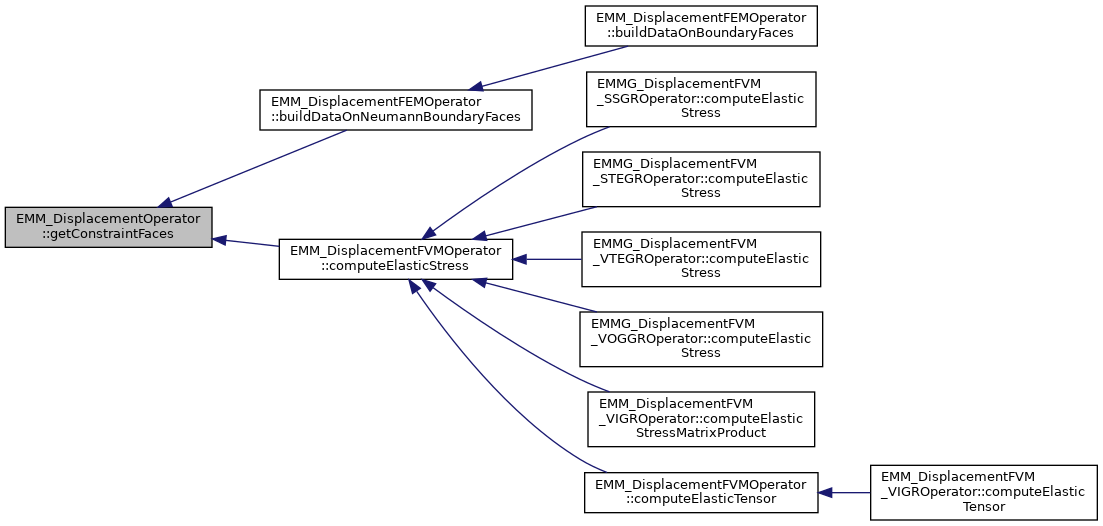
◆ getConstraints() [1/2]
|
inline |
get the constraints field for reading
- Returns
- the constraints field
Referenced by EMM_DisplacementFEMOperator::addBoundaryElasticStress(), EMM_DisplacementFVMOperator::computeElasticStress(), computeEnergy(), and EMM_DisplacementFEMOperator::computeStressConstraintEnergy().
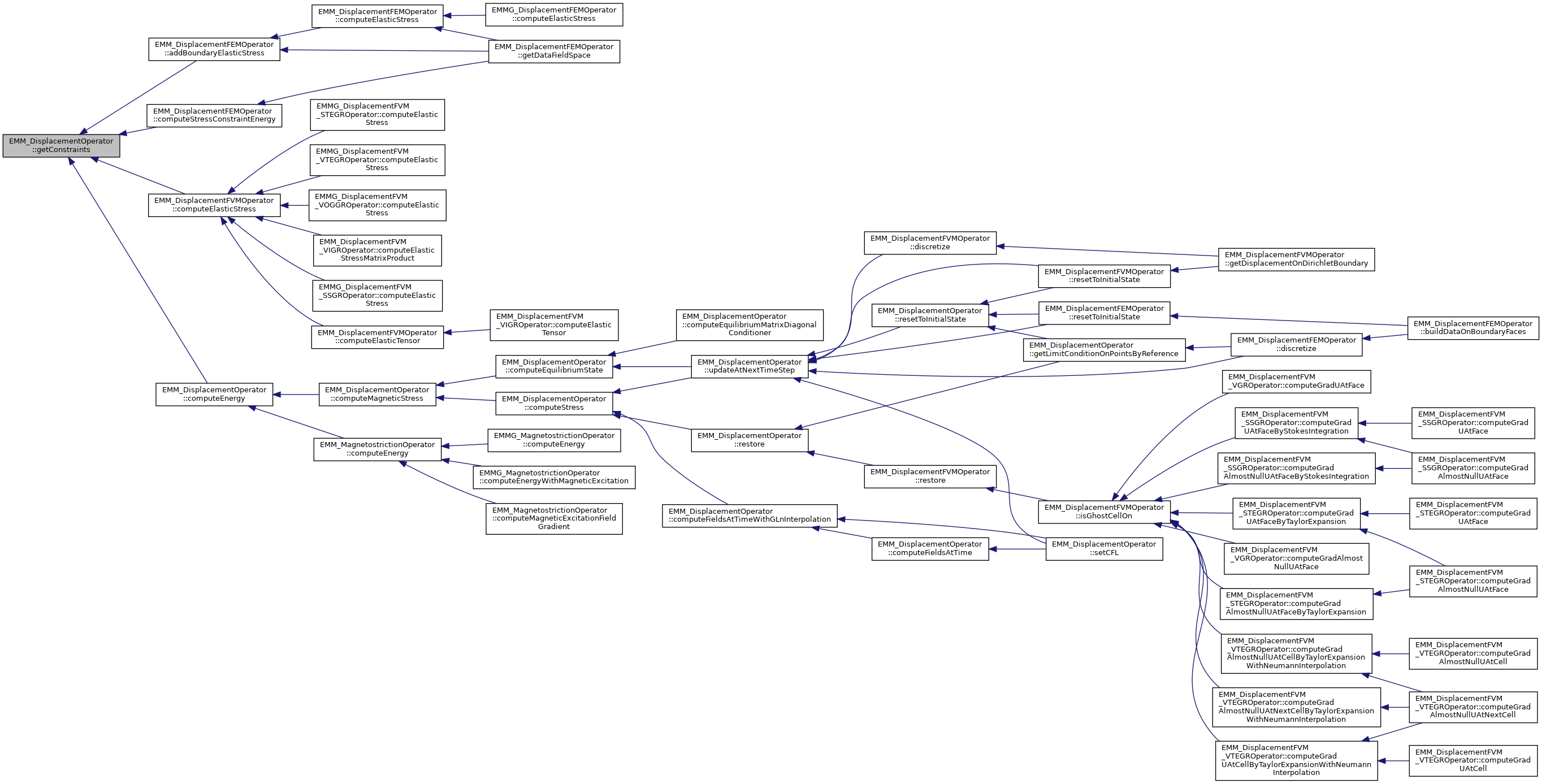
◆ getConstraints() [2/2]
|
inline |
get the constraints field for writing
- Returns
- the constraints field
◆ getDataField() [1/3]
|
inlinevirtual |
get the data field at index for saving data in vtk,txt,... files.
- Parameters
-
index index of the field in [0,getDataFieldsNumber()[ dataName name of the field n number of element of the field dim dimension of the field in [1,3[ values values of the field
- Returns
- true if the field at index exists
- 0 : it returns the displacement field U
- 1 : it returns the velocity field dU_dt
- 2 : it returns the accelerator field acc=

Reimplemented from EMM_Operator.
References tBoolean.
◆ getDataField() [2/3]
|
inlinevirtual |
get the data field at index for saving data in vtk,txt,... files.
- Parameters
-
index index of the field in [0,getDataFieldsNumber()[ dataName name of the field n number of element of the field dim dimension of the field in [1,3[ values values of the field
- Returns
- true if the field at index exists
- 0 : it returns the displacement field U
- 1 : it returns the velocity field dU_dt
- 2 : it returns the accelerator field acc=

Reimplemented from EMM_Operator.
References tBoolean.
◆ getDataField() [3/3]
|
inlinevirtual |
get the data field at index for saving data in vtk,txt,... files.
- Parameters
-
index index of the field in [0,getDataFieldsNumber()[ dataName name of the field n number of element of the field dim dimension of the field in [1,3[ values values of the field
- Returns
- true if the field at index exists
- 0 : it returns the displacement field U
- 1 : it returns the velocity field dU_dt
- 2 : it returns the accelerator field acc=

Reimplemented from EMM_Operator.
References tBoolean.
◆ getDataFieldsNumber()
|
inlinevirtual |
get the number of field used in the operator
- Returns
- the number of data
Reimplemented from EMM_Operator.
References isSteadyState().

◆ getDataFieldSpace()
|
inlinevirtualinherited |
get the data field at index for saving data in vtk,txt,... files.
- Parameters
-
index index of the field in [0,getDataFieldsNumber()[ dataName name of the field supportType : mesh element whre the field is applied EMM_Grid3D::ELEMENT or EMM_Grid3D::POINT dFieldType : type of the field double,float,int,.... n number of element of the field dim dimension of the field in [1,3[
- Returns
- true if the field at index exists
Reimplemented in EMM_DisplacementFEMOperator, EMM_DisplacementFVMOperator, EMM_MagnetostrictionOperator, and EMM_ZeemanOperator.
References EMM_Grid3D::ELEMENT.
◆ getDisplacement() [1/3]
|
inline |
get the displacement for writing
- Returns
- the displacement field
Referenced by EMM_DisplacementFVMOperator::computeEquilibriumMatrixDiagonalConditioner(), EMM_DisplacementFEMOperator::computeEquilibriumMatrixDiagonalConditioner(), computePotentialEnergyAtTime(), computeStressConstraintEnergy(), EMM_DisplacementFVMOperator::discretize(), EMM_DisplacementFEMOperator::discretize(), EMM_DisplacementFVMOperator::getDataFieldSpace(), EMM_DisplacementFEMOperator::getDataFieldSpace(), EMM_DisplacementFVM_VIGROperator::initializeEquilibriumSolver(), initializeEquilibriumSolver(), NewEquilibriumMatrix(), EMM_DisplacementFVMOperator::resetToInitialState(), and resetToInitialState().
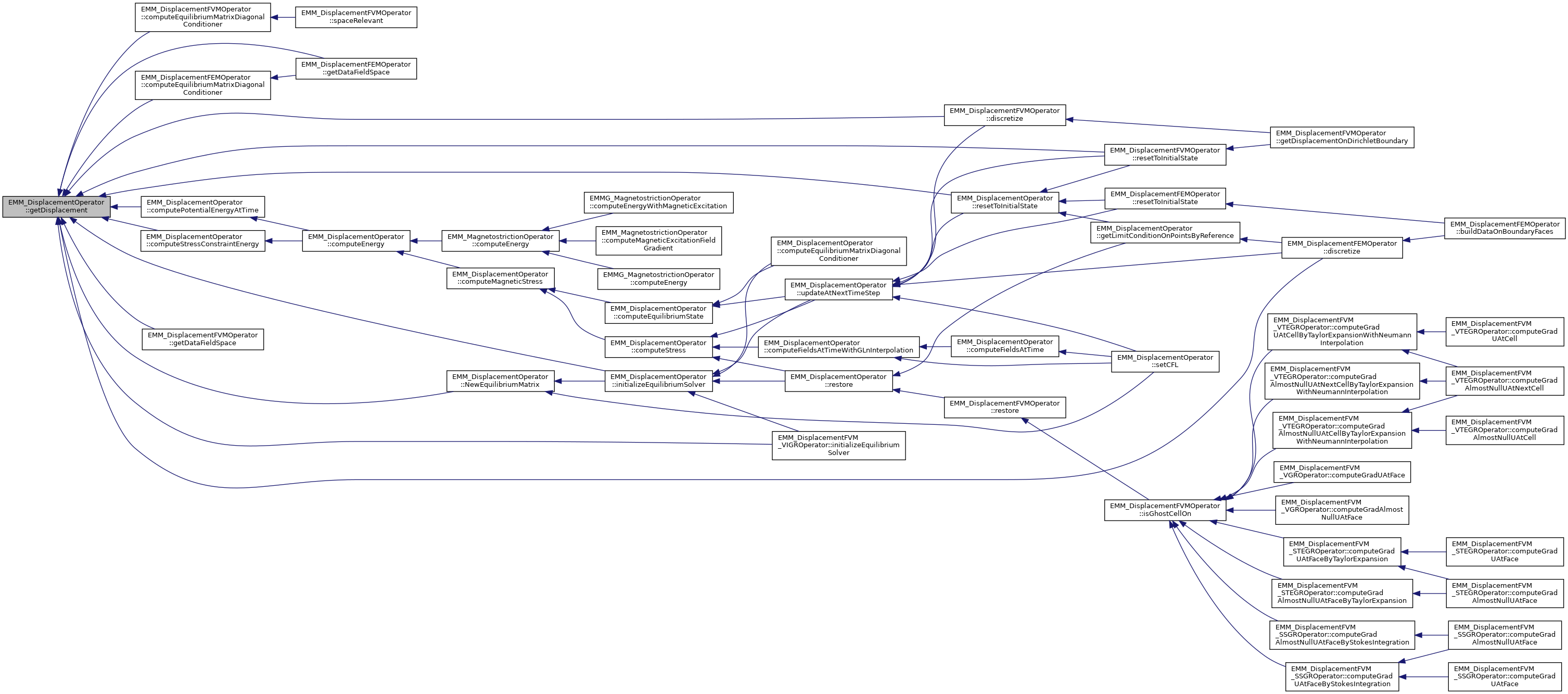
◆ getDisplacement() [2/3]
|
inline |
get the displacement for reading
- Returns
- the displacement field
◆ getDisplacement() [3/3]
|
inline |
get the veolicty at time
- Parameters
-
t time to get velocity
References isSteadyState().

◆ getDoubleEpsilon()
|
inlinestaticinherited |
get the epsilon value for tDouble type
- Returns
- the epsilon value for tDouble type
Referenced by CORE_Test::testType().
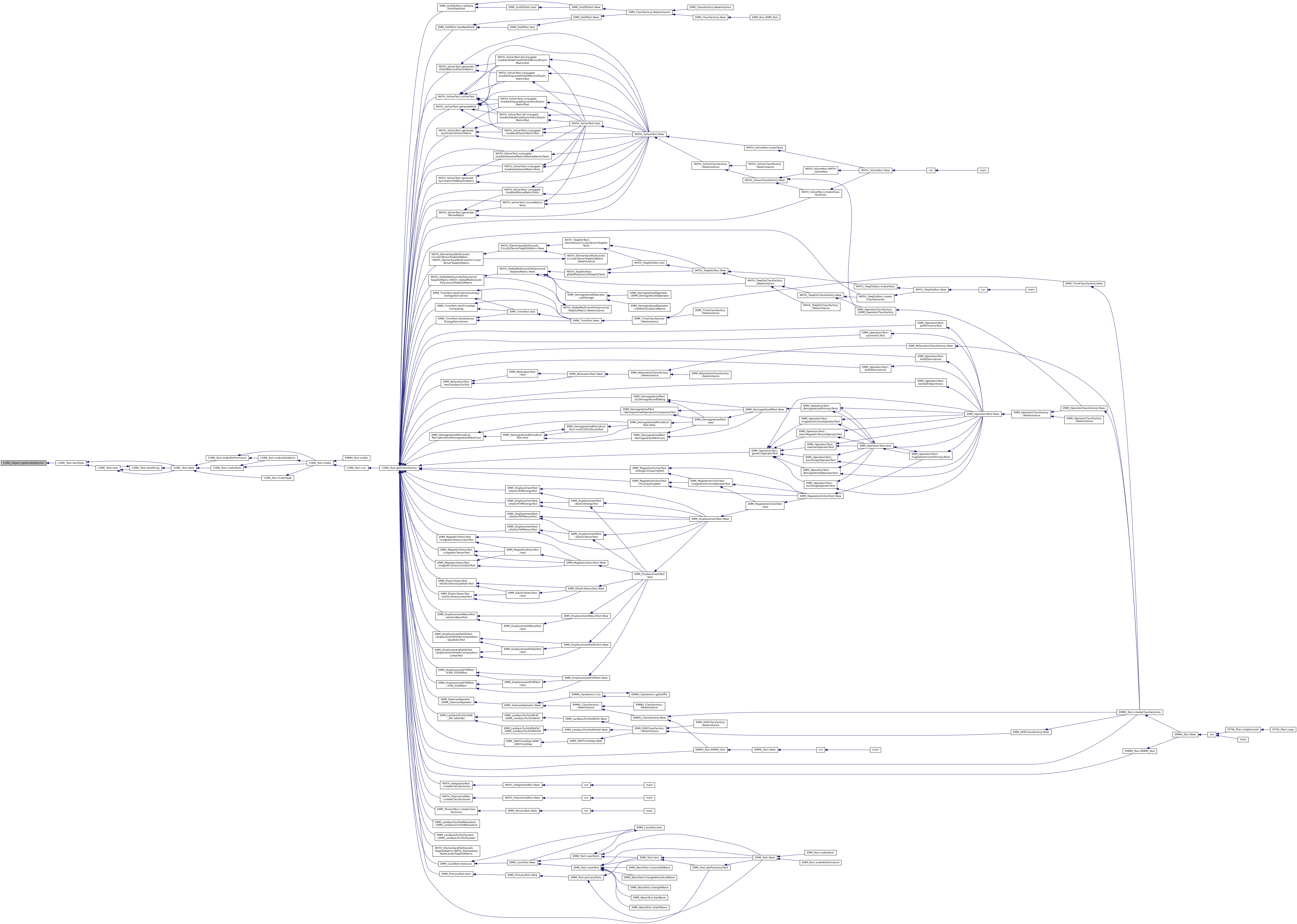
◆ getDoubleInfinity()
|
inlinestaticinherited |
get the infinity value for tFloat type
- Returns
- the intinity value for tFloat type
◆ getElasticTensor()
|
inline |
return the elastic tensor 
- Returns
- the aelastic tensor
References mEpsilonUt.
Referenced by computeEnergy().
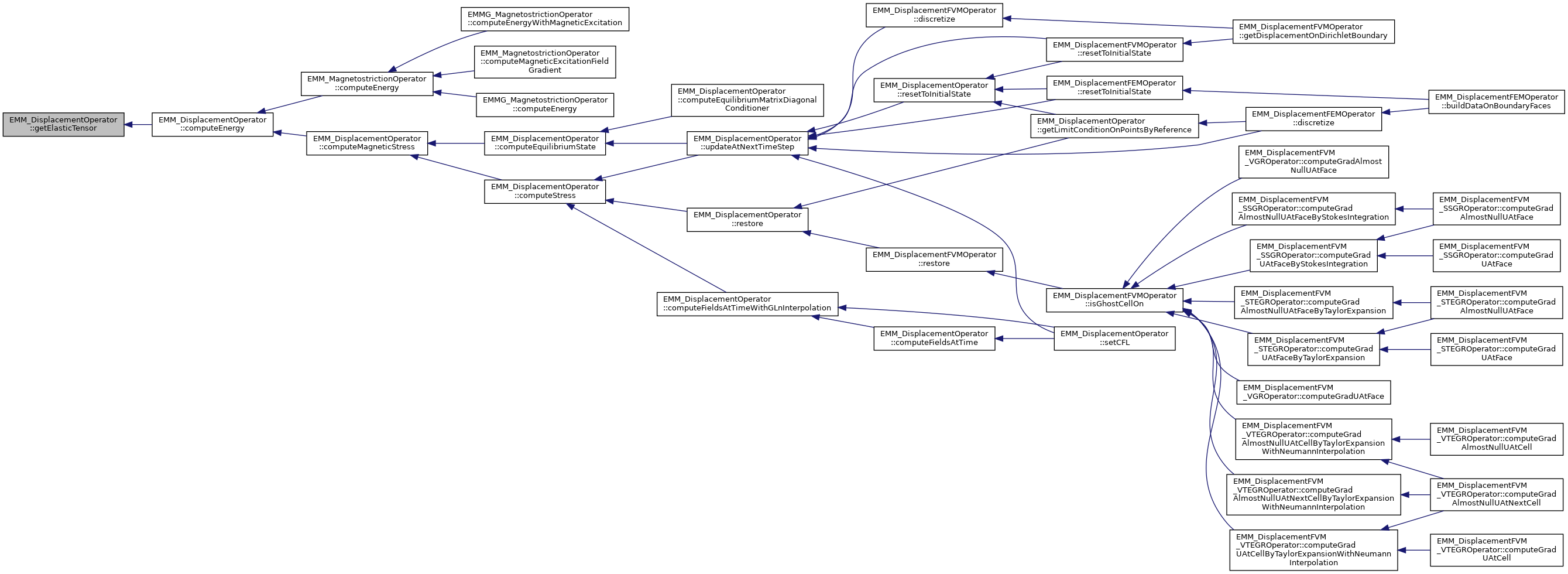
◆ getElementVolume()
|
inlineinherited |
return the adimensionized volume of the element
- Returns
- the voume of the element with adimensionized dimensions
References EMM_Operator::mElementVolume.
Referenced by EMM_DisplacementFVMOperator::computeCineticEnergy(), EMM_DisplacementFEMOperator::computeElasticStress(), EMM_StaticMagneticTensorOperator::computeEnergy(), EMM_ZeemanOperator::computeEnergy(), EMM_CubicAnisotropyOperator::computeEnergy(), EMM_MagnetostrictionOperator::computeEnergy(), computeEnergy(), EMM_MagneticExcitationLinearOperator::computeEnergyWithMagneticExcitation(), EMM_AnisotropyOperator::computeEnergyWithMagneticExcitation(), EMM_ZeemanOperator::computeEnergyWithMagneticExcitation(), EMM_DisplacementFEMOperator::computeEquilibriumMatrixDiagonalConditioner(), EMM_DisplacementFEMOperator::computeMagneticStress(), and computePotentialEnergy().
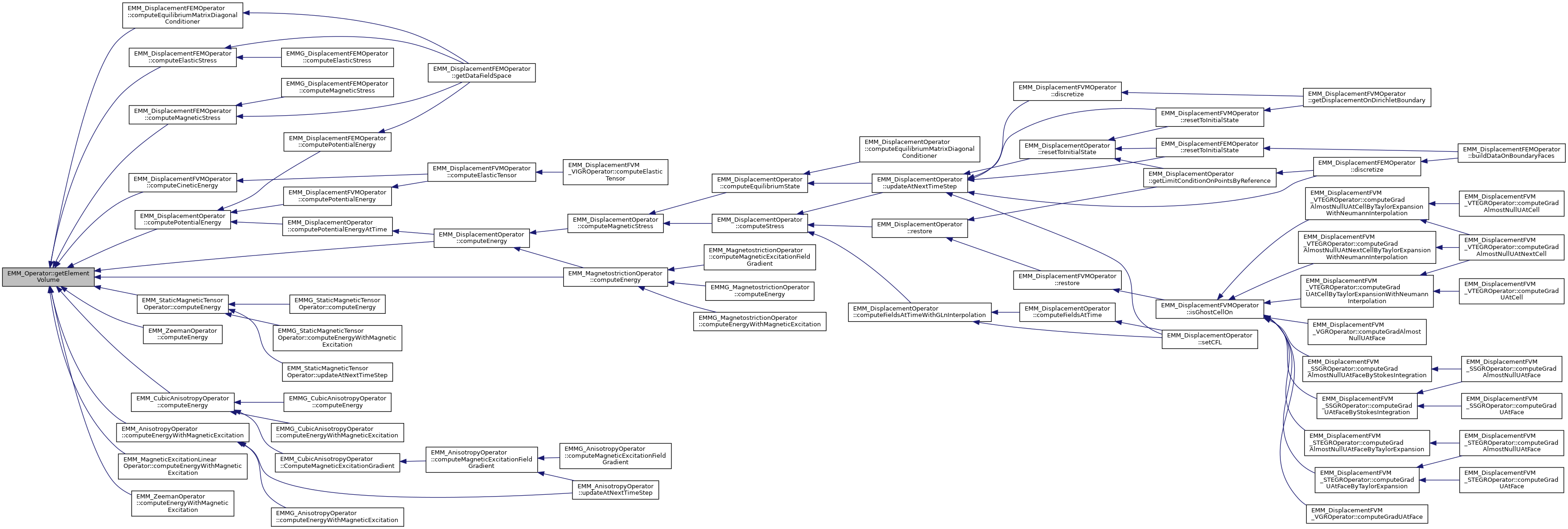
◆ getEpsilon()
|
inlinestaticinherited |
get the epsilon value for T type
- Returns
- the epsilon value for T type
◆ getFloatEpsilon()
|
inlinestaticinherited |
get the epsilon value for tFloat type
- Returns
- the epsilon value for tFloat type
Referenced by CORE_Test::testType().
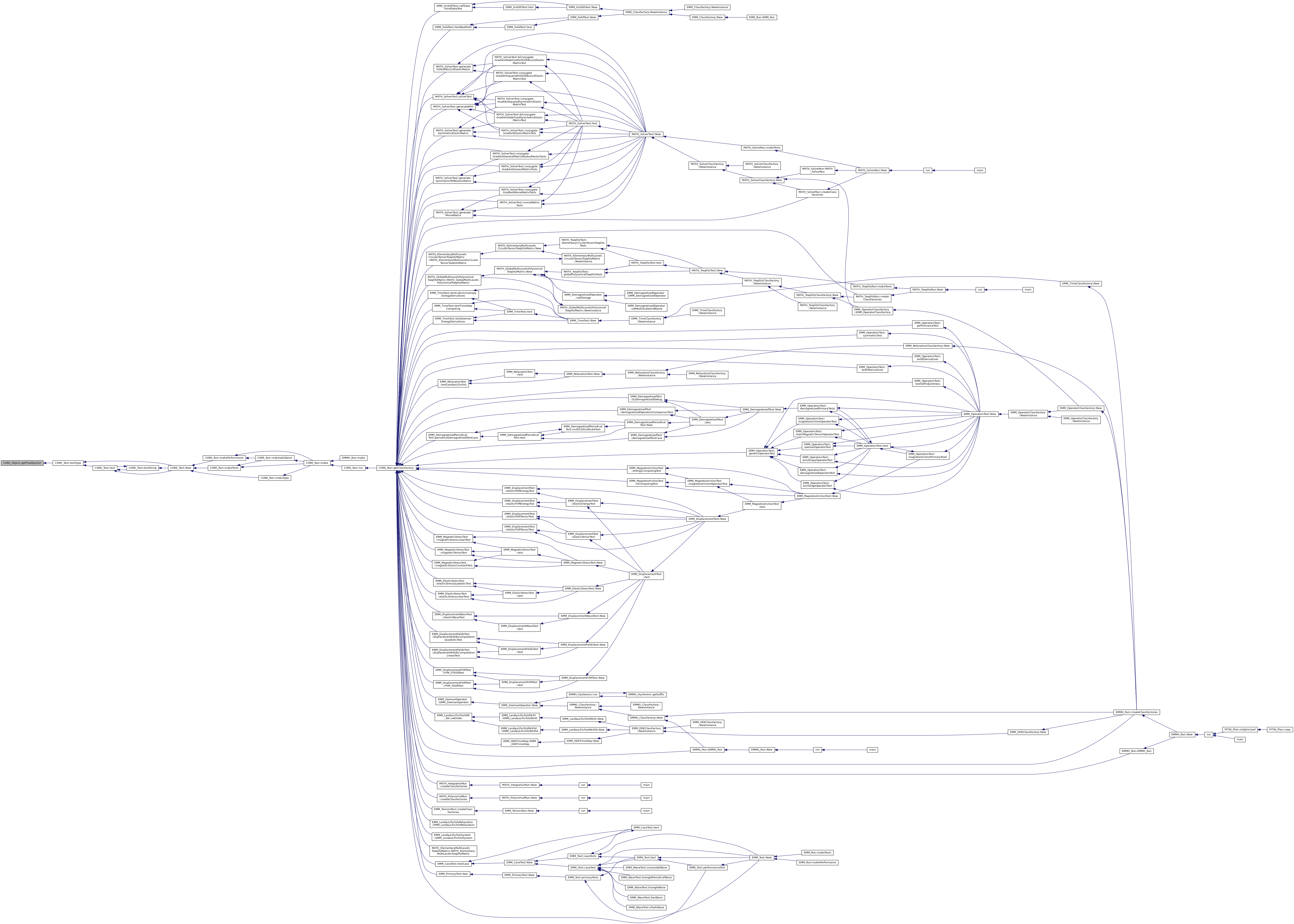
◆ getFloatInfinity()
|
inlinestaticinherited |
get the infinity value for tFloat type
- Returns
- the intinity value for tFloat type
◆ getIdentityString()
|
inlineinherited |
return the identity string of the object of the form className_at_address
- Returns
- the identity string of the object
References CORE_Object::getClassName(), CORE_Object::pointer2String(), and tString.
Referenced by MATH_GaussLegendreIntegration::copy(), EMM_MultiScaleGrid::initialize(), CORE_Object::isInstanceOf(), CORE_Object::printObjectsInMemory(), MATH_Matrix::toString(), EMMG_SLPeriodicMultiScale::toString(), EMM_Stepper::toString(), EMM_AnisotropyDirectionsField::toString(), EMM_BlockMassMatrix::toString(), CORE_Object::toString(), EMM_Tensors::toString(), EMM_MultiScaleGrid::toString(), EMM_MatterField::toString(), EMM_Grid3D::toString(), and EMM_LandauLifschitzSystem::toString().

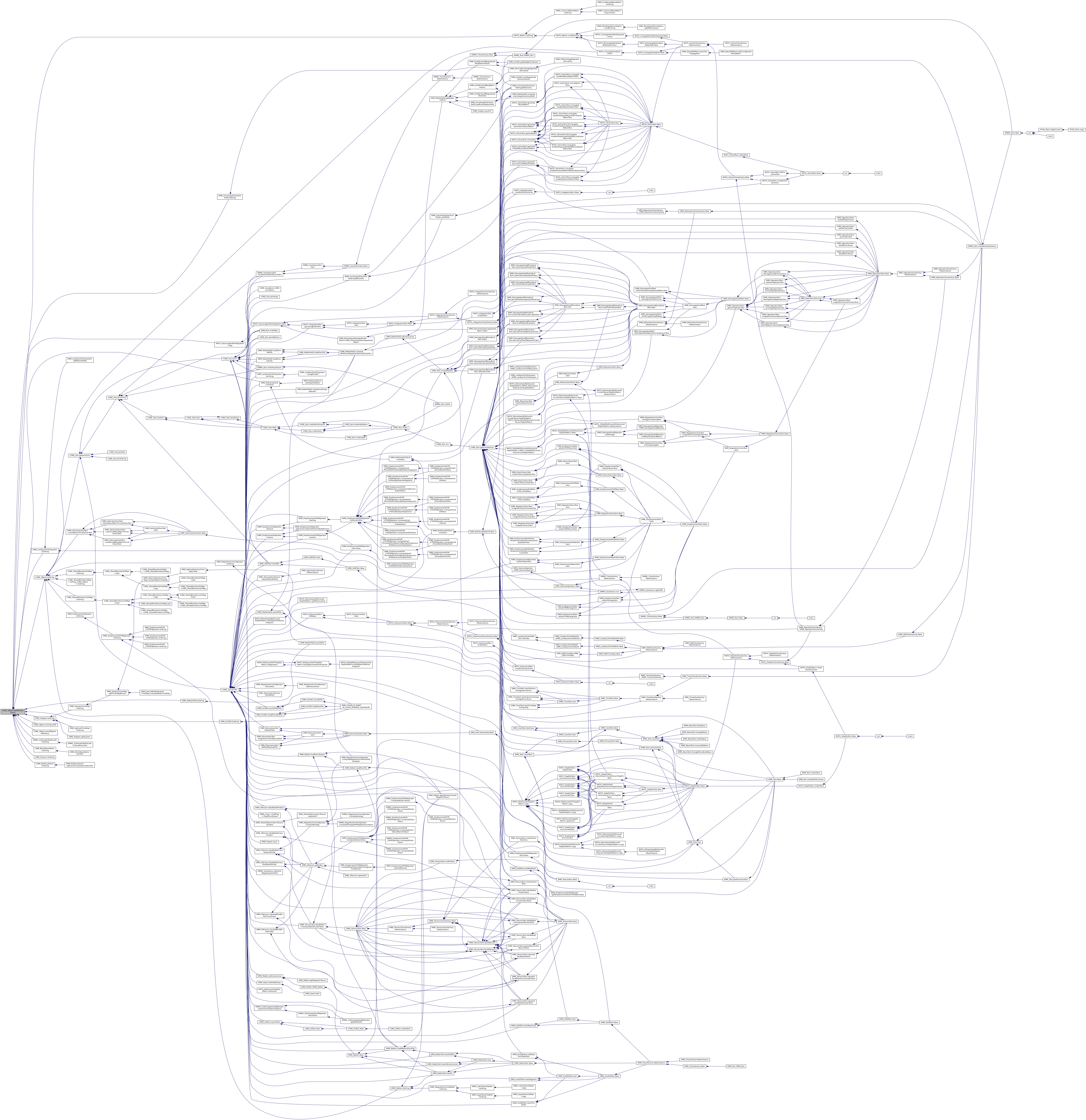
◆ getInfinity()
|
inlinestaticinherited |
get the infinity for T type
- Returns
- the infinity value for T type
◆ getLambdaE()
|
inline |
return the adimensionized elastic tensor distribution 
- Returns
- the adimensionized elastic tensor of size 3x3x3x3 at each cell of size nCells in a morse array
Referenced by EMM_DisplacementFVMOperator::computeElasticStress(), EMM_DisplacementFEMOperator::computeElasticStress(), EMM_DisplacementFVMOperator::computeEquilibriumMatrixDiagonalConditioner(), and EMM_DisplacementFEMOperator::computeEquilibriumMatrixDiagonalConditioner().
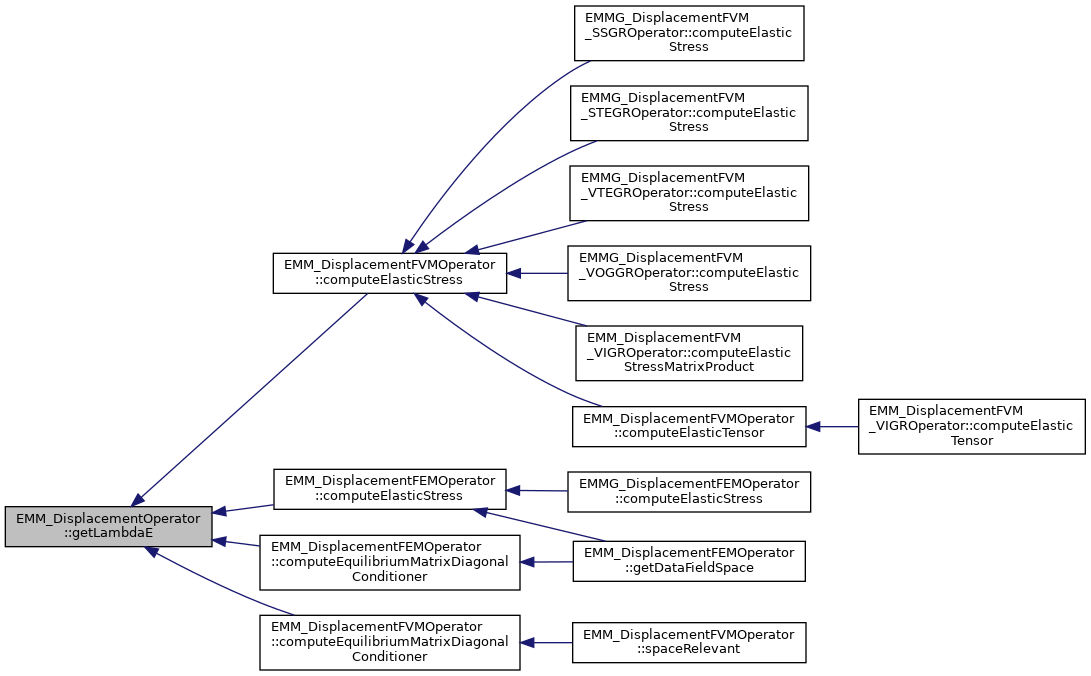
◆ getLambdaEDoubleDotLambdaM()
|
inline |
return the adimensionized magnetic tensor distribution 
- Returns
- the adimensionized magnetic tensor of size 3x3x3x3 at each cell of size nCells in a morse array
Referenced by EMM_DisplacementFVMOperator::computeMagneticStress(), and EMM_DisplacementFEMOperator::computeMagneticStress().
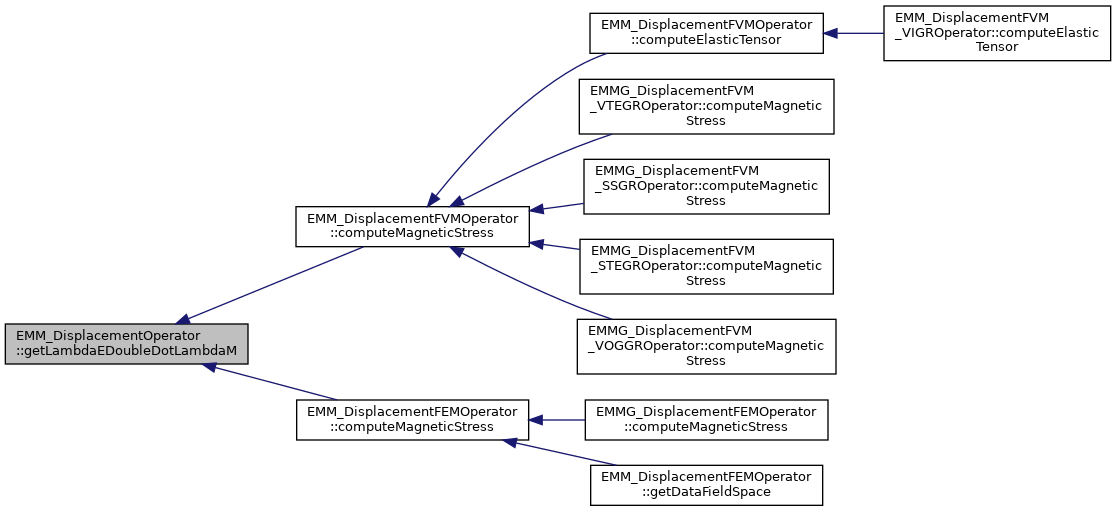
◆ getLambdaMDoubleDotLambdaE()
|
inline |
return the adimensionized magnetic tensor distribution 
- Returns
- the adimensionized magnetic tensor of size 3x3x3x3 at each cell of size nCells in a morse array
◆ getLambdaMDoubleDotLambdaEDoubleDotLambdaM()
|
inline |
return the adimensionized magnetic tensor distribution 
- Returns
- the adimensionized magnetic tensor of size 3x3x3x3 at each cell of size nCells in a morse array
Referenced by EMM_MagnetostrictionOperator::computeEnergy().

◆ getLDoubleEpsilon()
|
inlinestaticinherited |
get the epsilon value for tLDouble type
- Returns
- the epsilon value for tLDouble type
Referenced by CORE_Test::testType().

◆ getLDoubleInfinity()
|
inlinestaticinherited |
get the infinity value for tDouble type
- Returns
- the infinity value for tDouble type
◆ getLimitConditionOnPoints()
|
inline |
References CORE_Array< T >::get().
Referenced by EMM_DisplacementFVMOperator::computeElasticStress(), EMM_DisplacementFEMOperator::computeElasticStress(), EMM_DisplacementFVM_VIGROperator::computeElasticStressMatrixProduct(), EMM_DisplacementFVM_VIGROperator::computeElasticTensor(), EMM_DisplacementFVMOperator::computeElasticTensor(), EMM_DisplacementFVMOperator::computeEquilibriumMatrixDiagonalConditioner(), EMM_DisplacementFEMOperator::computeEquilibriumMatrixDiagonalConditioner(), EMM_DisplacementFVM_VOGGROperator::computeGradAlmostNullUAtCellByOstrogradskiGreenIntegration(), EMM_DisplacementFVM_VTEGROperator::computeGradAlmostNullUAtCellByTaylorExpansionWithNeumannInterpolation(), EMM_DisplacementFVM_VOGGROperator::computeGradAlmostNullUAtNextCellByOstrogradskiGreenIntegration(), EMM_DisplacementFEMOperator::computeStressConstraintEnergy(), EMM_DisplacementFVM_VIGROperator::initializeEquilibriumSolver(), nullProjectionOnDirichletBoundary(), periodicProjection(), and projectionOnDirichletBoundary().

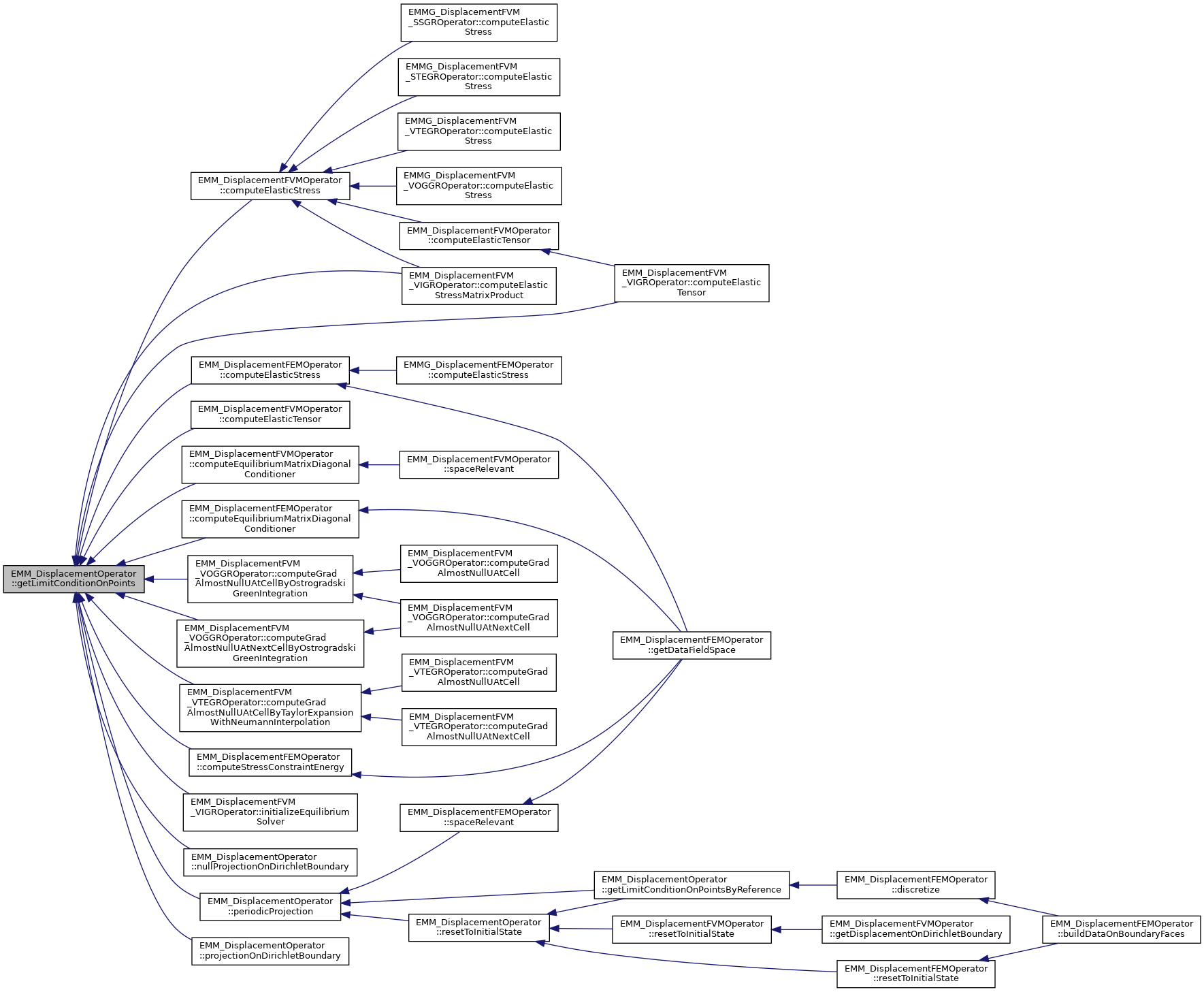
◆ getLimitConditionOnPointsByReference()
|
inline |
References backup(), buildDataOnBoundaryFaces(), discretize(), getMemorySize(), mLimitConditionOnPoints, nullProjectionOnDirichletBoundary(), periodicProjection(), projectionOnDirichletBoundary(), resetToInitialState(), restore(), tBoolean, tCellFlag, tDimension, tReal, tString, tUIndex, tUInteger, and tULLInt.
Referenced by EMM_DisplacementFEMOperator::discretize().
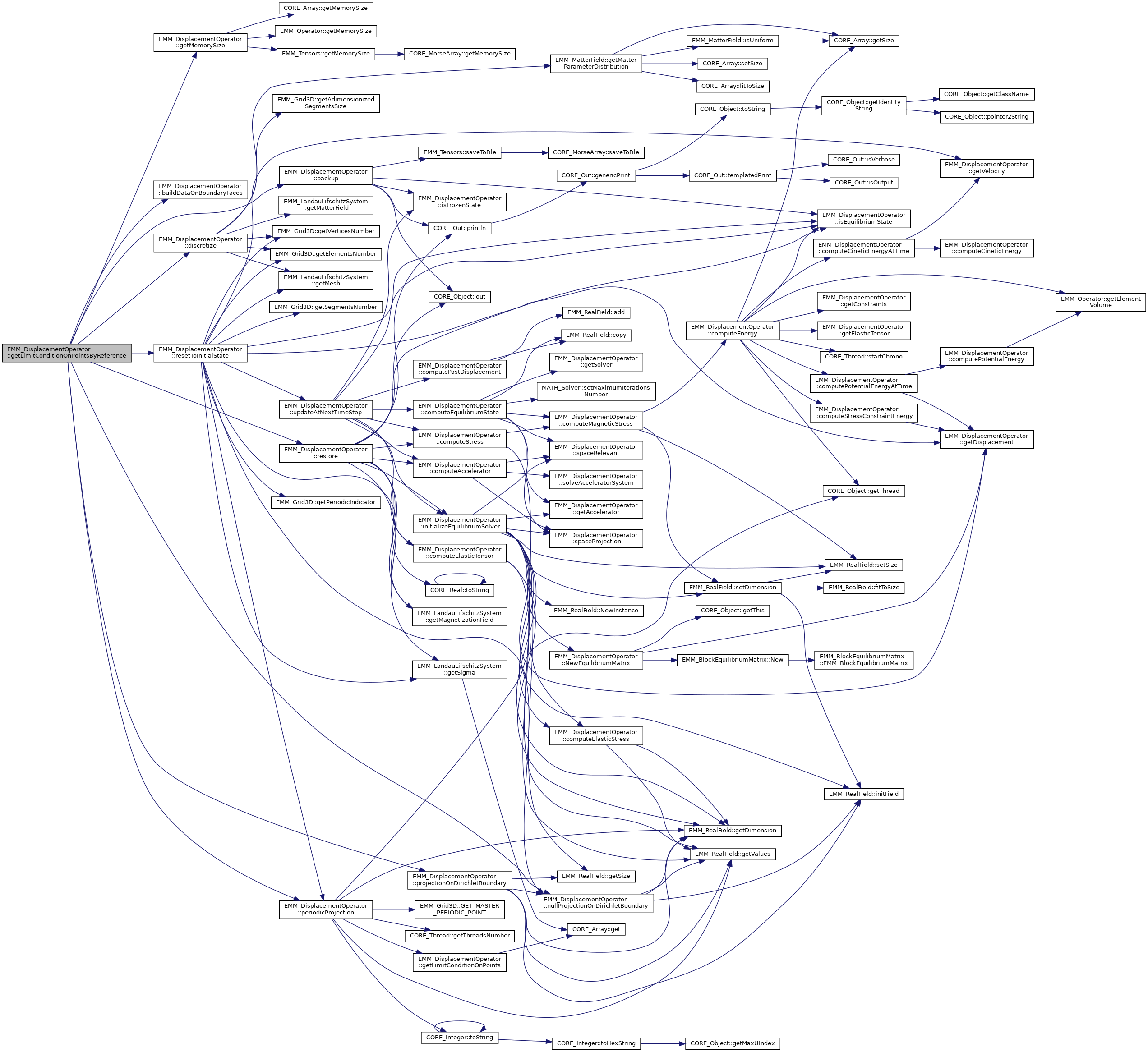

◆ getMaxChar()
|
inlinestaticinherited |
get the max value for tChar type
- Returns
- the max value for tChar type
Referenced by CORE_Test::testType().

◆ getMaxDouble()
|
inlinestaticinherited |
get the max value for tDouble type
- Returns
- the max value for tDouble type
Referenced by CORE_Test::testType().
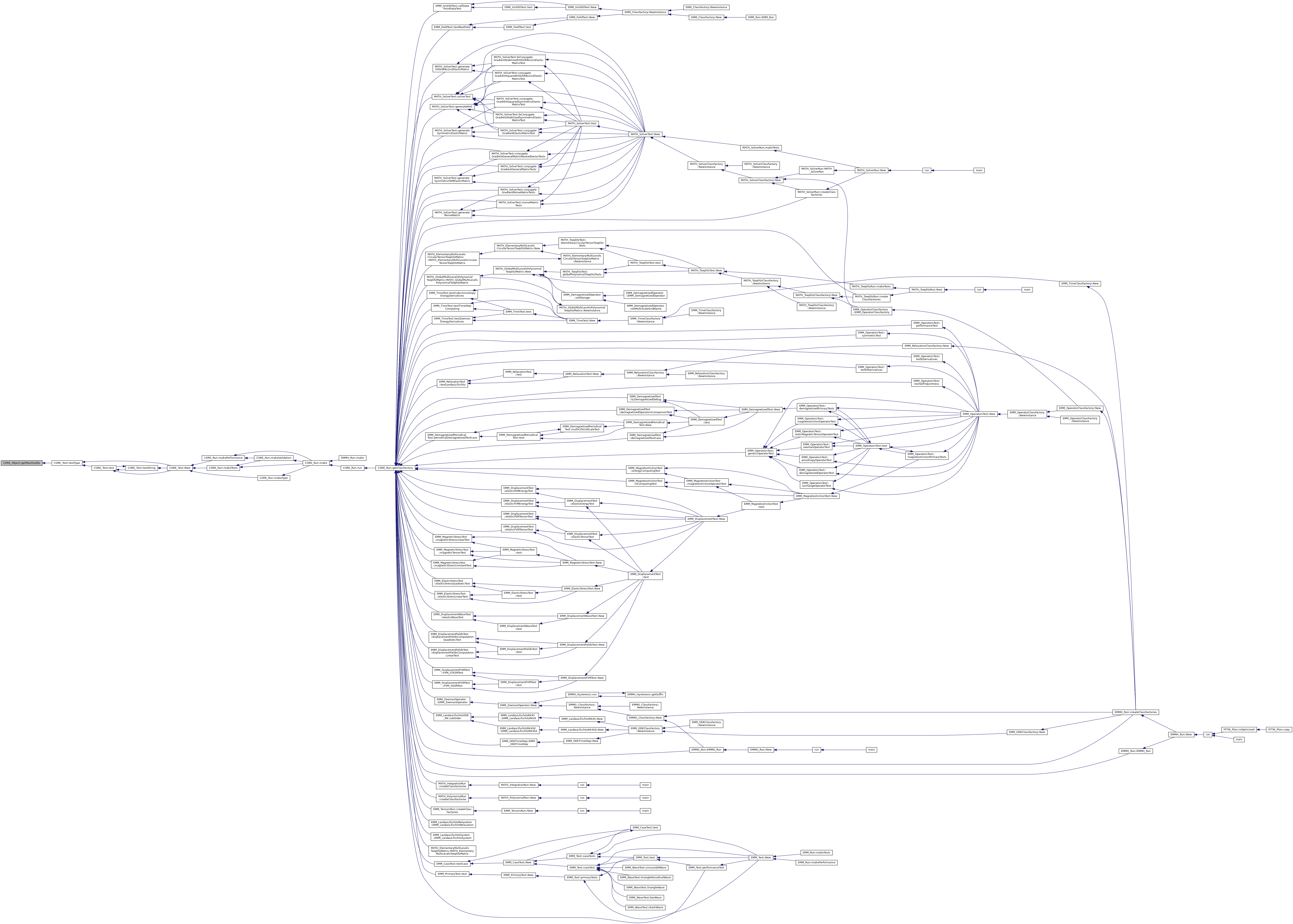
◆ getMaxFlag()
|
inlinestaticinherited |
get the max value for the tFlag type
- Returns
- the max value for the tFlag type
Referenced by CORE_Test::testType().

◆ getMaxFloat()
|
inlinestaticinherited |
get the max value for tFloat type
- Returns
- the max value for tFloat type
Referenced by CORE_Test::testType().
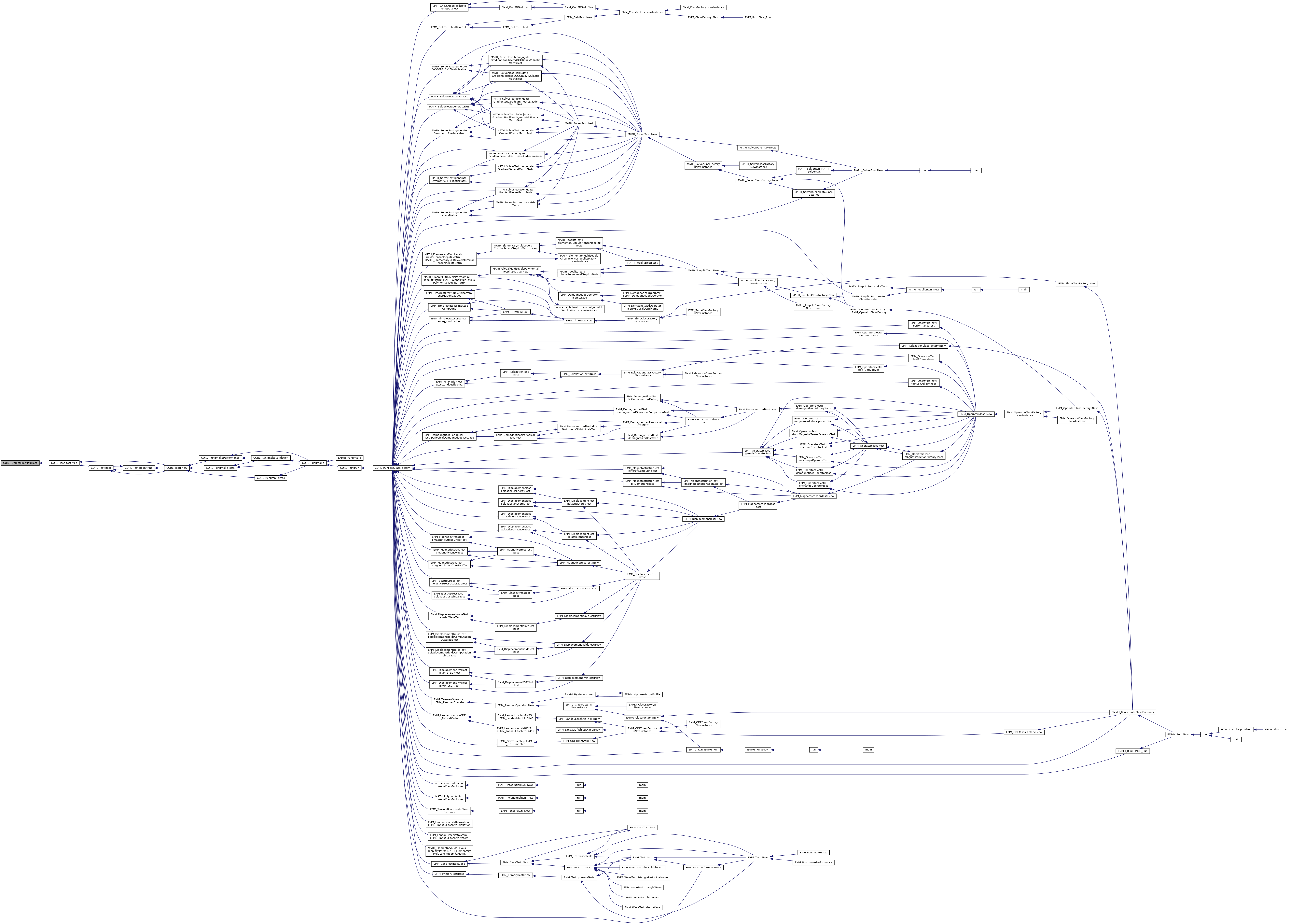
◆ getMaxIndex()
|
inlinestaticinherited |
get the max value for the array/vector indexing type
- Returns
- the max value for the array/vector indexing type
Referenced by CORE_Test::testType().
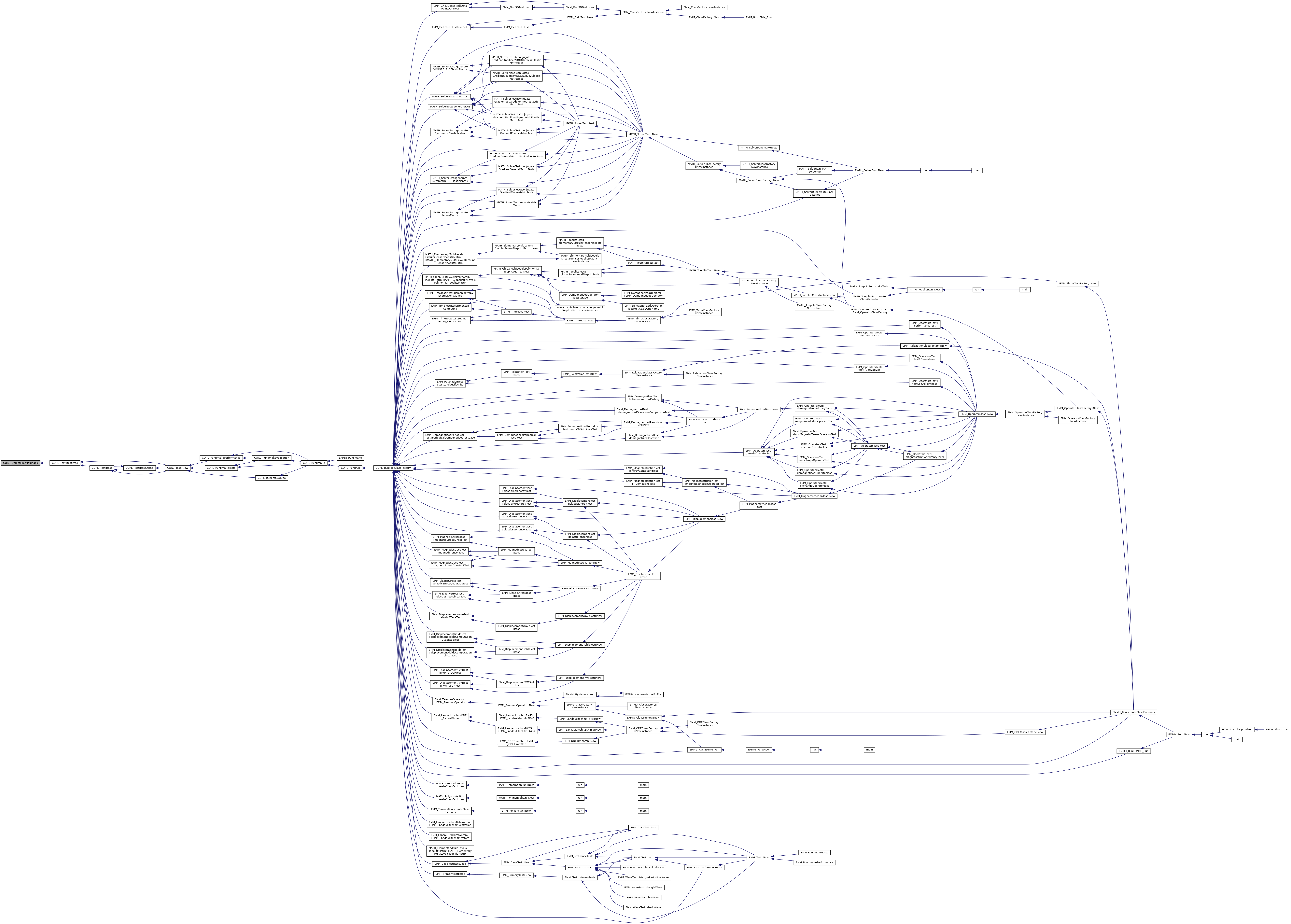
◆ getMaxInt()
|
inlinestaticinherited |
get the max value for tInt type
- Returns
- the max value for tInt type
Referenced by MATSGN_FFT::fastFourierTransform3D_FFTW(), and CORE_Test::testType().

◆ getMaxInteger()
|
inlinestaticinherited |
get the max value for the integer type
- Returns
- the max value for the integer type
Referenced by CORE_Test::testType().
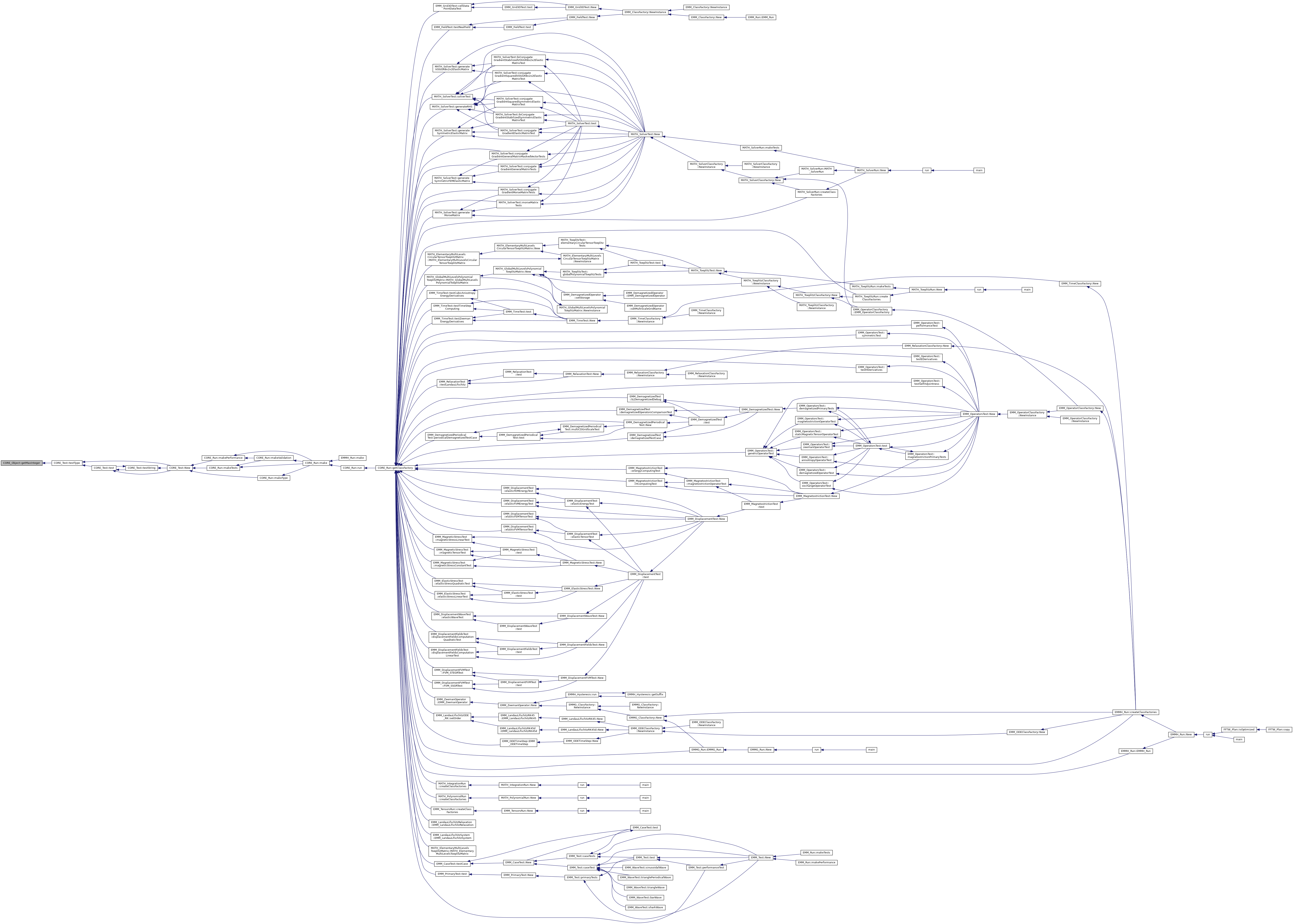
◆ getMaxLDouble()
|
inlinestaticinherited |
get the max value for tLDouble type
- Returns
- the max value for tLDouble type
Referenced by CORE_Test::testType().
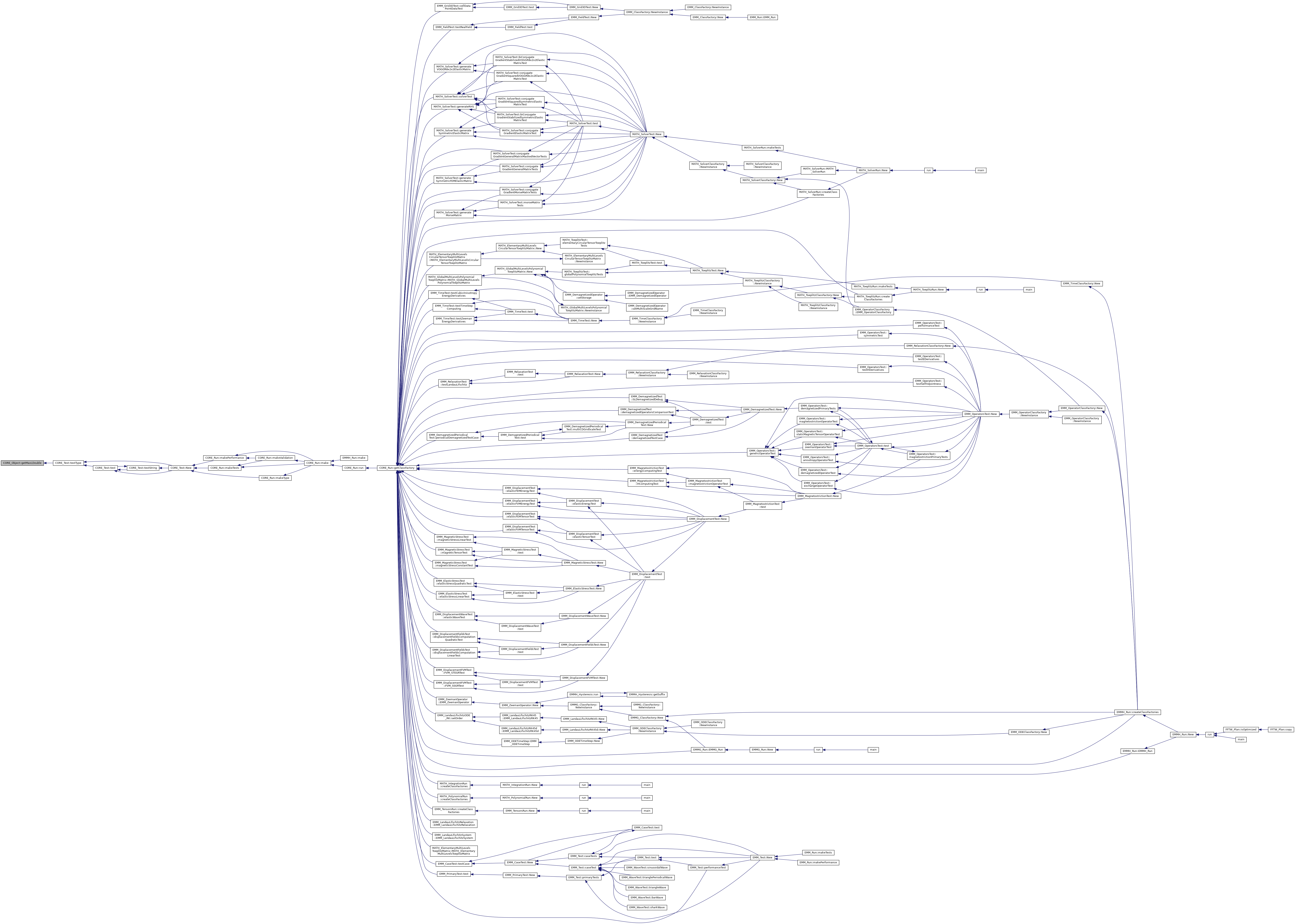
◆ getMaxLInt()
|
inlinestaticinherited |
get the max value for tLInt type
- Returns
- the max value for tLInt type
Referenced by CORE_Test::testType().

◆ getMaxLLInt()
|
inlinestaticinherited |
get the max value for tULInt type
- Returns
- the max value for tULInt type
Referenced by CORE_Test::testType().
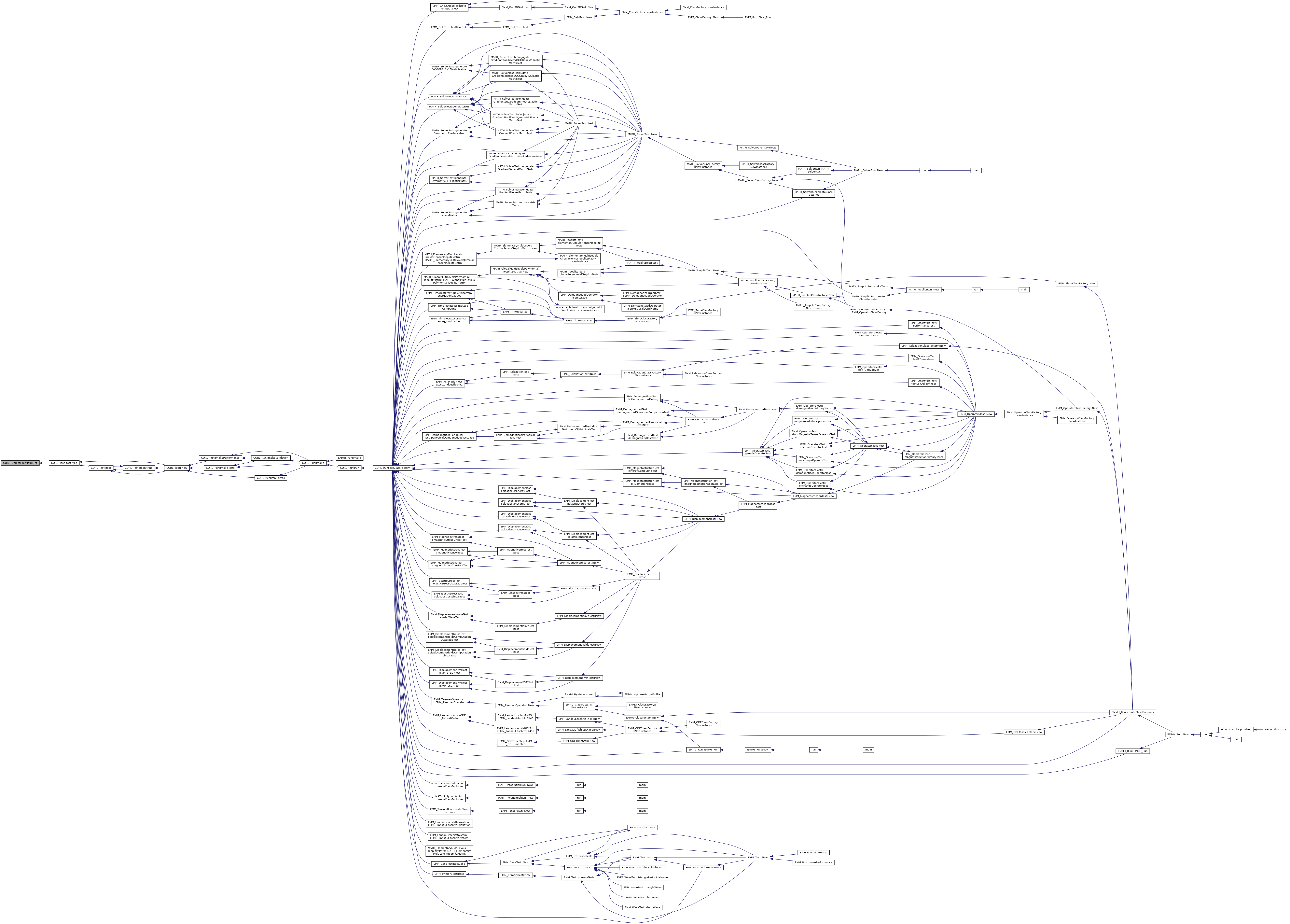
◆ getMaxReal()
|
inlinestaticinherited |
get the max value for the real type
- Returns
- he max value for the real type
Referenced by EMM_MatterField::adimensionize(), and CORE_Test::testType().

◆ getMaxSInt()
|
inlinestaticinherited |
get the max value for tSInt type
- Returns
- the max value for tSInt type
Referenced by CORE_Test::testType().
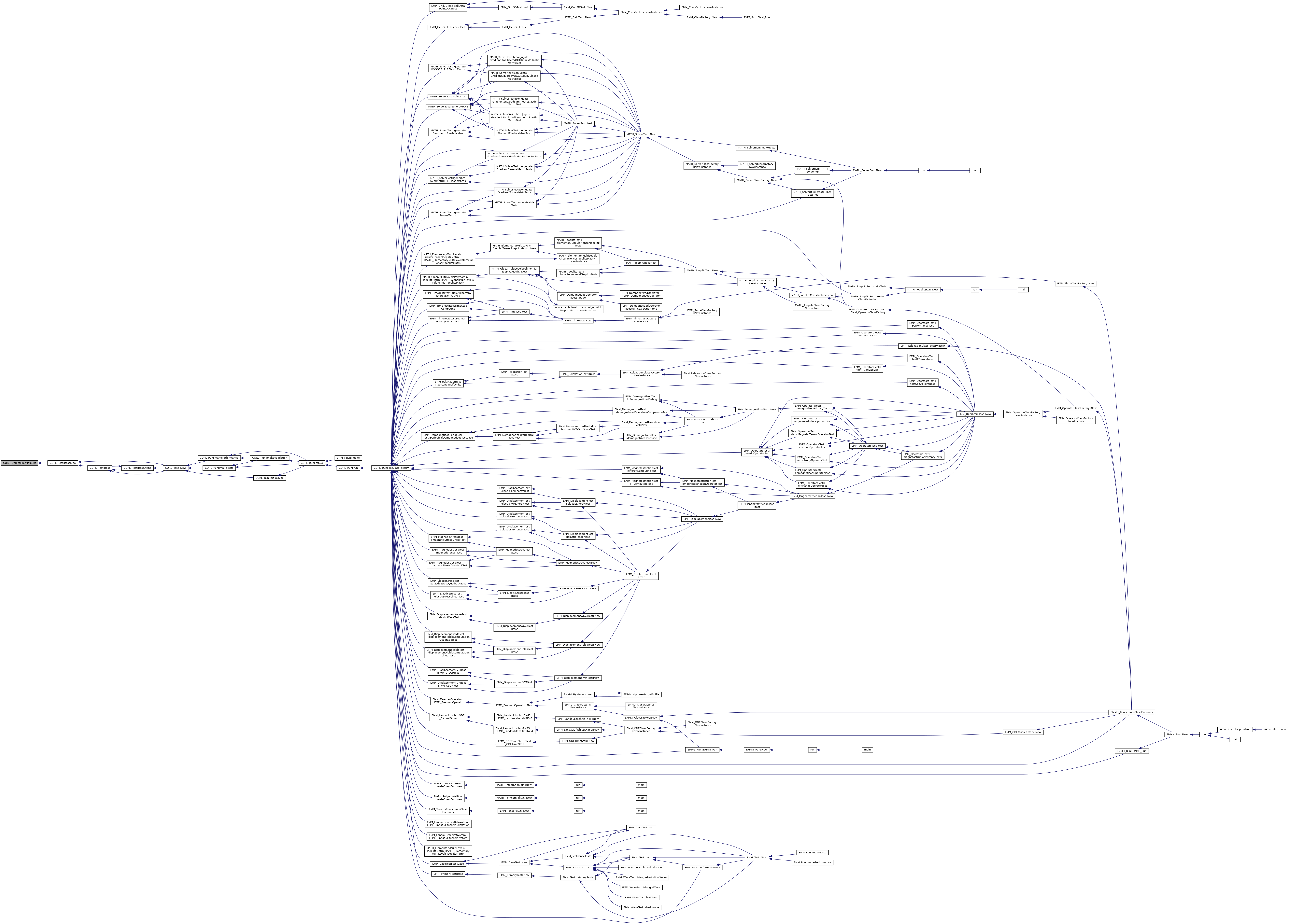
◆ getMaxUChar()
|
inlinestaticinherited |
get the max value for tUChar type
- Returns
- the max value for tUChar type
Referenced by CORE_Test::testType().
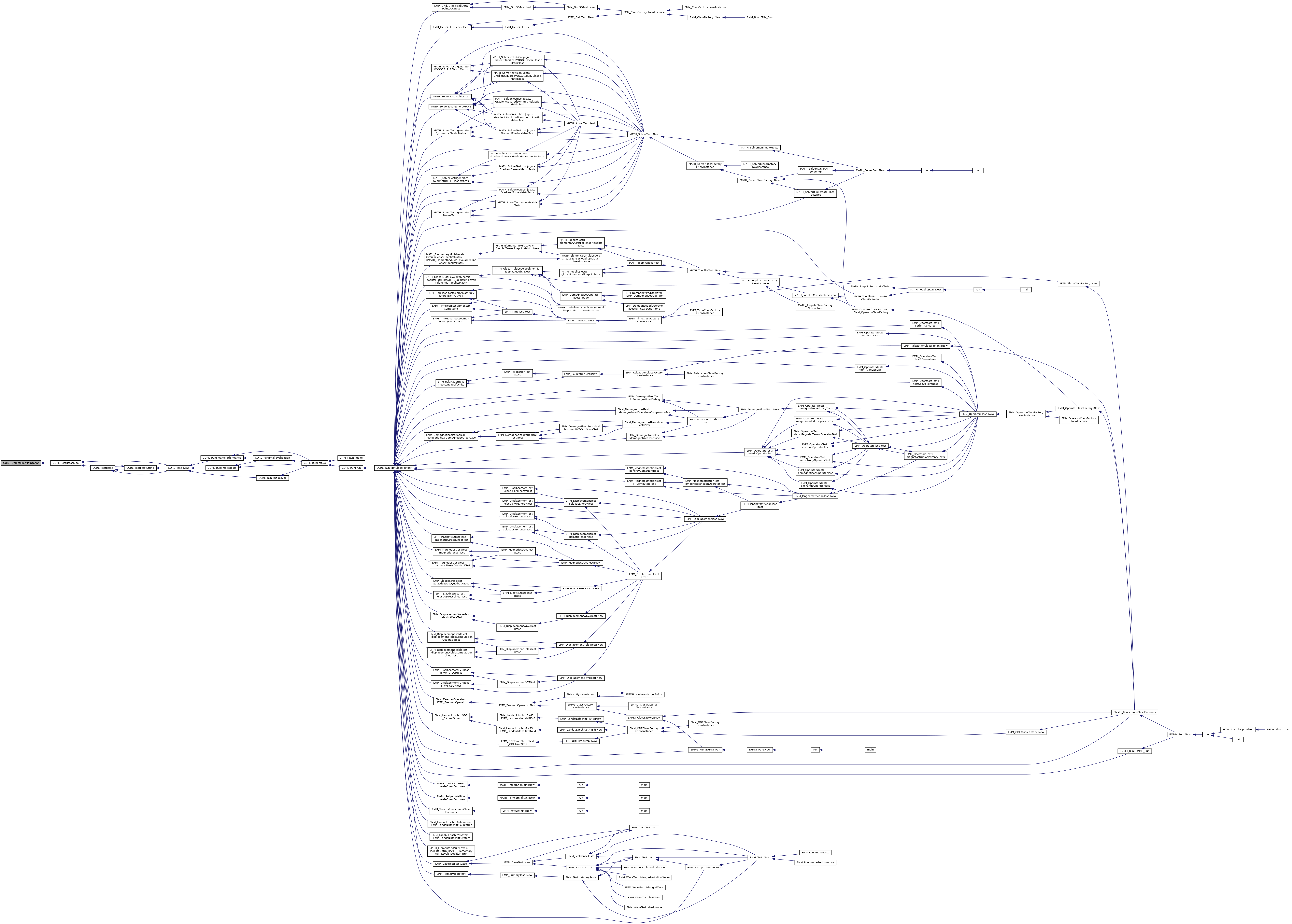
◆ getMaxUIndex()
|
inlinestaticinherited |
get the max value for difference the array/vector indexing type
- Returns
- the max value for difference the array/vector indexing type
Referenced by CORE_Vector< T >::addAfterIndices(), CORE_Vector< T >::search(), CORE_Test::testType(), CORE_Integer::toHexString(), and CORE_Integer::toString().
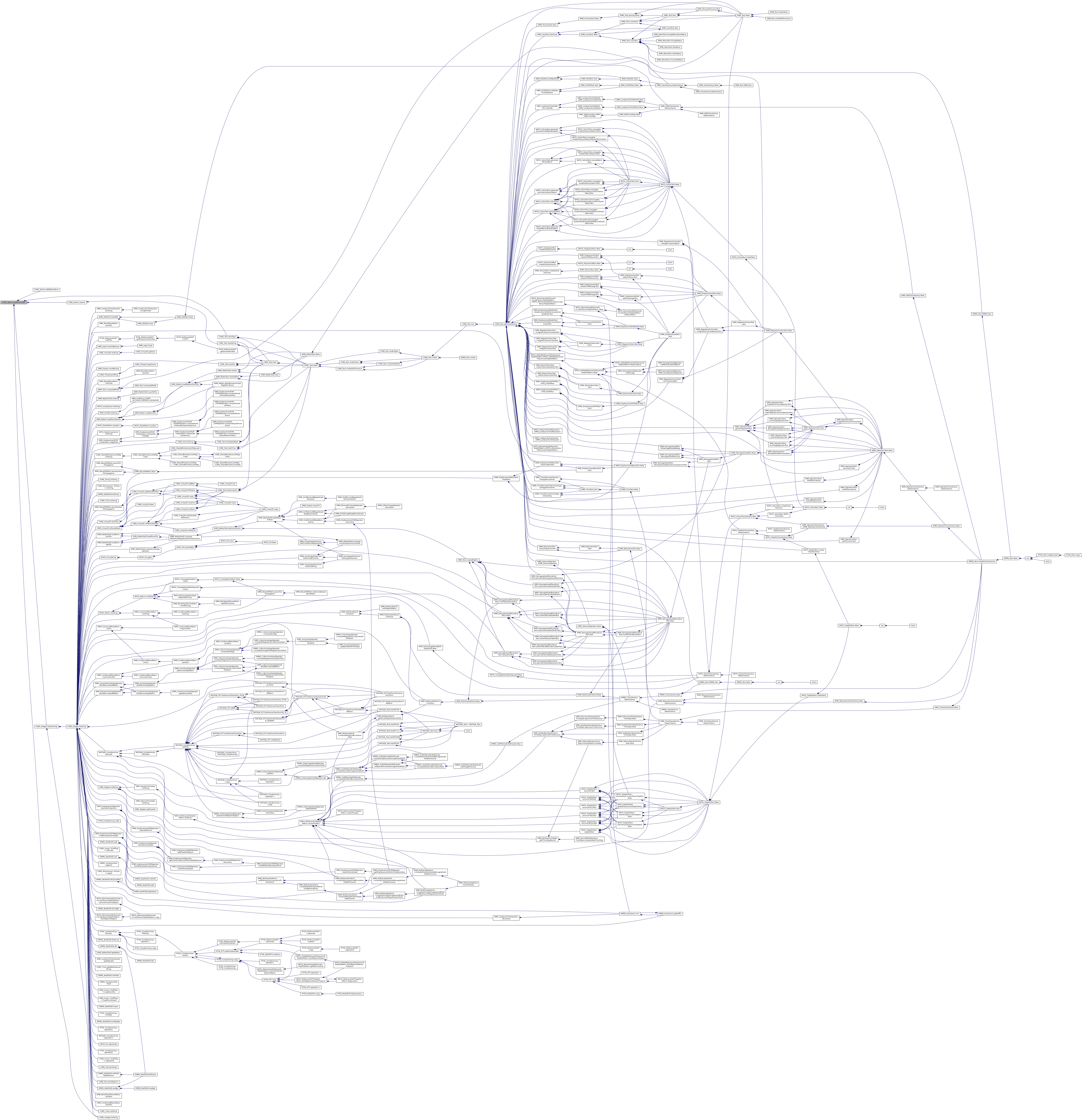
◆ getMaxUInt()
|
inlinestaticinherited |
get the max value for tUInt type
- Returns
- the max value for tUInt type
Referenced by EMM_Array< tCellFlag >::loadFromFile(), EMM_RealField::loadFromFile(), and CORE_Test::testType().

◆ getMaxUInteger()
|
inlinestaticinherited |
get the max value for the unsigned integer type
- Returns
- the max value for the unsigned integer type
Referenced by MATH_Pn::computeExtrenums(), EMM_MultiScaleGrid::computeLevelsNumber(), EMM_Input::restoreBackup(), MATH_P0::solve(), and CORE_Test::testType().

◆ getMaxULInt()
|
inlinestaticinherited |
get the max value for tULInt type
- Returns
- the max value for tULInt type
Referenced by CORE_Test::testType().
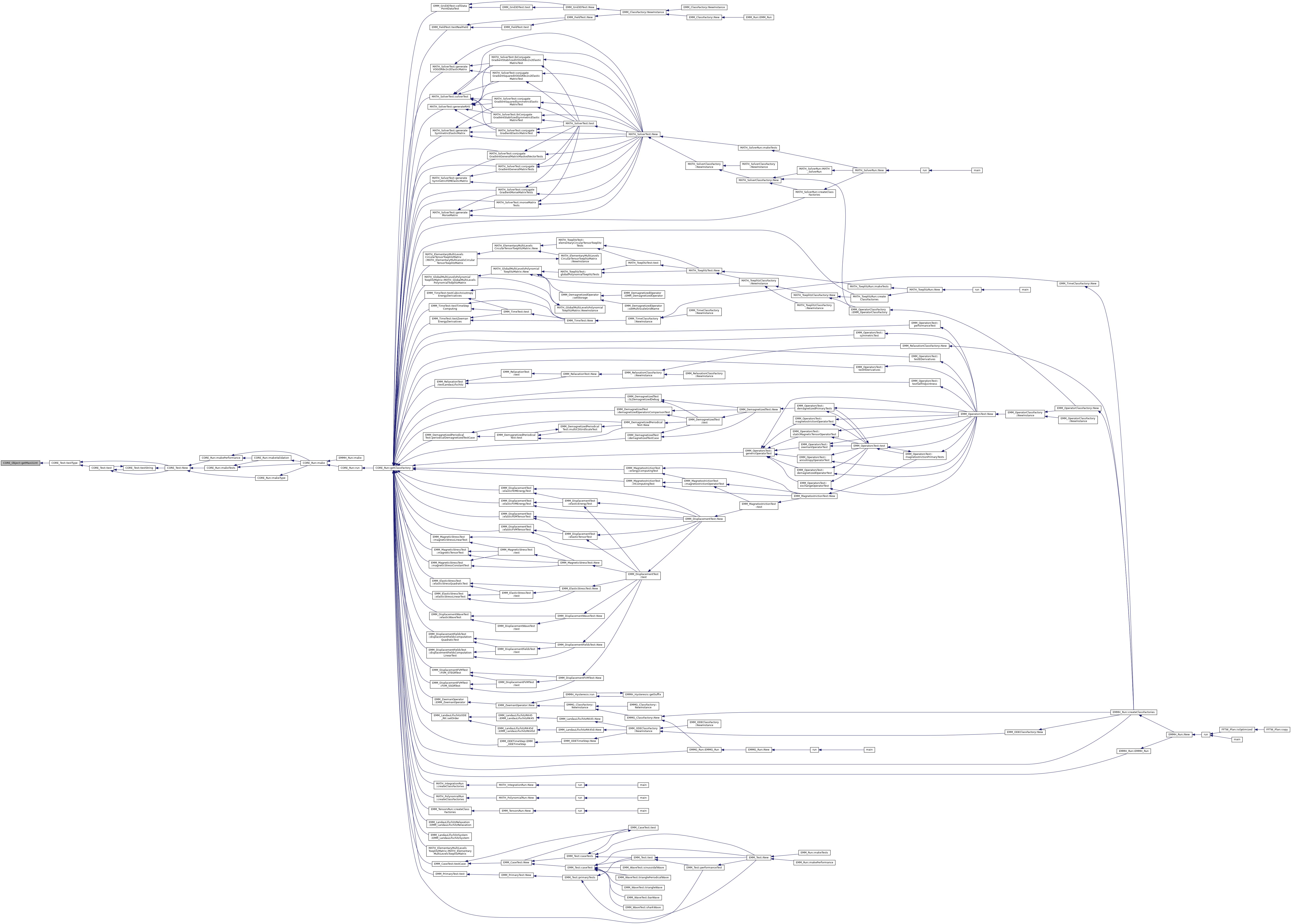
◆ getMaxULLInt()
|
inlinestaticinherited |
get the max value for tULLInt type
- Returns
- the max value for tULLInt type
Referenced by CORE_Test::testType().
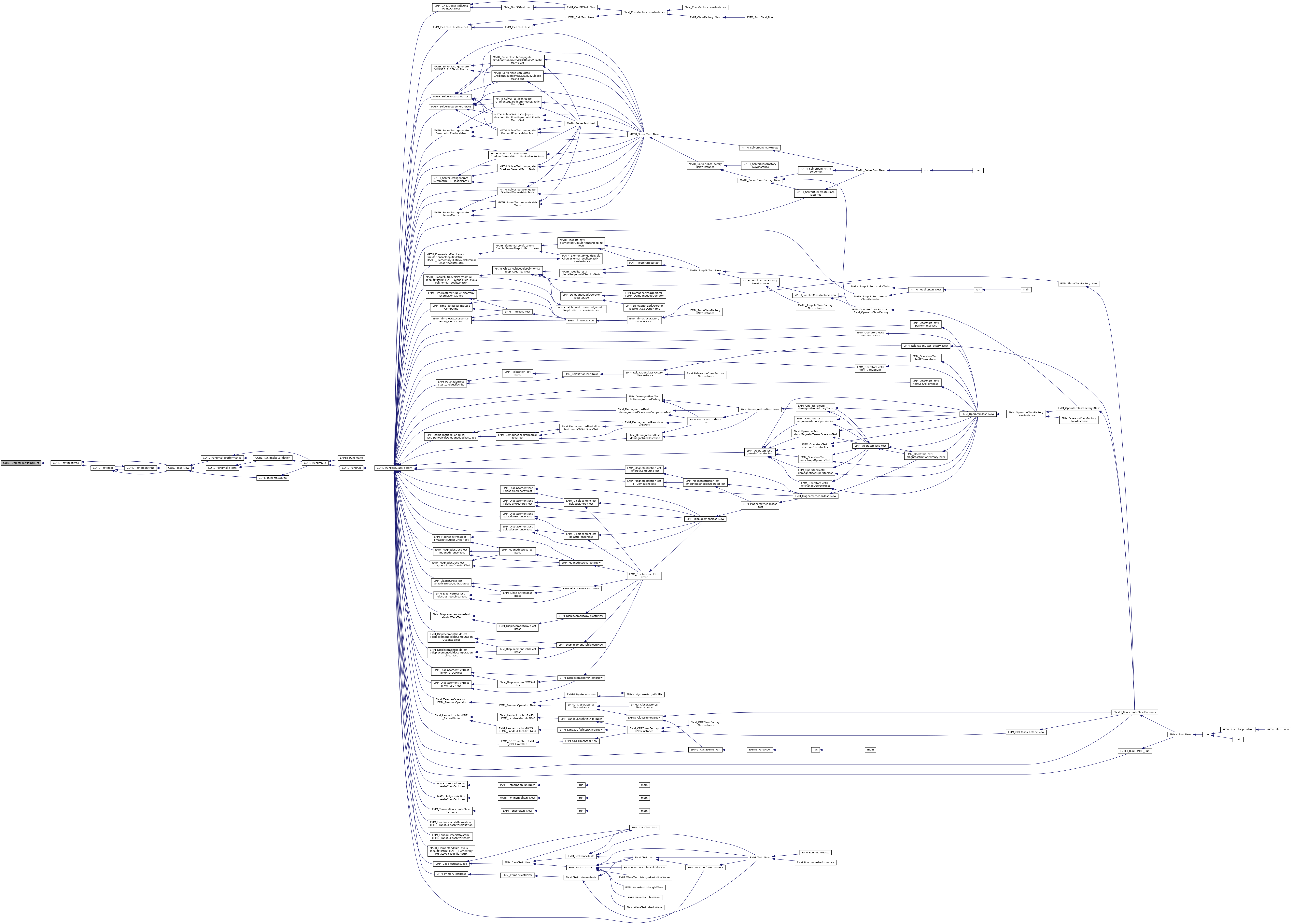
◆ getMaxUSInt()
|
inlinestaticinherited |
get the max value for tUSInt type
- Returns
- the max value for tUSInt type
Referenced by CORE_Test::testType().

◆ getMemorySize()
|
virtual |
return the memory size in byte
- Returns
- the memory size of the storage in bytes 1 Kb = 1024 bytes 1 Mb = 1024 Kb 1 Gb = 1024 Mb 1 Tb = 1024 Gb 1 Hb = 1024 Tb
Reimplemented from EMM_Operator.
Reimplemented in EMM_DisplacementFEMOperator, and EMM_DisplacementFVMOperator.
References EMM_Operator::getMemorySize(), EMM_Tensors::getMemorySize(), CORE_Array< T >::getMemorySize(), mAccelerator, mAccelerator_t, mConstraints, mEpsilonUt, mEquilibriumMatrix, mKappa, mLe, mLem, mLme, mLmem, mMs, mUn, mUnm1, mUs, mUt, mVn, mVt, null, and tULLInt.
Referenced by getLimitConditionOnPointsByReference(), EMM_DisplacementFVMOperator::getMemorySize(), and EMM_DisplacementFEMOperator::getMemorySize().


◆ getMinChar()
|
inlinestaticinherited |
get the min value for tChar type
- Returns
- the min value for tChar type
Referenced by CORE_Test::testType().
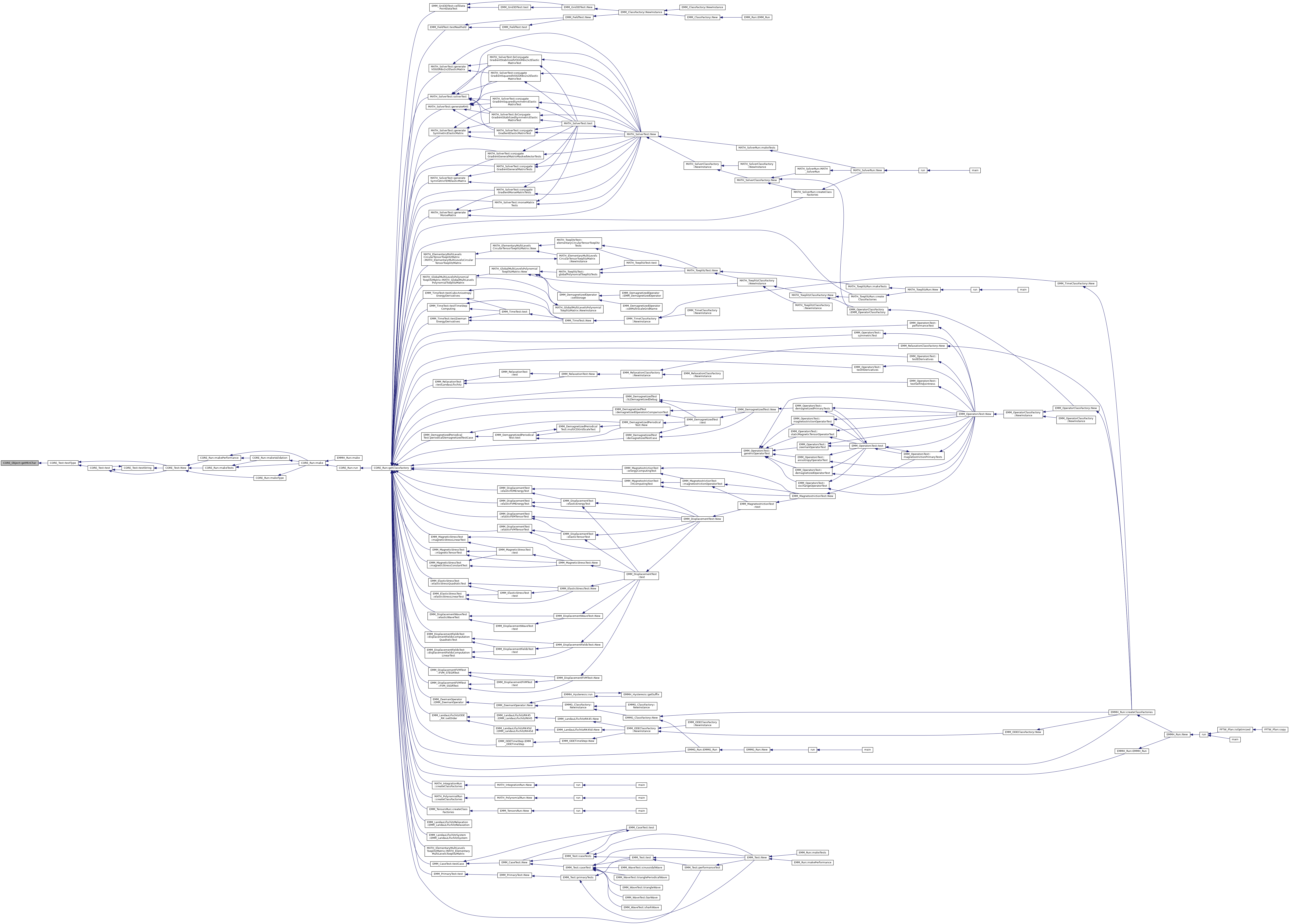
◆ getMinDouble()
|
inlinestaticinherited |
get the min value for tDouble type
- Returns
- the min value for tDouble type
Referenced by CORE_Test::testType().

◆ getMinFlag()
|
inlinestaticinherited |
get the min value for the tFlag type
- Returns
- the min value for the tFlag type
Referenced by CORE_Test::testType().
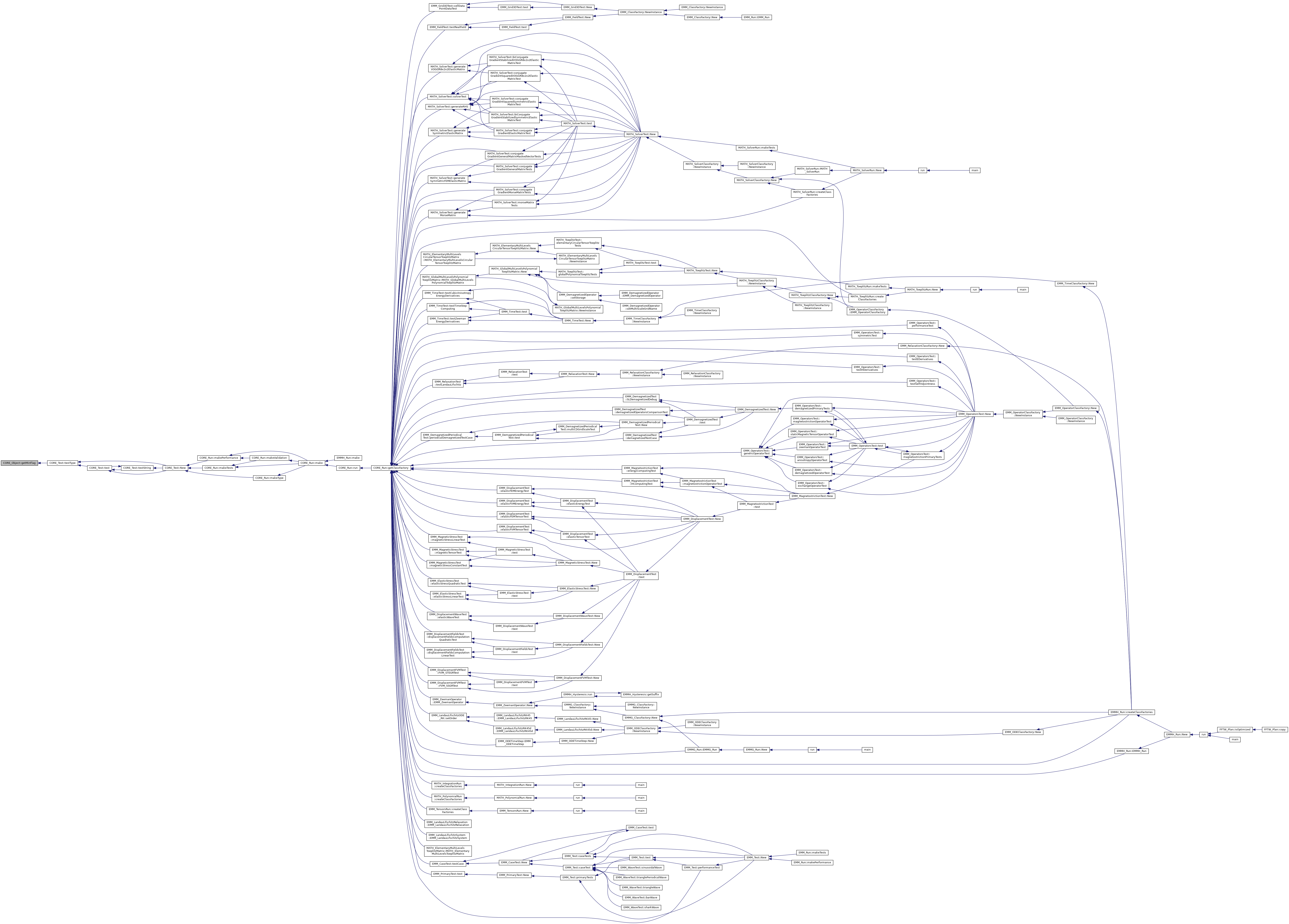
◆ getMinFloat()
|
inlinestaticinherited |
get the min value for tFloat type
- Returns
- the min value for tFloat type
Referenced by CORE_Test::testType().
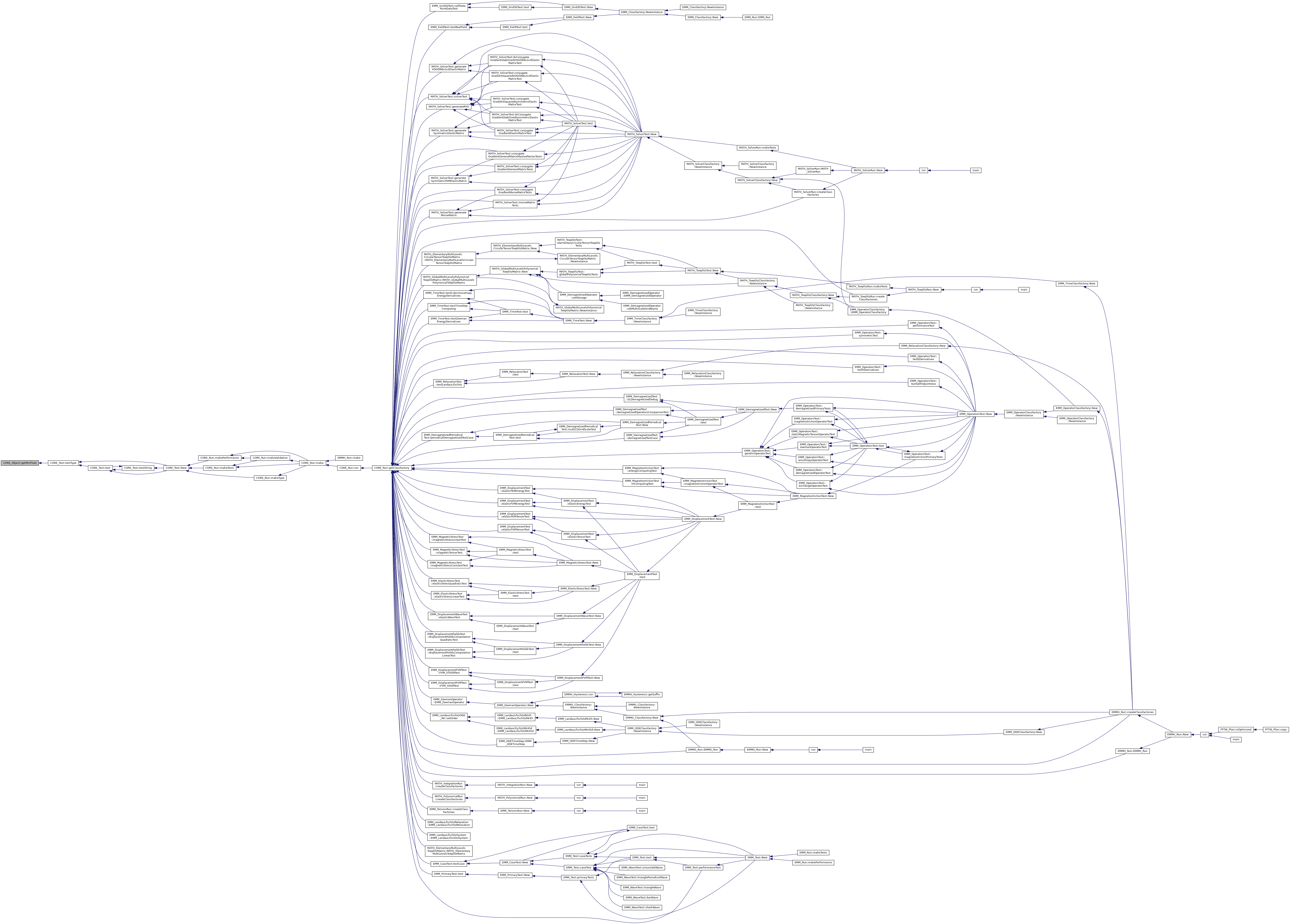
◆ getMinIndex()
|
inlinestaticinherited |
get the min value for the array/vector indexing type
- Returns
- the min value for the array/vector indexing type
Referenced by CORE_Test::testType().
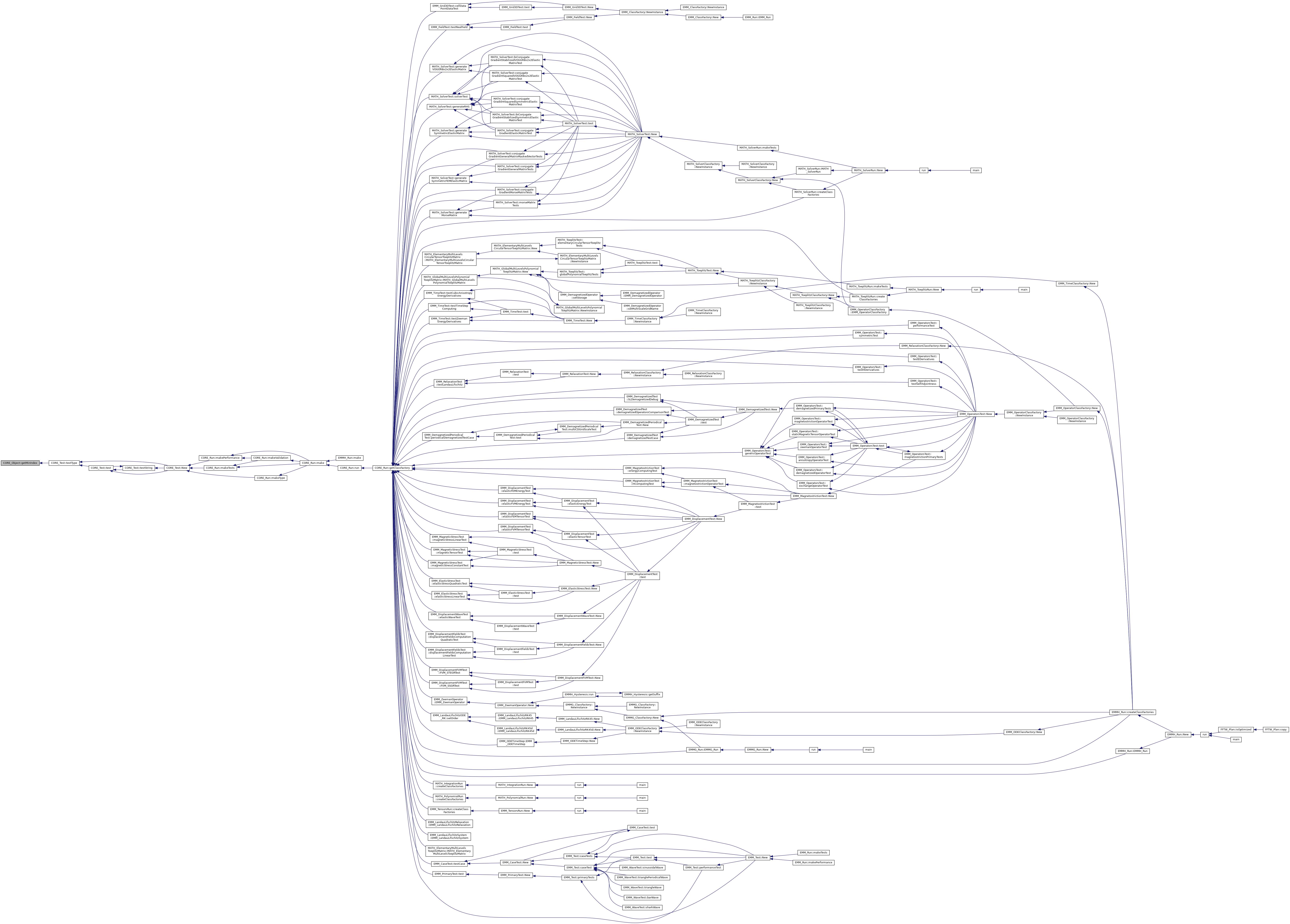
◆ getMinInt()
|
inlinestaticinherited |
get the min value for tInt type
- Returns
- the min value for tInt type
Referenced by CORE_Test::testType().
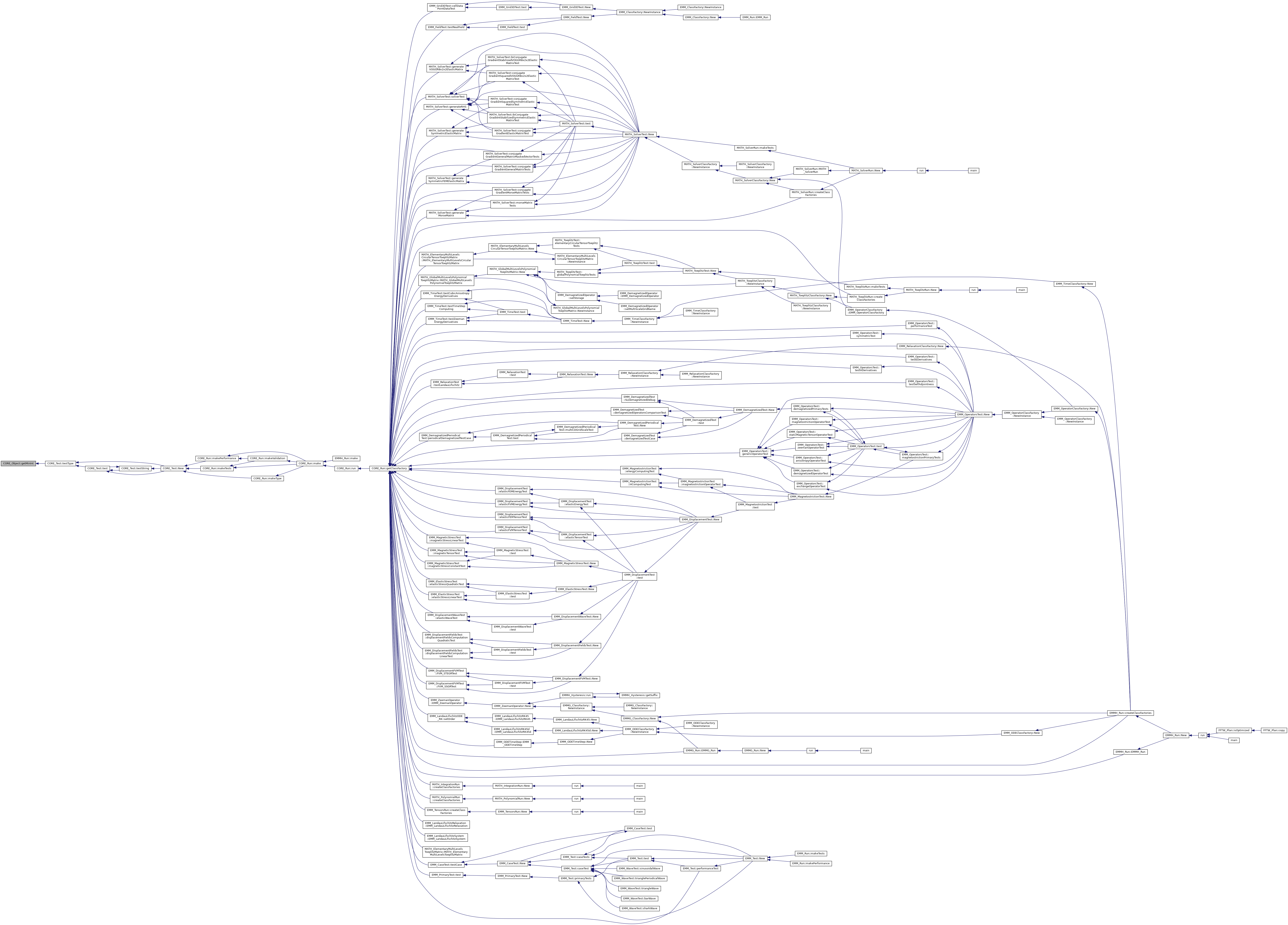
◆ getMinInteger()
|
inlinestaticinherited |
get the min value for the integer type
- Returns
- the minin value for the integer type
Referenced by CORE_Test::testType().

◆ getMinLDouble()
|
inlinestaticinherited |
get the min value for tLDouble type
- Returns
- the min value for tLDouble type
Referenced by CORE_Test::testType().

◆ getMinLInt()
|
inlinestaticinherited |
get the min value for tLInt type
- Returns
- the min value for tLInt type
Referenced by CORE_Test::testType().
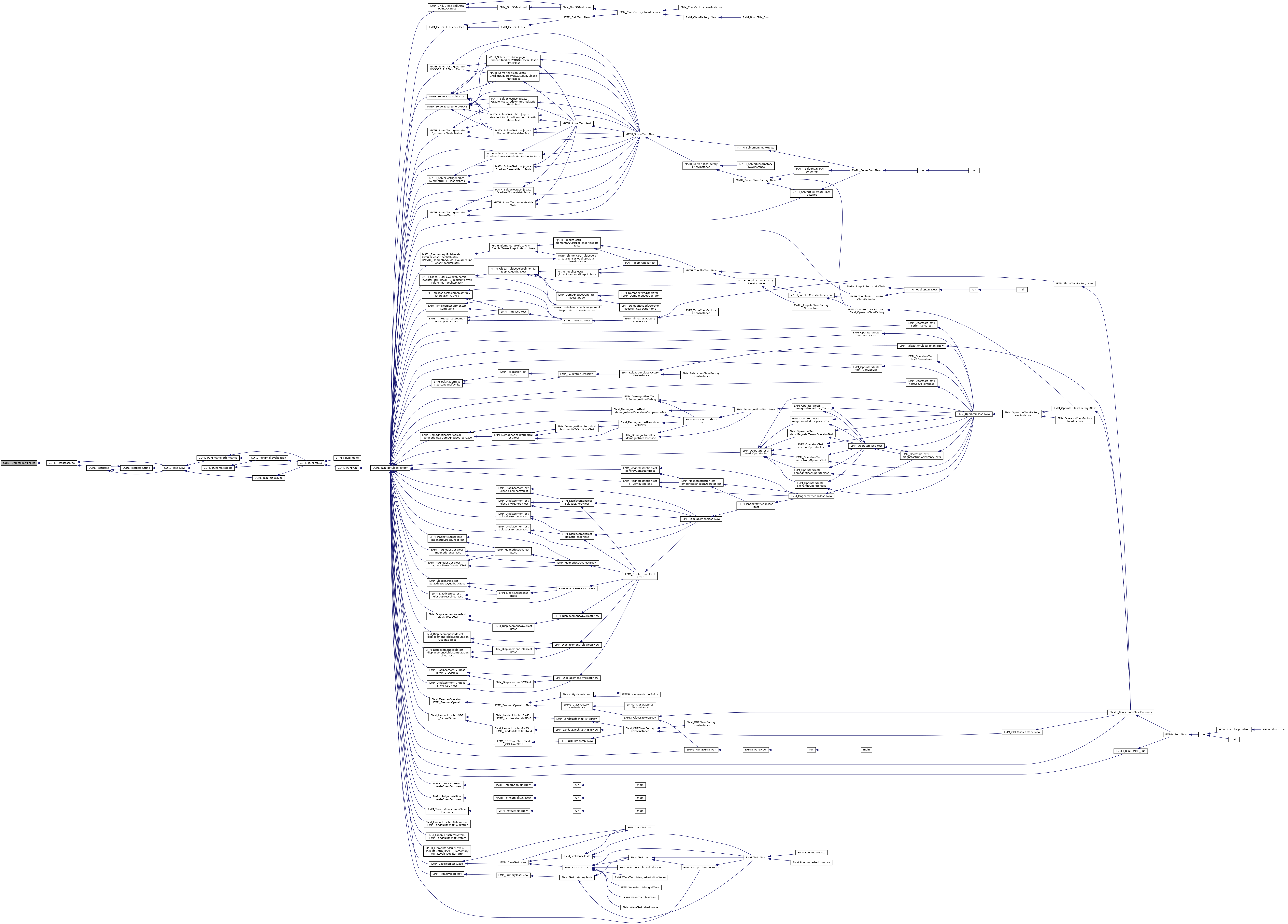
◆ getMinLLInt()
|
inlinestaticinherited |
get the min value for tLLInt type
- Returns
- the min value for tLLInt type
Referenced by CORE_Test::testType().

◆ getMinReal()
|
inlinestaticinherited |
get the min value for the real type
- Returns
- the min value for the real type
Referenced by CORE_Test::testType().
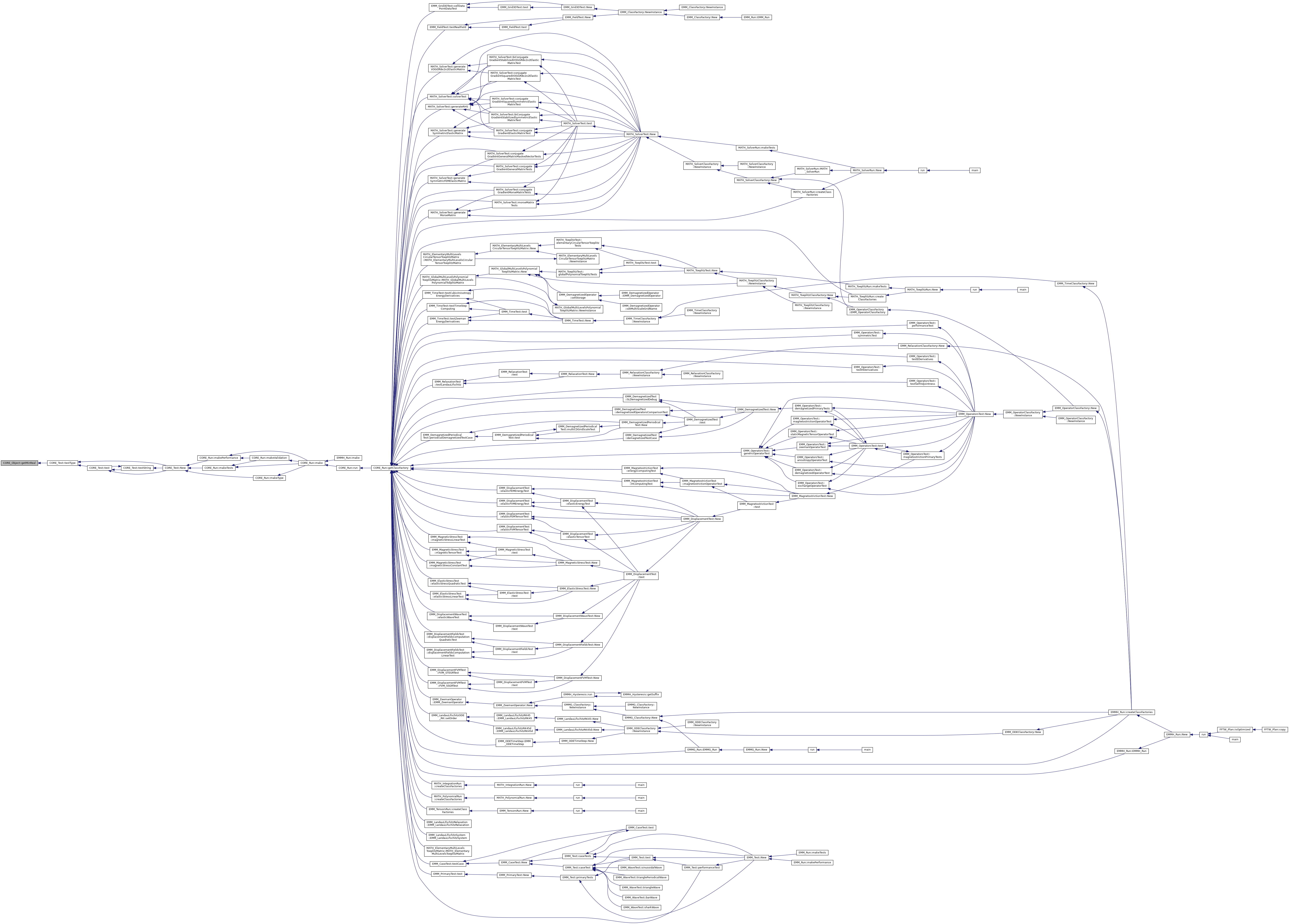
◆ getMinSInt()
|
inlinestaticinherited |
get the min value for tSInt type
- Returns
- the min value for tSInt type
Referenced by CORE_Test::testType().
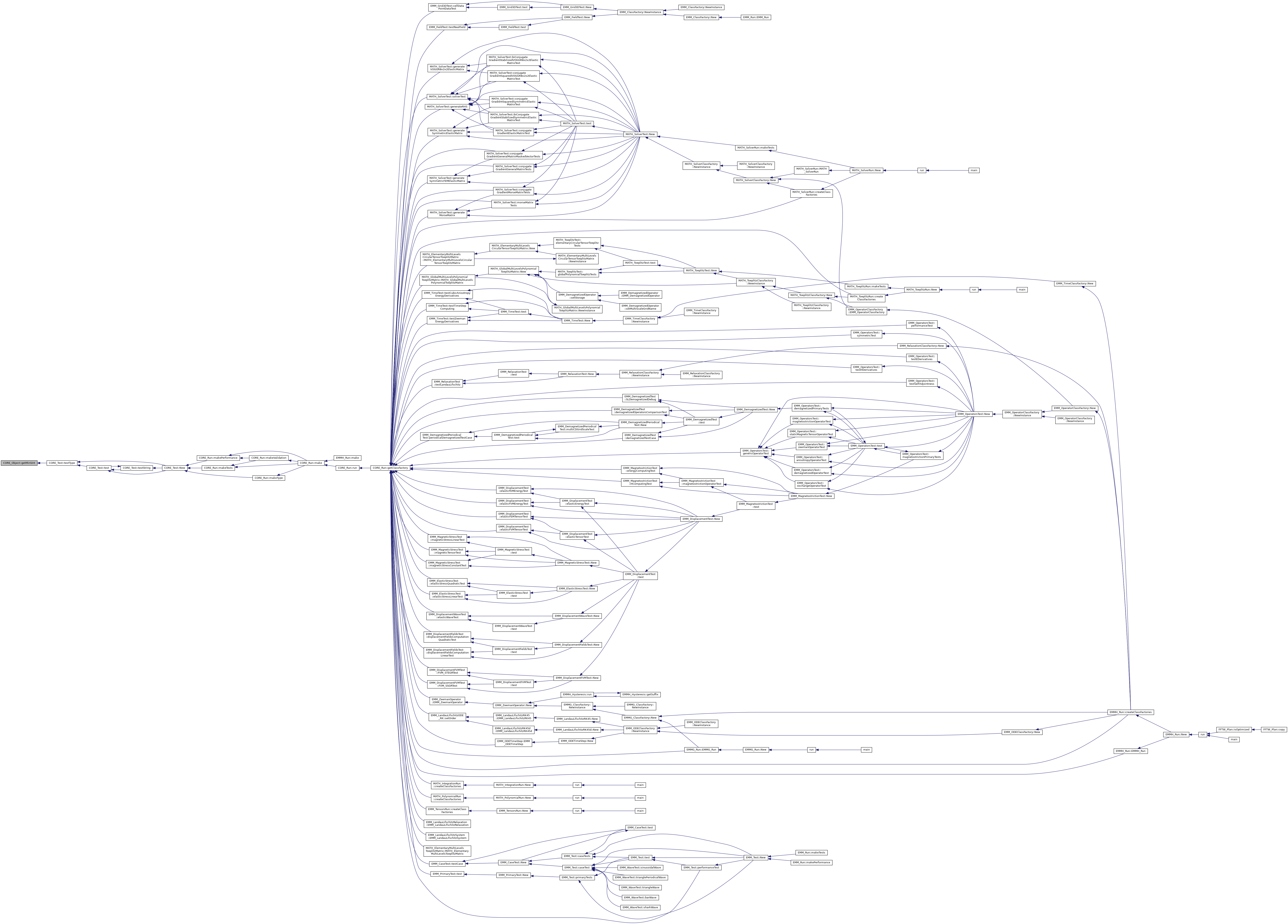
◆ getMinUChar()
|
inlinestaticinherited |
get the min value for tUChar type
- Returns
- the min value for tUChar type
Referenced by CORE_Test::testType().
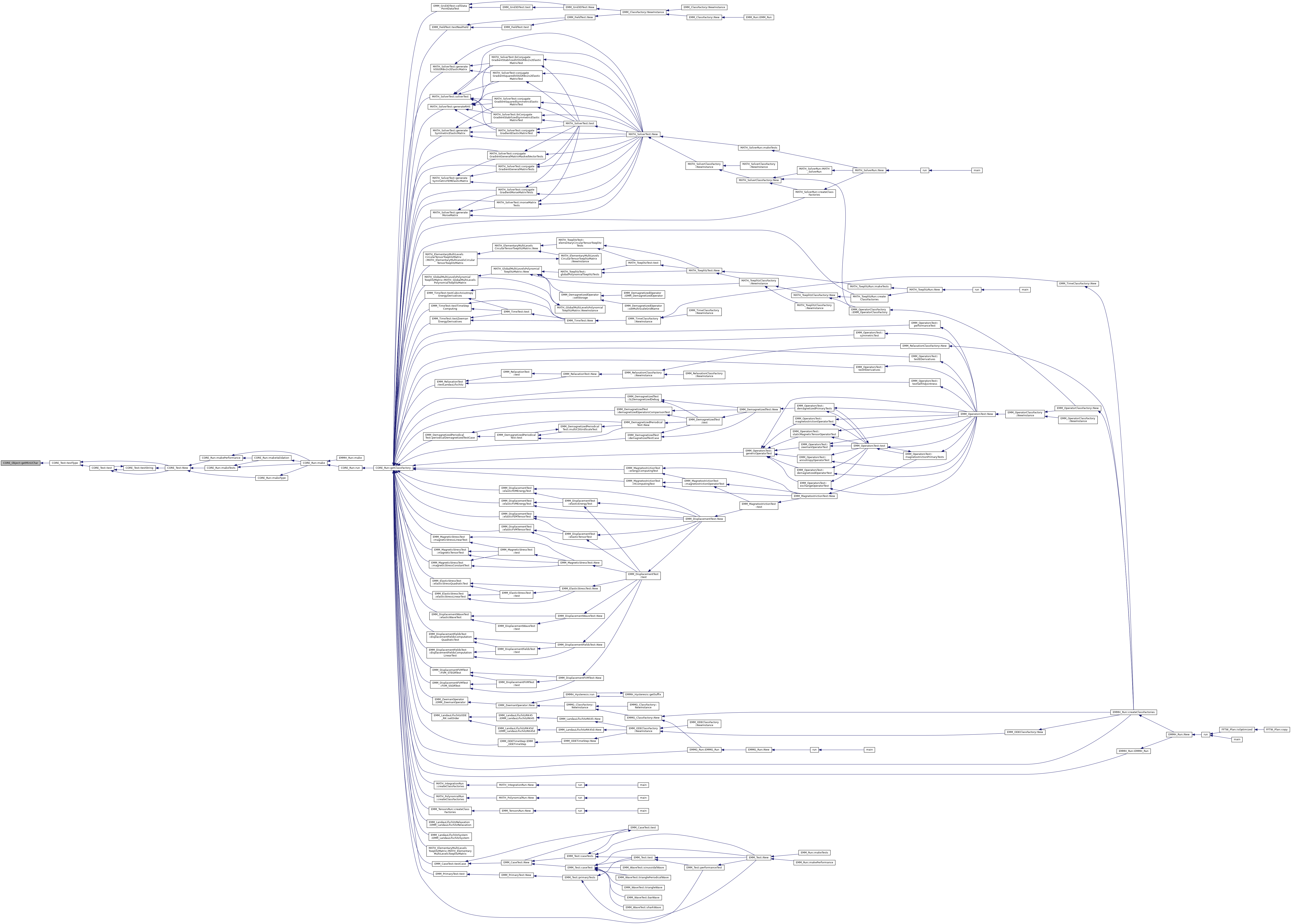
◆ getMinUIndex()
|
inlinestaticinherited |
get the min value for difference the array/vector indexing type
- Returns
- the min value for difference the array/vector indexing type
Referenced by CORE_Test::testType().
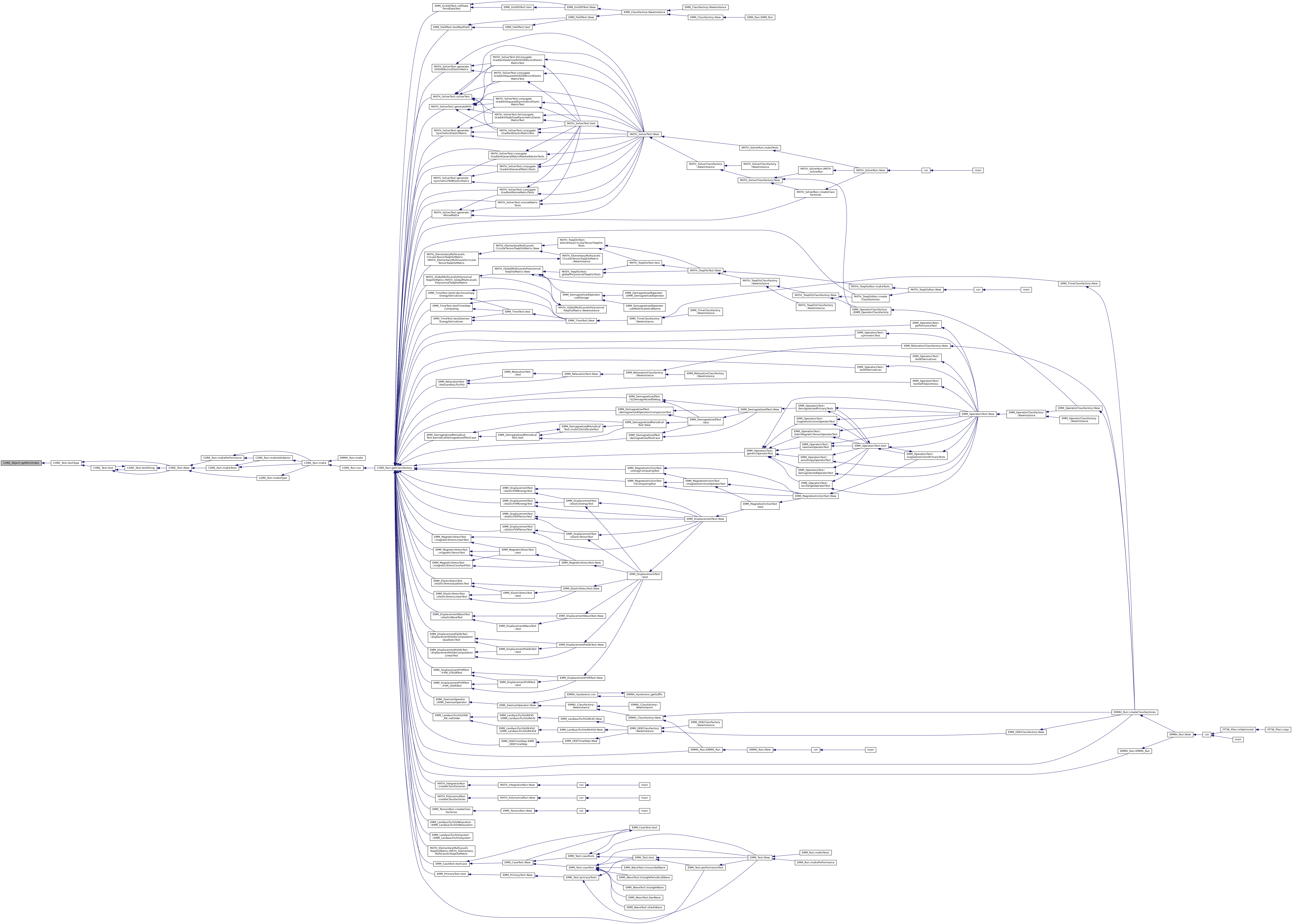
◆ getMinUInt()
|
inlinestaticinherited |
get the min value for tUInt type
- Returns
- the min value for tUInt type
Referenced by CORE_Test::testType().
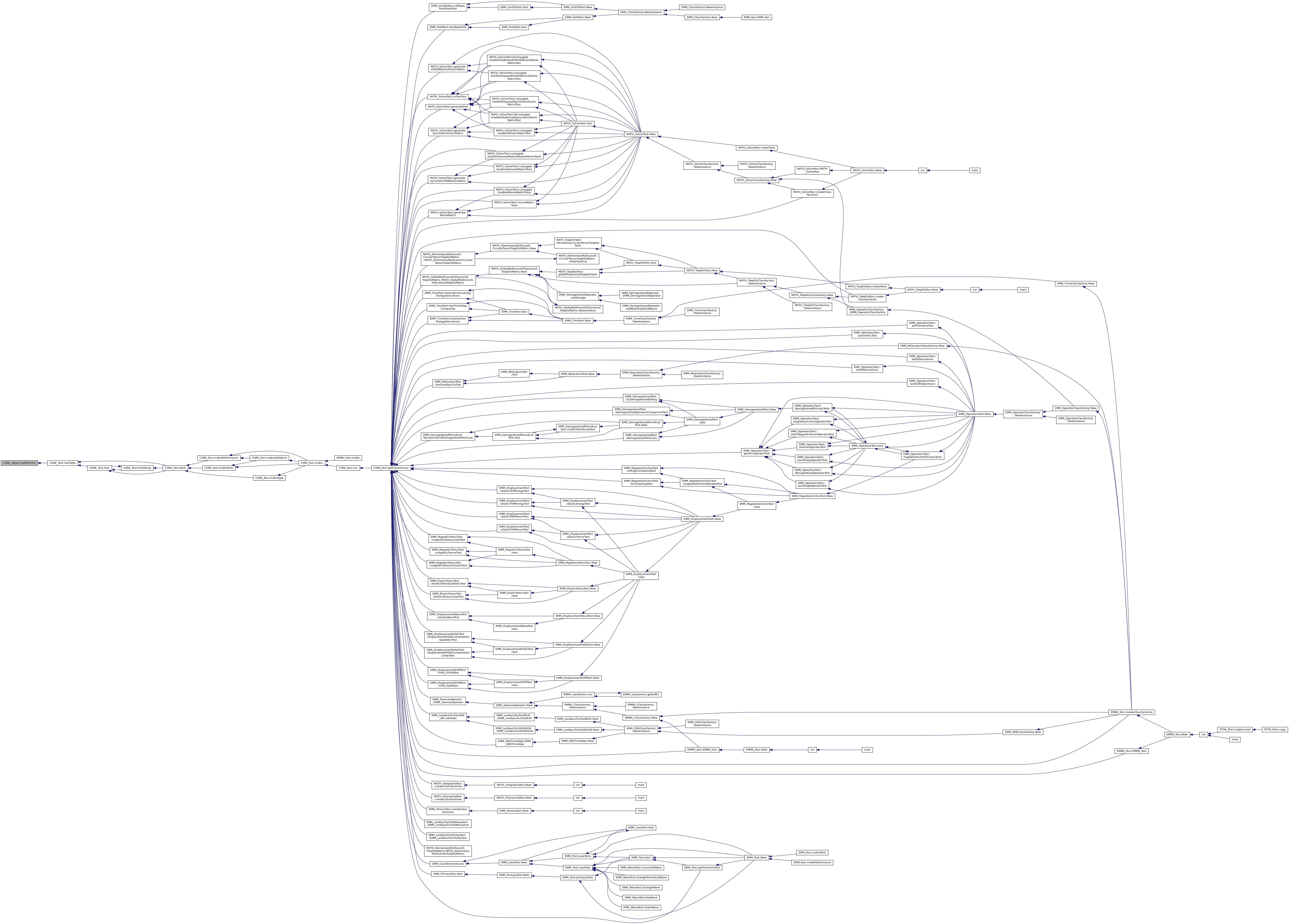
◆ getMinUInteger()
|
inlinestaticinherited |
get the min value for the unsigned integer type
- Returns
- the min value for the unsigned integer type
Referenced by CORE_Test::testType().

◆ getMinULInt()
|
inlinestaticinherited |
get the min value for tULInt type
- Returns
- the min value for tULInt type
Referenced by CORE_Test::testType().

◆ getMinULLInt()
|
inlinestaticinherited |
get the min value for tULLInt type
- Returns
- the min value for tULLInt type
Referenced by CORE_Test::testType().

◆ getMinUSInt()
|
inlinestaticinherited |
get the min value for tUSInt type
- Returns
- the min value for tUSInt type
Referenced by CORE_Test::testType().
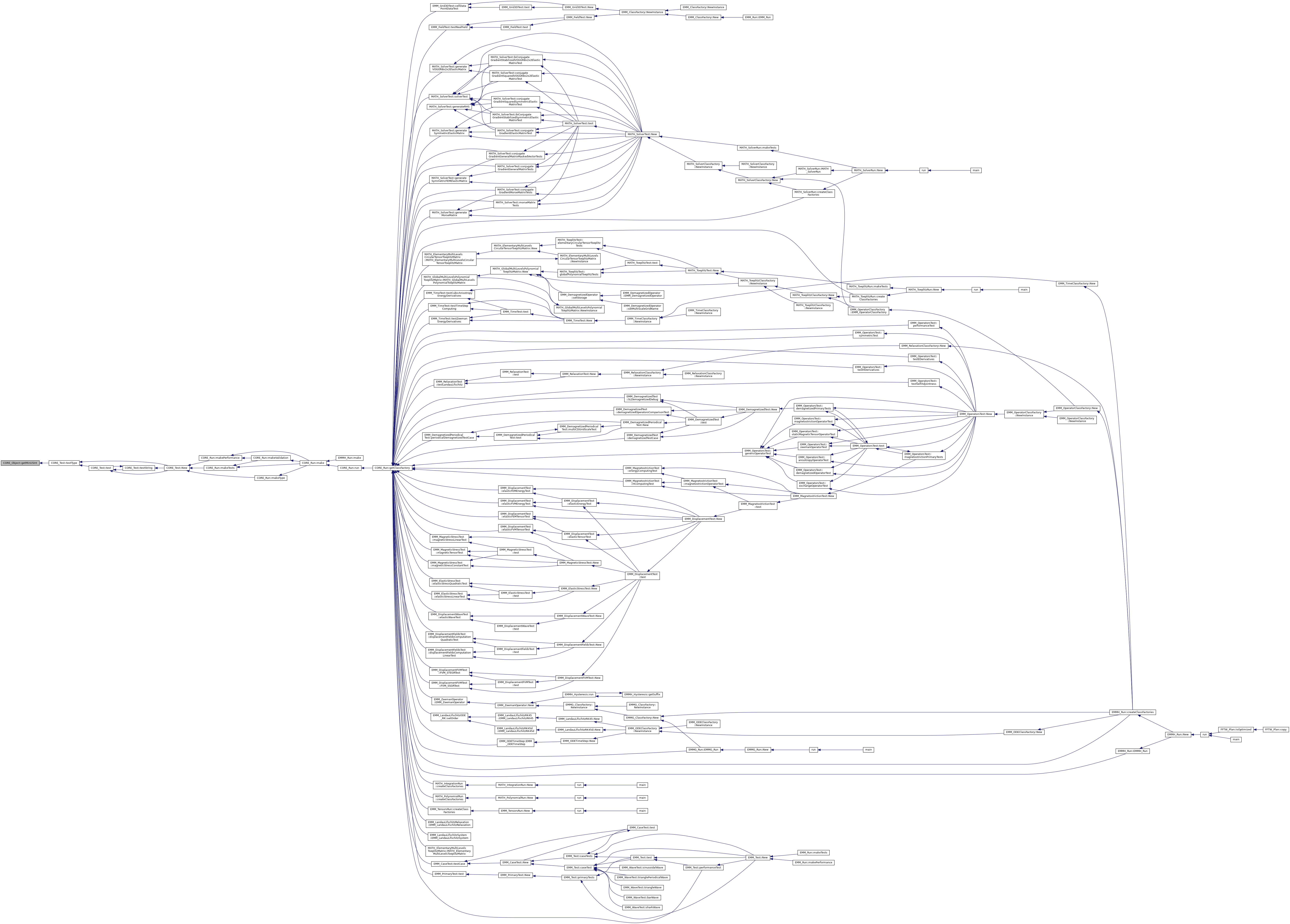
◆ getName()
|
inlinevirtualinherited |
return an human reading name of the operator
- Returns
- the name of the operator
References CORE_Object::getClassName(), EMM_Operator::isAffine(), EMM_Operator::isGradientComputationable(), tBoolean, tString, and tUIndex.
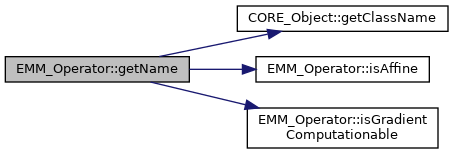
◆ getOut()
|
inlinestaticinherited |
◆ getPointerAddress()
|
inlineinherited |
return the identity string of the object
- Returns
- the identity string of the object
References CORE_Object::pointer2String().

◆ getRealEpsilon()
|
inlinestaticinherited |
get the eps which is the difference between 1 and the least value greater than 1 that is representable.
- Returns
- the eps which is the difference between 1 and the least value greater than 1 that is representable.
Referenced by MATH_P4::solveP4De(), and CORE_Test::testType().
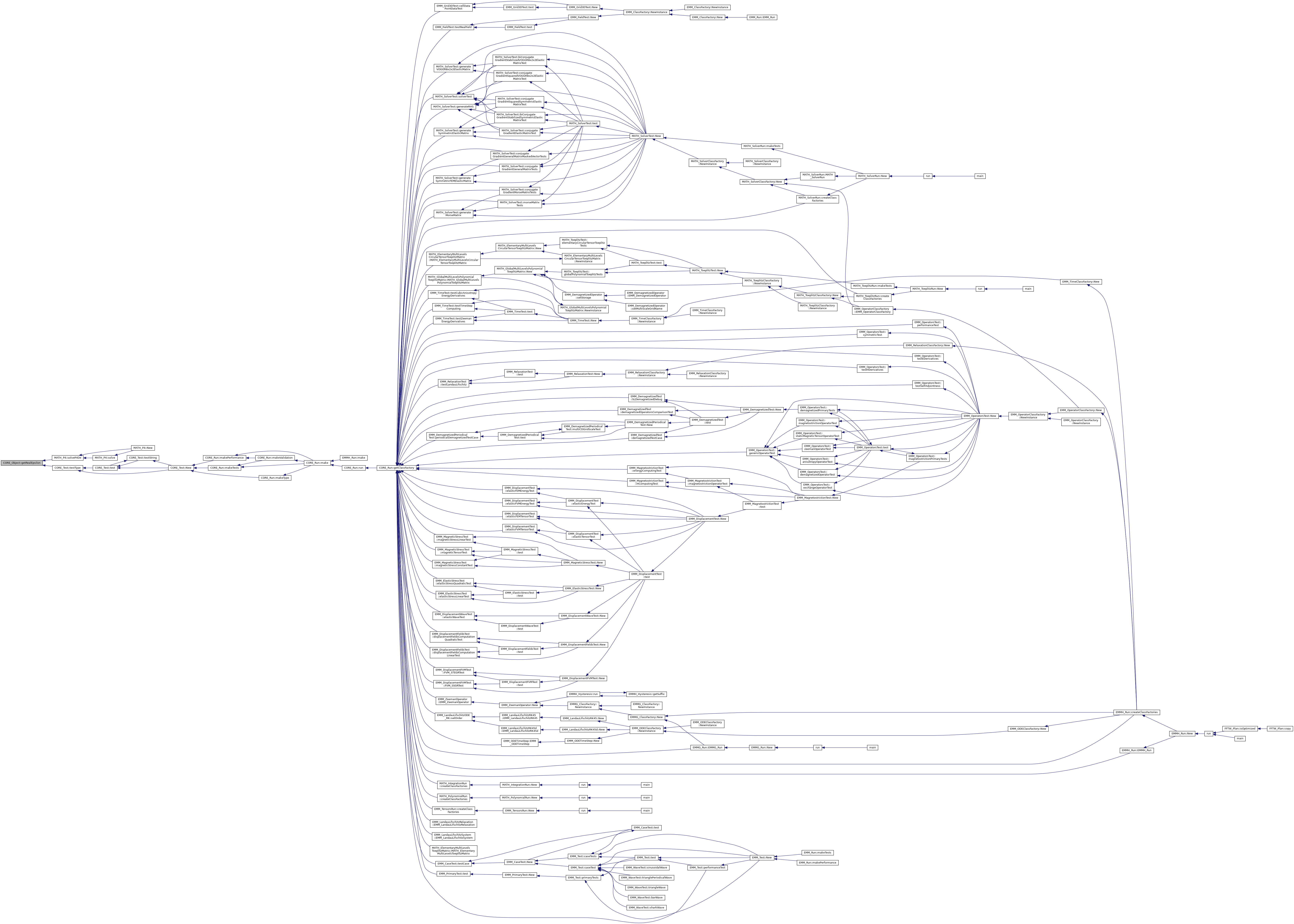
◆ getRealInfinity()
|
inlinestaticinherited |
get the infinity value
- Returns
- the inifinity value for the real type
Referenced by BrentFunction::BrentFunction(), EMM_OperatorsTest::compareDiscretizedData(), EMM_IterativeTimeStep::EMM_IterativeTimeStep(), EMM_SLElementaryDemagnetizedMatrix::Kxy(), NRFunction::NRFunction(), EMM_PolynomialInterpolationTimeStep::optimizeTimeFunction(), and CORE_Test::testType().
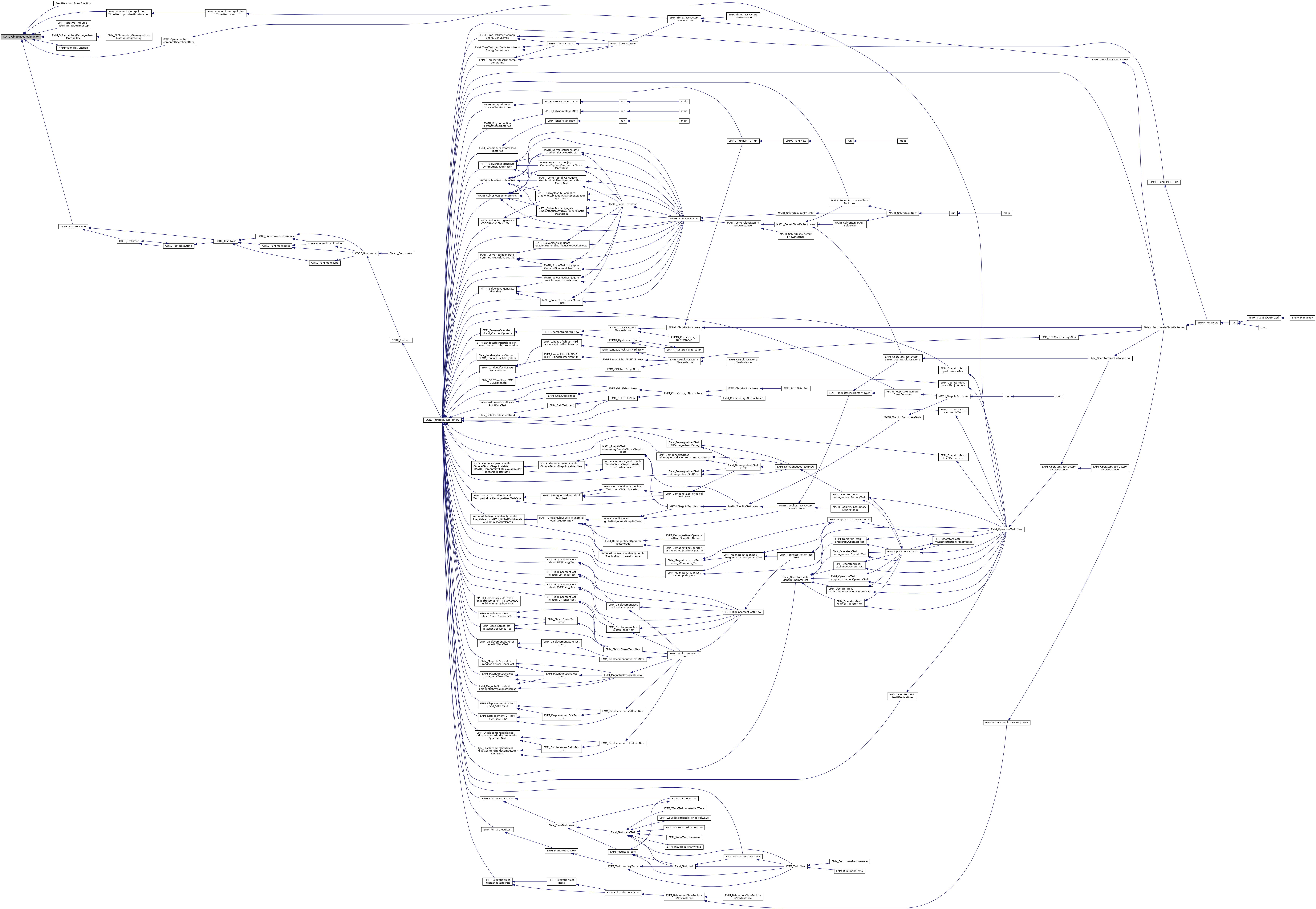
◆ getSharedPointer() [1/2]
|
inlineinherited |
get the shared pointer of this class into p
- Parameters
-
p : shared pointer of the class This
Referenced by CORE_Map< Key, Value >::getSharedPointer(), CORE_ArrayList< tString >::getSharedPointer(), EMM_Array< tCellFlag >::getSharedPointer(), CORE_Array< tCellFlag >::getSharedPointer(), CORE_MorseArray< tUChar >::getSharedPointer(), CORE_Vector< T >::getSharedPointer(), and CORE_Object::printObjectsInMemory().
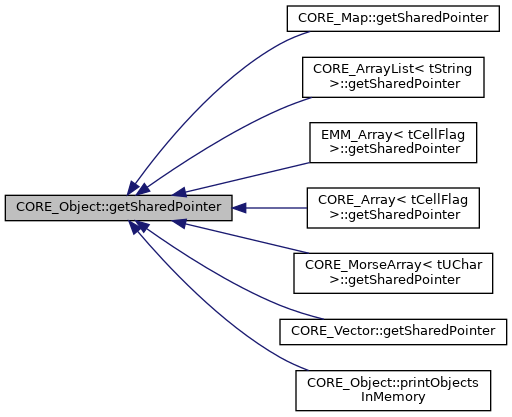
◆ getSharedPointer() [2/2]
|
inlineinherited |
get the shared pointer of this class into p
- Parameters
-
p : shared pointer of the class This
◆ getSolver()
|
inline |
get the solver of the system
- Returns
- the solver null by default
Referenced by computeEquilibriumState(), EMMG_ClassFactory::NewInstance(), and EMM_DisplacementFEMOperator::solveAcceleratorSystem().

◆ getThread()
|
inlinestaticinherited |
get the profilier
- Returns
- the profiler
Referenced by MATH_MaskVector::add(), MATH_Vector::add(), EMM_DisplacementFEMOperator::addBoundaryElasticStress(), EMM_DisplacementFEMOperator::buildDataOnNeumannBoundaryFaces(), EMM_DisplacementFVMOperator::computeCineticEnergy(), EMM_DisplacementFVMOperator::computeElasticStress(), EMM_DisplacementFEMOperator::computeElasticStress(), EMM_DisplacementFVMOperator::computeElasticTensor(), EMM_DisplacementFEMOperator::computeElasticTensor(), EMM_StaticMagneticTensorOperator::computeEnergy(), EMM_CubicAnisotropyOperator::computeEnergy(), EMM_MagnetostrictionOperator::computeEnergy(), computeEnergy(), EMM_AnisotropyOperator::computeEnergyWithMagneticExcitation(), EMM_DisplacementFVMOperator::computeEquilibriumMatrixDiagonalConditioner(), EMM_DisplacementFEMOperator::computeEquilibriumMatrixDiagonalConditioner(), EMM_FullExchangeOperator::computeMagneticExcitationField(), EMM_StaticMagnetostrictionOperator::computeMagneticExcitationField(), EMM_LinearAnisotropyOperator::computeMagneticExcitationField(), EMM_StaticMagneticTensorOperator::computeMagneticExcitationField(), EMM_CubicAnisotropyOperator::computeMagneticExcitationField(), EMM_MinimalExchangeOperator::computeMagneticExcitationField(), EMM_AnisotropyOperator::computeMagneticExcitationField(), EMM_MagnetostrictionOperator::computeMagneticExcitationField(), EMM_CubicAnisotropyOperator::computeMagneticExcitationFieldGradient(), EMM_AnisotropyOperator::computeMagneticExcitationFieldGradient(), EMM_DisplacementFVMOperator::computeMagneticStress(), EMM_DisplacementFEMOperator::computeMagneticStress(), EMM_OptimalTimeStep::computeOptimalTimeStep(), EMM_DisplacementFEMOperator::computeStressConstraintEnergy(), EMM_FullExchangeOperator::discretize(), EMM_MinimalExchangeOperator::discretize(), EMM_CondensedMassMatrix::discretize(), EMM_LinearAnisotropyOperator::discretize(), EMM_AnisotropyOperator::discretize(), EMM_DemagnetizedOperator::discretize(), EMMG_SLDemagnetizedOperator::discretize(), EMM_LandauLifschitzSystem::discretize(), MATH_Vector::divide(), MATH_MaskVector::dot(), MATH_Vector::dot(), EMM_4SymmetricTensors::doubleDot(), EMM_4Tensors::doubleDotCrossDoubleDotScalar(), EMM_4Tensors::doubleDotCrossProduct(), EMM_4Tensors::doubleDotCrossSquaredScalar(), EMM_4Tensors::doubleDotProduct(), MATH_Vector::init(), MATH_MaskVector::init(), EMM_LandauLifschitzODE_RK::integrateMagnetizationFieldAtTime(), EMM_DisplacementFVM_Interpolator::interpolateUAtVertices(), EMMG_SLDemagnetizedOperator::localAssembly(), nullProjectionOnDirichletBoundary(), periodicProjection(), EMM_2PackedSymmetricTensors::product(), EMM_CanonicalMassMatrix::product(), MATH_FullMatrix::product(), EMM_CondensedMassMatrix::product(), EMM_BlockMassMatrix::product(), MATH_MorseMatrix::product(), EMMG_SLDemagnetizedOperator::product(), projectionOnDirichletBoundary(), EMM_LandauLifschitzSystem::resetOperatorsToInitialState(), EMM_DisplacementFVMOperator::setBoundaryFaceTypes(), FFTW_MultiDFTs::setFFT(), FFTW_MultiLevelsDFT::setFFT(), FFTW_MultiLevelsDFT::setLevels(), FFTW_MultiDFTs::setPlan(), FFTW_MultiLevelsDFT::setPlan(), EMM_CondensedMassMatrix::solve(), EMM_LandauLifschitzODE::solveODE(), EMM_4SymmetricTensors::squaredDoubleDot(), EMM_4Tensors::squaredDoubleDotCrossScalar(), EMM_4Tensors::squaredDoubleDotScalar(), EMM_CanonicalMassMatrix::symmetricDot(), EMM_CondensedMassMatrix::symmetricDot(), EMM_BlockMassMatrix::symmetricDot(), FFTW_Test::test(), MATH_SolverTest::test(), EMM_ODETest::testODE(), and EMM_Grid3D::updateLimitConditionOnPoints().

◆ getTimeIntegrationMethod()
|
inline |
get the time integration method for next time step
- Returns
- integration method in P1 | TE
References mTimeIntegrationMethod.
◆ getTimeIntegrationOrder()
|
inline |
get the time integration order for new field
- Returns
- integration order in {1,2}
References mTimeIntegrationOrder.
◆ getTimeStep()
|
inline |
◆ getTypeName()
|
inlinestaticinherited |
◆ getVelocity() [1/3]
|
inline |
get the velocity for writing
- Returns
- the velocity field
Referenced by computeCineticEnergyAtTime(), EMM_DisplacementFVMOperator::discretize(), EMM_DisplacementFEMOperator::discretize(), EMM_DisplacementFVMOperator::getDataFieldSpace(), EMM_DisplacementFEMOperator::getDataFieldSpace(), EMM_DisplacementFVMOperator::resetToInitialState(), and resetToInitialState().
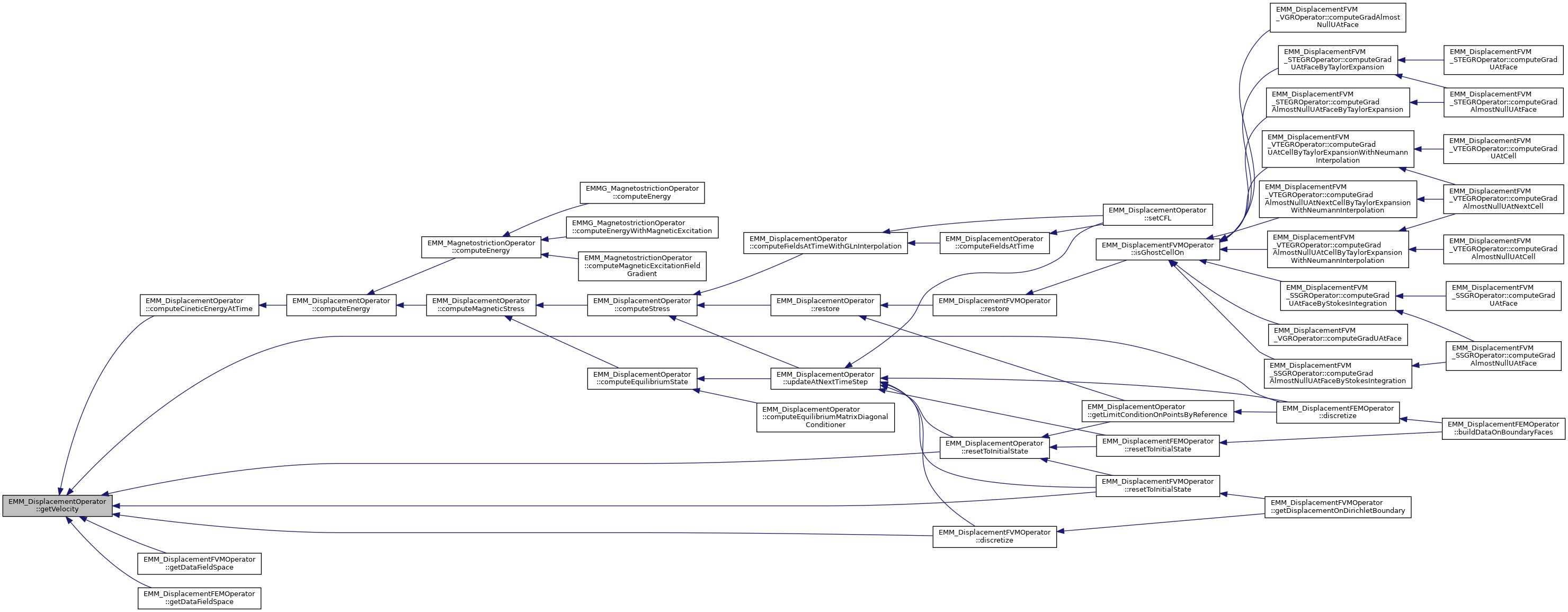
◆ getVelocity() [2/3]
|
inline |
get the velocity at time
- Parameters
-
t time to get velocity
References isSteadyState().

◆ getVelocity() [3/3]
|
inline |
get the velocity at t for reading
- Returns
- the velocity field
◆ initializeEquilibriumSolver()
|
protectedvirtual |
initialize the equilibrium solver
- Parameters
-
[in] U0 is the value of U on dirichlet points
- create the equilibrium matrix
- compute the preconditioner matrix
- compute the constant part of the affine elastic stree operator and store it in accelerator field

Reimplemented in EMM_DisplacementFVM_VIGROperator.
References computeElasticStress(), getAccelerator(), EMM_RealField::getDimension(), getDisplacement(), EMM_RealField::getSize(), EMM_RealField::getValues(), EMM_RealField::initField(), mEquilibriumMatrix, NewEquilibriumMatrix(), EMM_RealField::NewInstance(), EMM_RealField::setDimension(), EMM_RealField::setSize(), spaceProjection(), spaceRelevant(), tDimension, tReal, tUIndex, and EMM_Object::Z.
Referenced by computeEquilibriumMatrixDiagonalConditioner(), EMM_DisplacementFVM_VIGROperator::initializeEquilibriumSolver(), restore(), and updateAtNextTimeStep().
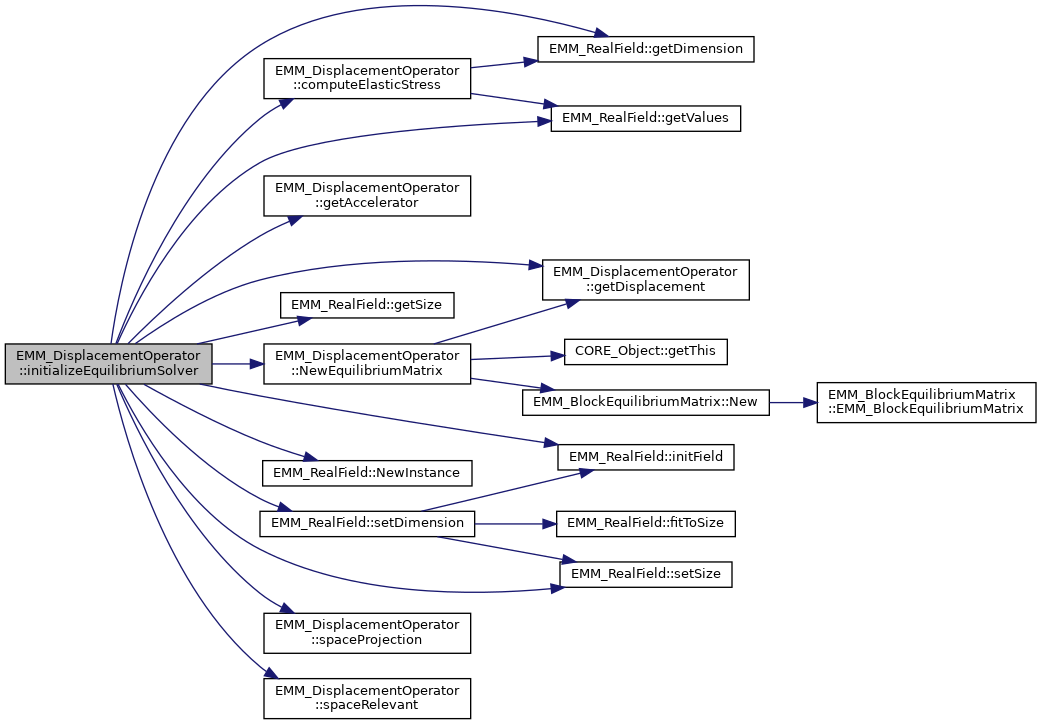
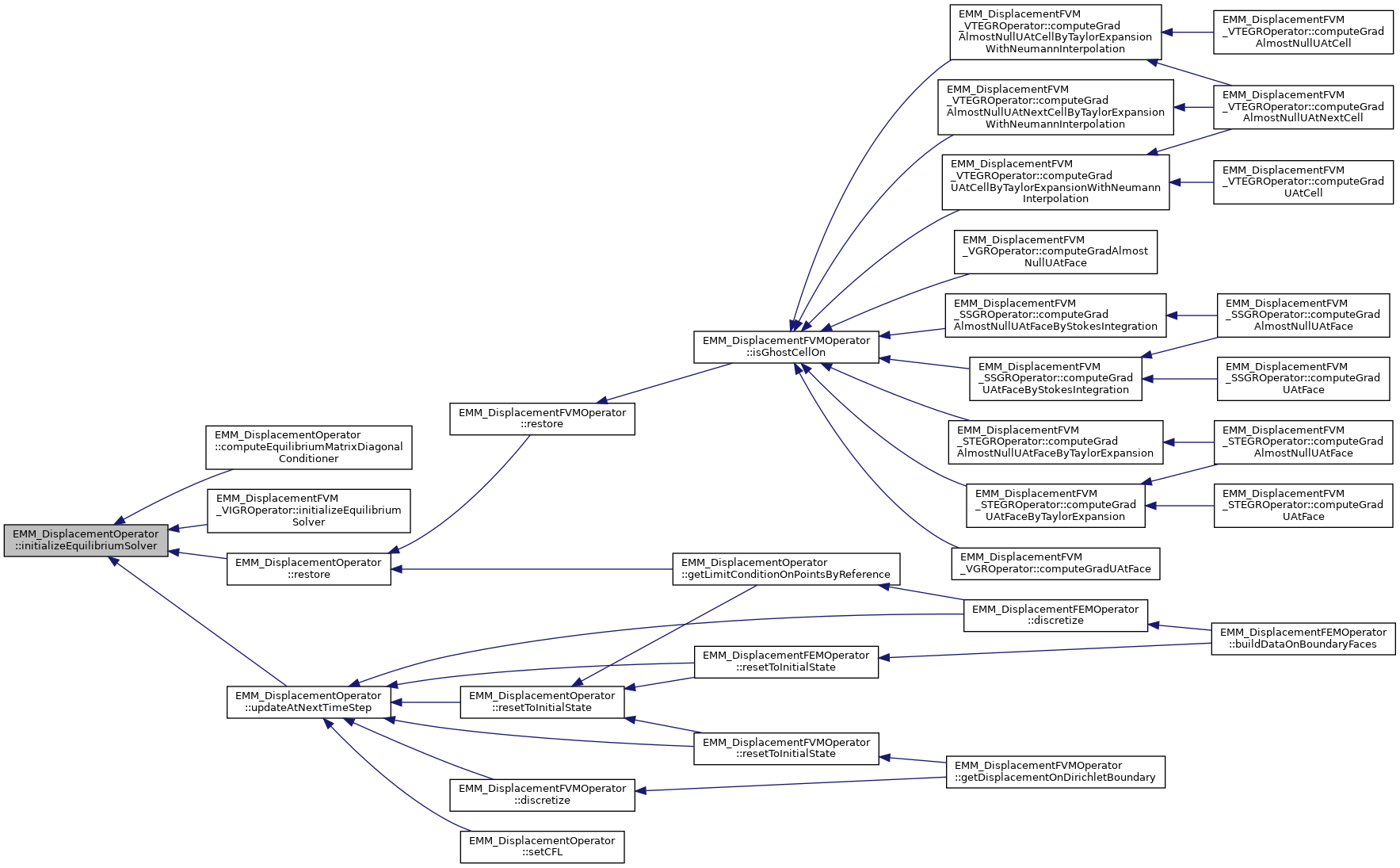
◆ is32Architecture()
|
inlinestaticinherited |
return true if the machine is a 32 bits machine
- Returns
- true is the computing is done in a 32 bits machine
References CORE_Object::pointer2String(), CORE_Object::printObjectsInMemory(), and tString.
Referenced by CORE_Test::testType().


◆ is64Architecture()
|
inlinestaticinherited |
return true if the machine is a 64 bits machine
- Returns
- true is the computing is done in a 64 bits machine
Referenced by EMM_VTK::getVTKType(), and CORE_Test::testType().
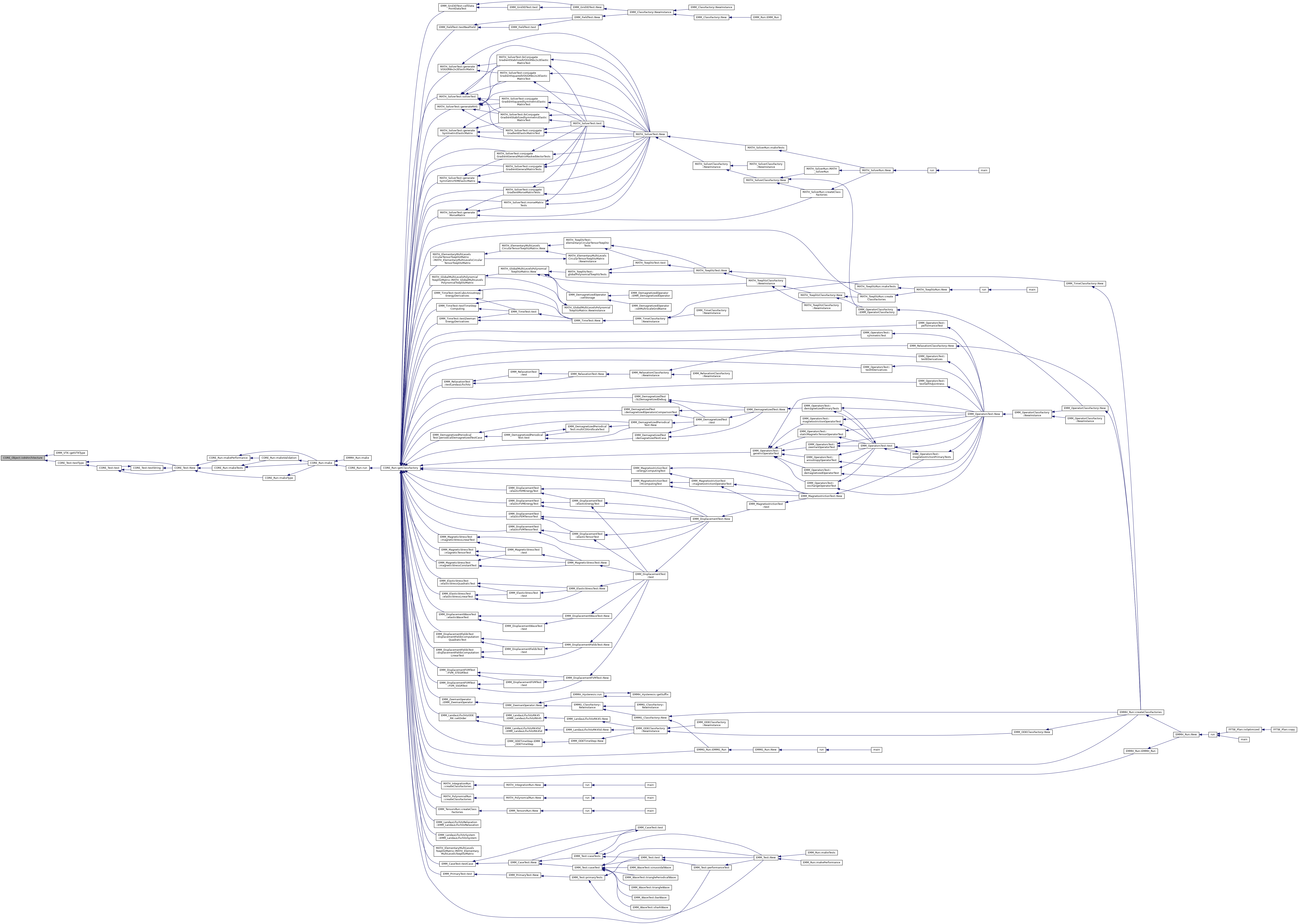
◆ isAffine()
|
inlinevirtual |
return true if the operator is either constant or linear
- Returns
- true if the operator is either constant or linear
Implements EMM_Operator.
◆ isCubicVolume()
|
inlineinherited |
return the true if the element is cubic
- Returns
- true is all size of the volum is same
References EMM_Operator::mIsCubic.
Referenced by EMM_FullExchangeOperator::discretize(), and EMM_MinimalExchangeOperator::discretize().

◆ isEquilibriumMatrixReconditioned()
|
inline |
get if the equilibrium matrix is conditioned
- Returns
- true to recondition the equilibrium matrix
References mIsEquilibriumMatrixConditioned.
Referenced by EMM_DisplacementFVMOperator::computeEquilibriumMatrixDiagonalConditioner(), and EMM_DisplacementFEMOperator::computeEquilibriumMatrixDiagonalConditioner().

◆ isEquilibriumState()
|
inline |
Referenced by backup(), computeEnergy(), resetToInitialState(), restore(), and updateAtNextTimeStep().
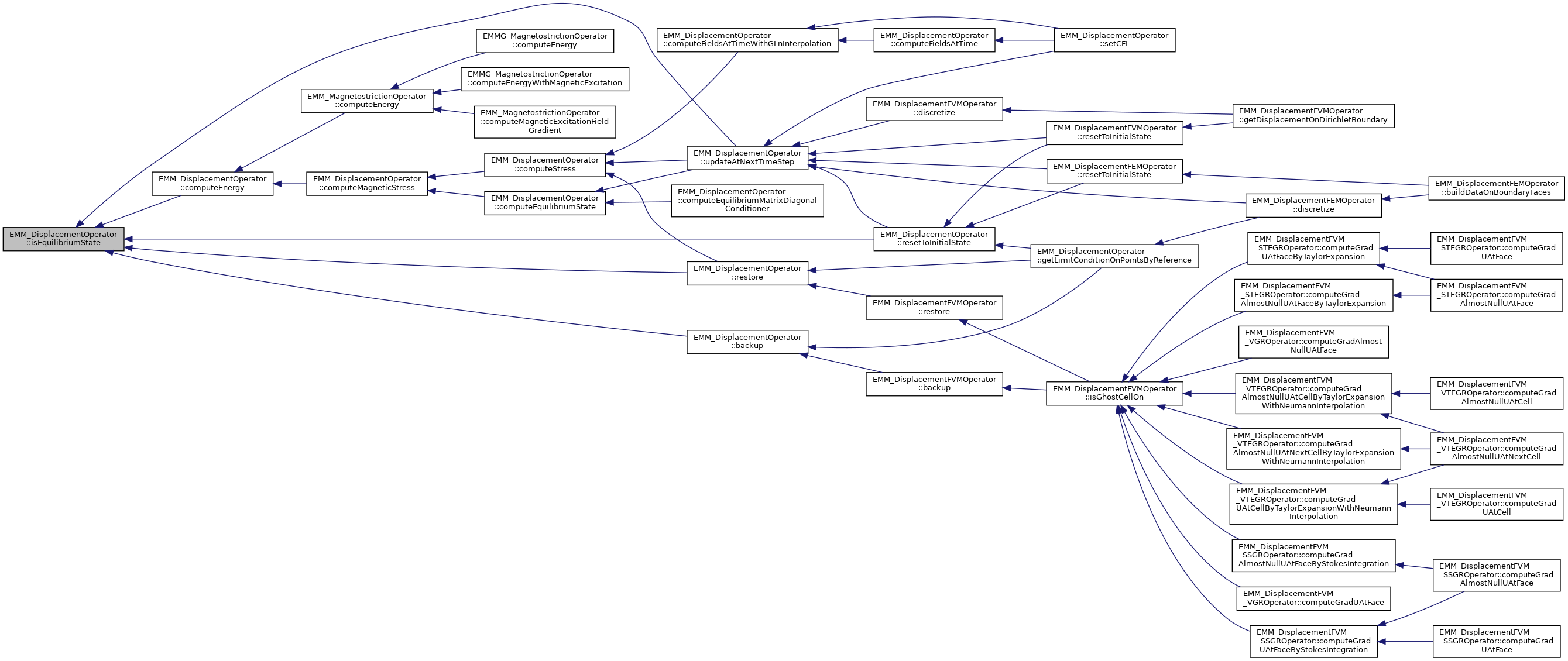
◆ isFrozenState()
|
inline |
◆ isGradientComputationable()
|
inlinevirtual |
return true if the gradient of the magnetic excitation is computationable
- Returns
- true if the the gradient of the magnetic excitation is computationable
Implements EMM_Operator.
◆ isInstanceOf() [1/2]
|
inlineinherited |
test if the clas T is an instance of this class
- Returns
- true if the object is an instance of T
References null.
Referenced by MATH_ToeplitzTest::toeplitzTest().

◆ isInstanceOf() [2/2]
test if the object is an instance of className
- Parameters
-
name name of the class
- Returns
- true if the object is an instance of class Name
References CORE_Object::getIdentityString().

◆ isMemoryChecked()
|
inlinestaticinherited |
get if the memory checking is used
- Returns
- true: if the memory checking is used.
References CORE_Object::getClassName(), CORE_Object::mIsMemoryTesting, and tString.
Referenced by main().


◆ isSteadyState()
|
inline |
Referenced by computeFieldsAtTime(), getDataFieldsNumber(), getDisplacement(), and getVelocity().
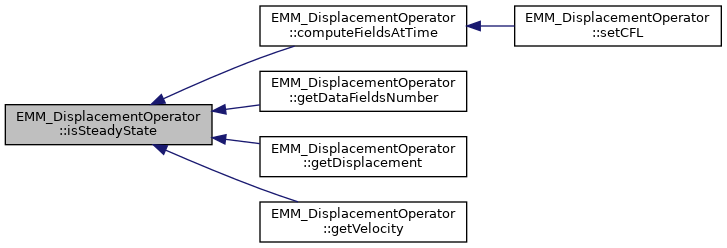
◆ NewEquilibriumMatrix()
|
virtual |
create the equilibrium matrix
- Returns
- the equilibrium matrix
References getDisplacement(), CORE_Object::getThis(), and EMM_BlockEquilibriumMatrix::New().
Referenced by initializeEquilibriumSolver(), and setCFL().

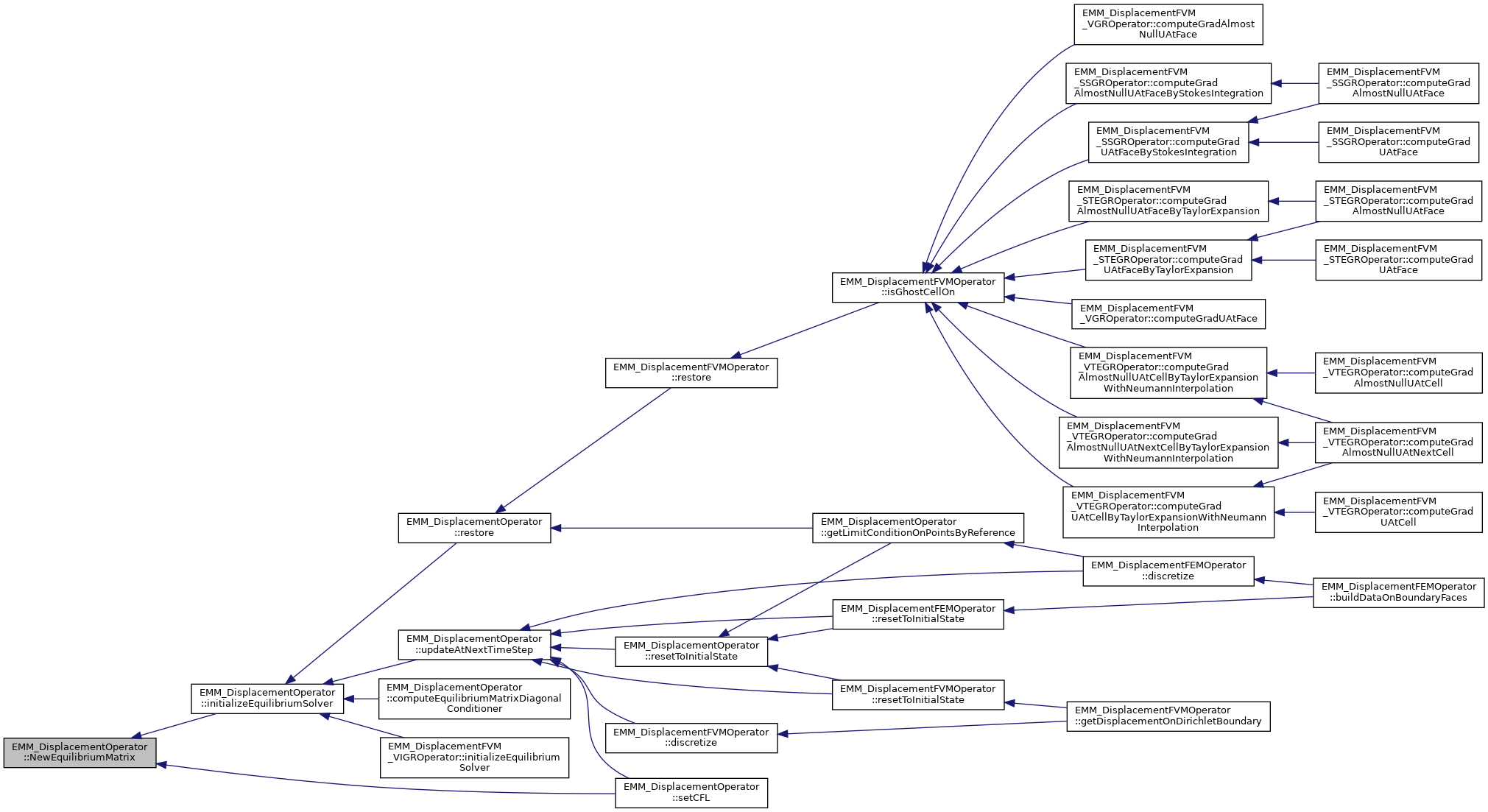
◆ nullProjectionOnDirichletBoundary() [1/2]
| void EMM_DisplacementOperator::nullProjectionOnDirichletBoundary | ( | EMM_RealField & | V | ) | const |
project the velocity to 0 on dirichlet boundary points
- Parameters
-
V the field
set V=0 on Dirichlet points; V must be defined on points (return an exception if not)
References EMM_RealField::getDimension(), EMM_RealField::getValues(), EMM_RealField::initField(), mLimitConditionOnPoints, tDimension, tReal, and tUIndex.
Referenced by getLimitConditionOnPointsByReference(), projectionOnDirichletBoundary(), resetToInitialState(), and EMM_DisplacementFEMOperator::spaceProjection().


◆ nullProjectionOnDirichletBoundary() [2/2]
| void EMM_DisplacementOperator::nullProjectionOnDirichletBoundary | ( | const tUIndex & | nPoints, |
| const tDimension & | dim, | ||
| tReal * | V | ||
| ) | const |
project the velocity to 0 on dirichlet boundary points
- Parameters
-
[in] nPoints : the number of points [in] dim : the dimension of each point [in,out] V : the values field defined on points
set V=0 on Dirichlet points; V must be defined on points (return an excepion if not)
References EMM_Grid3D::DIRICHLET_LIMIT_CONDITION, getLimitConditionOnPoints(), CORE_Object::getThread(), CORE_Thread::getThreadsNumber(), OMP_GET_THREAD_ID, OMP_PARALLEL_PRIVATE_SHARED_DEFAULT, tLimitCondition, tReal, tUIndex, and tUInteger.

◆ out()
|
inlinestaticinherited |
get the output
- Returns
- the output stream
Referenced by EMM_Matter::adimensionize(), EMM_DisplacementFVMOperator::backup(), backup(), MATH_ElementaryMultiLevelsToeplitzMatrix::buildSpectralVectorProjector(), EMM_Test::caseTest(), EMM_Test::caseTests(), EMM_MatterField::computeAnisotropyDirectionsField(), EMM_OptimalTimeStep::computeOptimalTimeStep(), MATH_MultiLevelsToeplitzMatrix::copy(), CORE_Exception::CORE_Exception(), EMM_MatterField::createAnisotropyOperator(), CORE_Run::createIO(), EMM_ElementaryTest::defaultBackupTest(), EMM_ElementaryTest::defaultTest(), MATH_MultiLevelsFFTToeplitzMatrix::diagonalize(), EMM_DisplacementFVMOperator::discretize(), EMM_MagnetostrictionOperator::discretize(), EMM_DisplacementFEMOperator::discretize(), EMM_4SymmetricTensors::doubleDot(), EMM_4Tensors::doubleDotCrossDoubleDotScalar(), EMM_TensorsTest::doubleDotCrossDoubleDotScalarTests(), EMM_4Tensors::doubleDotCrossProduct(), EMM_TensorsTest::doubleDotCrossProductTests(), EMM_4Tensors::doubleDotCrossSquaredScalar(), EMM_TensorsTest::doubleDotCrossSquaredScalarTests(), EMM_4Tensors::doubleDotProduct(), EMM_TensorsTest::doubleDotProductTests(), EMM_DisplacementWaveTest::elasticWaveTest(), EMM_Test::elementaryTests(), FFTW_Test::fftwTutorial(), MATH_IntegrationTest::gaussLegendreTest(), EMM_MagnetostrictionTest::HComputingTest(), EMM_DemagnetizedPeriodicalTest::HTest(), EMMH_HysteresisTest::hysteresisDefaultCycleTest(), EMM_TensorsTest::initializationTests(), EMM_MultiScaleGrid::initialize(), EMM_MultiScaleSDGrid::initialize(), EMM_MatterField::loadFromANIFile(), EMM_AnisotropyDirectionsField::loadFromFile(), EMM_Matter::loadFromFile(), EMM_Grid3D::loadFromGEOFile(), EMM_MatterField::loadFromLOCFile(), EMM_Array< tCellFlag >::loadFromStream(), EMM_Matter::loadFromStream(), EMM_Matter::loadMattersFromFile(), EMM_Run::loadSystemFromOptions(), EMM_ElementaryTest::magnetostrictionBackupTest(), CORE_Run::make(), EMMH_Run::makeHysteresis(), EMM_Run::makeRun(), CORE_Run::makeType(), EMM_ElementaryTest::optionsTest(), MATH_PolynomialTest::P4Tests(), EMM_Test::primaryTests(), EMM_LandauLifschitzSystem::printLog(), CORE_Run::printOptions(), EMM_2PackedSymmetricTensors::product(), EMMG_SLDemagnetizedOperator::projectionOnSpectralSpace(), CORE_Run::readOptionsFromCommandLine(), CORE_Test::readVectorTest(), EMM_DemagnetizedPeriodicalTest::relaxationTest(), EMM_DisplacementFVMOperator::restore(), restore(), EMM_Input::restoreBackup(), EMMH_Hysteresis::run(), EMM_Output::save(), EMM_AnisotropyDirectionsField::saveToFile(), EMM_MatterField::saveToFile(), EMM_Grid3D::saveToGEOFile(), CORE_IOTest::searchTest(), EMMH_Hysteresis::setInitialMagnetizationField(), MATH_MultiLevelsToeplitzMatrix::setLevels(), EMM_4SymmetricTensors::squaredDoubleDot(), EMM_4Tensors::squaredDoubleDotCrossScalar(), EMM_TensorsTest::squaredDoubleDotCrossScalarTests(), EMM_4Tensors::squaredDoubleDotScalar(), EMM_TensorsTest::squaredDoubleDotScalarTests(), EMM_TensorsTest::squaredDoubleDotTests(), EMM_MatterTest::testAdimensionize(), EMM_MatterTest::testANIFile(), CORE_Test::testComplex(), CORE_Test::testDateWeek(), FFTW_Test::testDFT(), EMM_MatterTest::testIO(), EMM_ODETest::testODE(), CORE_Test::testOut(), CORE_Test::testReal(), EMM_FieldTest::testRealArray(), EMM_Grid3DTest::testSegment(), EMM_Grid3DTest::testThinSheet(), CORE_Test::testTime(), CORE_Test::testType(), MATH_FullMatrix::toString(), EMM_DemagnetizedPeriodicalTest::xyPeriodicalCubeSDGTest(), and EMM_DemagnetizedPeriodicalTest::xyPeriodicalSheetSDGTest().

◆ periodicProjection()
| void EMM_DisplacementOperator::periodicProjection | ( | const tCellFlag & | periodicity, |
| const tUInteger | nPoints[3], | ||
| EMM_RealField & | V | ||
| ) | const |
make the periodic projection of the field V
- Parameters
-
periodicity :: periodcidcity projection nPoints number of points of each direction V field to project
V at slave point is set to V at master point
References EMM_Grid3D::GET_MASTER_PERIODIC_POINT(), EMM_RealField::getDimension(), getLimitConditionOnPoints(), CORE_Object::getThread(), CORE_Thread::getThreadsNumber(), EMM_RealField::getValues(), null, OMP_GET_THREAD_ID, OMP_PARALLEL_PRIVATE_SHARED_DEFAULT, EMM_Grid3D::SLAVE_LIMIT_CONDITION, tDimension, tLimitCondition, CORE_Integer::toString(), tReal, tUIndex, and tUInteger.
Referenced by getLimitConditionOnPointsByReference(), resetToInitialState(), and EMM_DisplacementFEMOperator::spaceRelevant().
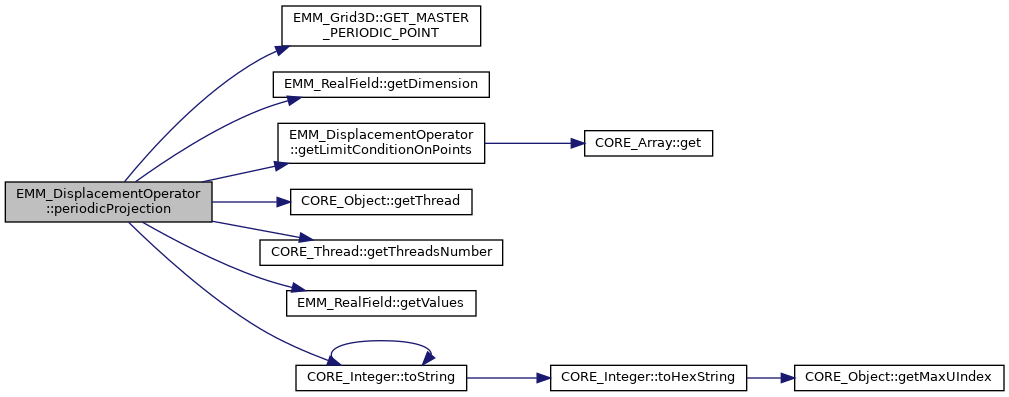

◆ pointer2String()
|
staticinherited |
return the string representation of a pointer
- Parameters
-
obj : oject to get the string pointer
- Returns
- the string pointer of the object
References tString.
Referenced by CORE_Object::CORE_Object(), CORE_Object::getIdentityString(), CORE_Object::getPointerAddress(), CORE_Object::is32Architecture(), and CORE_Object::~CORE_Object().

◆ printObjectsInMemory() [1/2]
|
staticinherited |
print object in memory
- Parameters
-
f : output to print the objects in memory
References CORE_Object::getIdentityString(), CORE_Object::getSharedPointer(), CORE_Object::mIsMemoryTesting, CORE_Object::mObjects, and tInteger.

◆ printObjectsInMemory() [2/2]
|
inlinestaticinherited |
print object in memory in the standart output
Referenced by CORE_Object::is32Architecture(), and main().
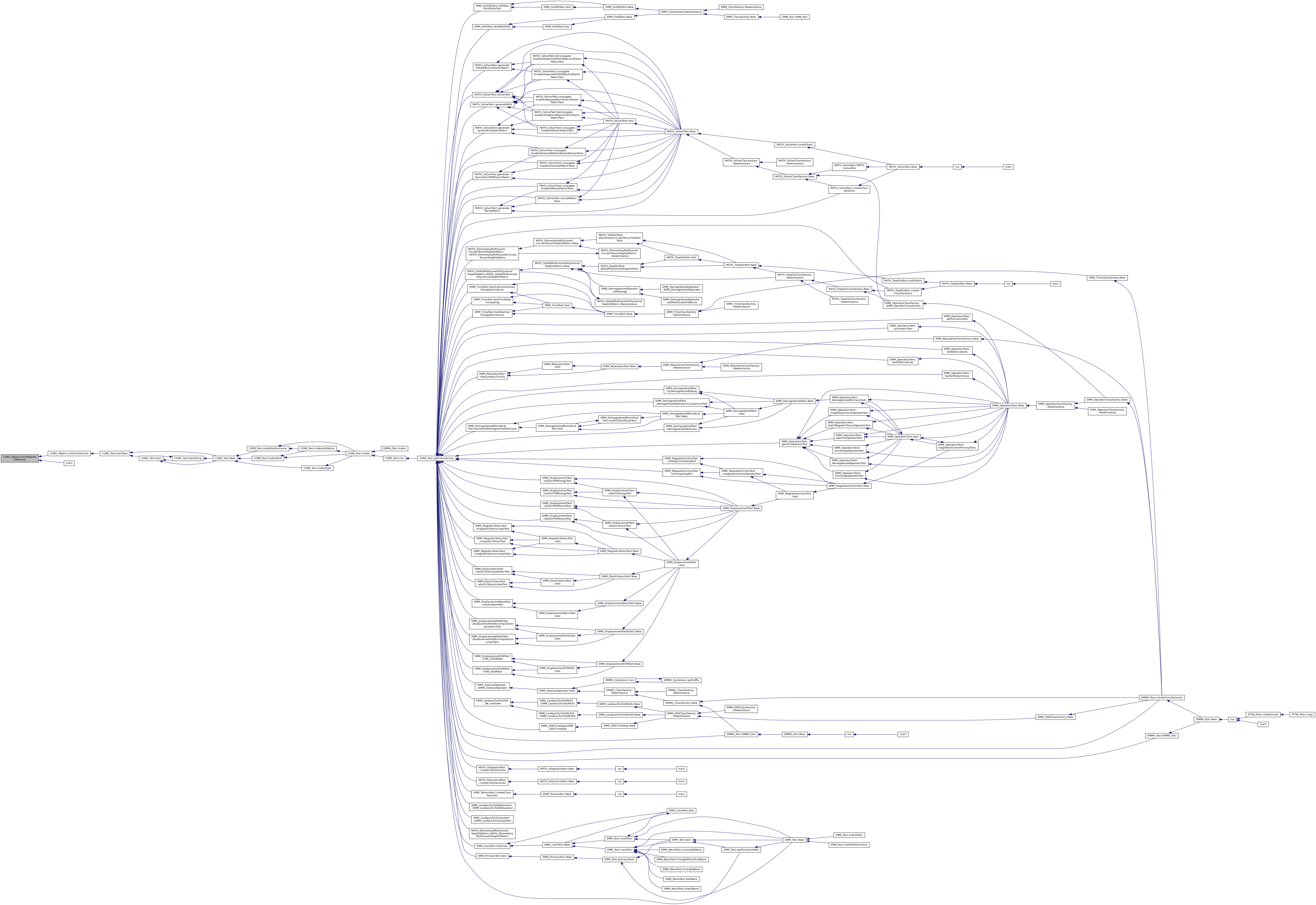
◆ projectionOnDirichletBoundary() [1/2]
| void EMM_DisplacementOperator::projectionOnDirichletBoundary | ( | const EMM_RealField & | V0, |
| EMM_RealField & | V | ||
| ) | const |
project the velocity to 0 on dirichlet boundary points
- Parameters
-
[in] V0 the field value on dirichlet points [out] V the field
set V=V0 on Dirichlet points; V must be defined on points (return an excepion if not)
References EMM_RealField::getDimension(), EMM_RealField::getSize(), EMM_RealField::getValues(), EMM_RealField::initField(), mLimitConditionOnPoints, null, nullProjectionOnDirichletBoundary(), tBoolean, tDimension, tReal, and tUIndex.
Referenced by getLimitConditionOnPointsByReference(), and EMM_DisplacementFEMOperator::spaceProjection().


◆ projectionOnDirichletBoundary() [2/2]
| void EMM_DisplacementOperator::projectionOnDirichletBoundary | ( | const tUIndex & | nPoints, |
| const tDimension & | dim, | ||
| const tBoolean & | incV0, | ||
| const tReal * | V0, | ||
| tReal * | V | ||
| ) | const |
project the velocity to 0 on dirichlet boundary points
- Parameters
-
[in] nPoints the number of points [in] dim the dimension of each point [in] incV0 increment (either 0 or 1) of the values field on dirichlet points [in] V0 the values field on dirichlet points of size >=3 [in,out] V the values field defined on points
set V=V0 on Dirichlet points; V must be defined on points (return an excepion if not)
References EMM_Grid3D::DIRICHLET_LIMIT_CONDITION, getLimitConditionOnPoints(), CORE_Object::getThread(), CORE_Thread::getThreadsNumber(), OMP_GET_THREAD_ID, OMP_PARALLEL_PRIVATE_SHARED_DEFAULT, tDimension, tLimitCondition, tReal, tUIndex, and tUInteger.

◆ resetOut()
|
inlinestaticinherited |
◆ resetThread()
|
inlinestaticinherited |
◆ resetToInitialState()
|
virtual |
reset the opertaro to initial state
- Parameters
-
system the data to initialize the operator
- Returns
- true if it succeeds
- initialize U & V
- project U & V on the working spaces
Implements EMM_Operator.
Reimplemented in EMM_DisplacementFEMOperator, and EMM_DisplacementFVMOperator.
References getDisplacement(), EMM_Grid3D::getElementsNumber(), EMM_LandauLifschitzSystem::getMagnetizationField(), EMM_LandauLifschitzSystem::getMesh(), EMM_Grid3D::getPeriodicIndicator(), EMM_Grid3D::getSegmentsNumber(), EMM_LandauLifschitzSystem::getSigma(), getVelocity(), EMM_Grid3D::getVerticesNumber(), isEquilibriumState(), mInitU, mInitUFile, mInitUFileScale, mInitV, mInitVFile, mInitVFileScale, mLc, mTc, mUn, mVn, nullProjectionOnDirichletBoundary(), periodicProjection(), tBoolean, tDimension, tReal, tUIndex, tUInteger, and updateAtNextTimeStep().
Referenced by getLimitConditionOnPointsByReference(), EMM_DisplacementFVMOperator::resetToInitialState(), and EMM_DisplacementFEMOperator::resetToInitialState().
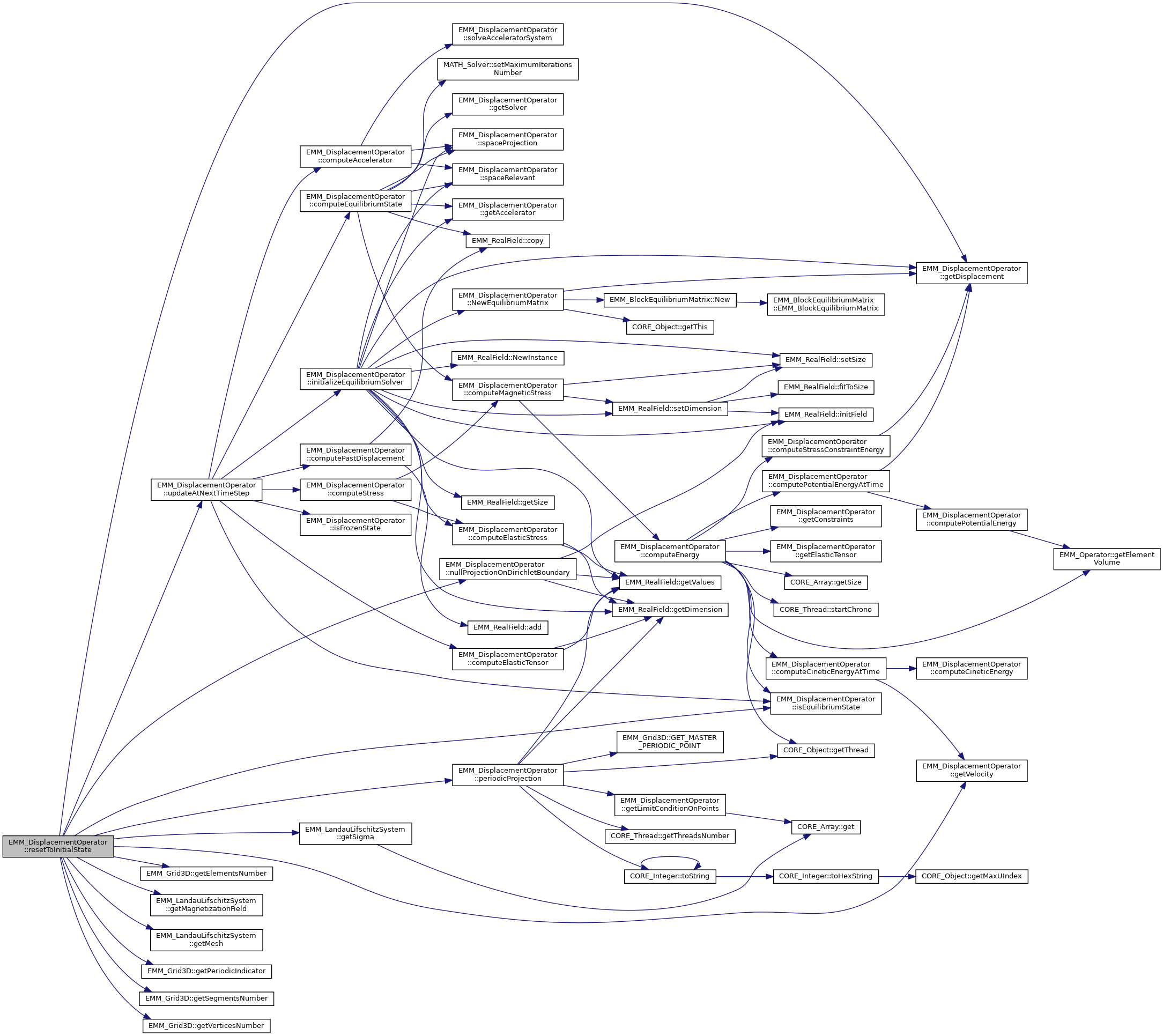

◆ restore()
|
virtual |
restore the operator data from file(s)
- Parameters
-
system : general data to restore the operator prefix : common prefix of the saving files suffix : common suffix of the saving files ext : common extension of the saving files
- Returns
- if the restoring of the displacament & velocity field have succeeds
It restore the state from :
- the current time step in {prefix}_dt_{suffix}.{ext}
- U at previous time step in {prefix}_Unm1_{suffix}.{ext}
- U at current time step in {prefix}_Un_{suffix}.{ext}
- V at current time step in {prefix}_Vn_{suffix}.{ext}
- dV/dt at current time step in {prefix}_Acc_{suffx}.{ext}
Reimplemented from EMM_Operator.
Reimplemented in EMM_DisplacementFVMOperator.
References computeAccelerator(), computeElasticTensor(), computeStress(), EMM_LandauLifschitzSystem::getMagnetizationField(), EMM_LandauLifschitzSystem::getSigma(), initializeEquilibriumSolver(), isEquilibriumState(), mAccelerator, mDt, mEpsilonUt, mKappa, mTimeIntegrationMethod, mUn, mUnm1, mVn, CORE_Object::out(), CORE_Out::println(), tBoolean, TE, CORE_Real::toString(), and tString.
Referenced by getLimitConditionOnPointsByReference(), and EMM_DisplacementFVMOperator::restore().
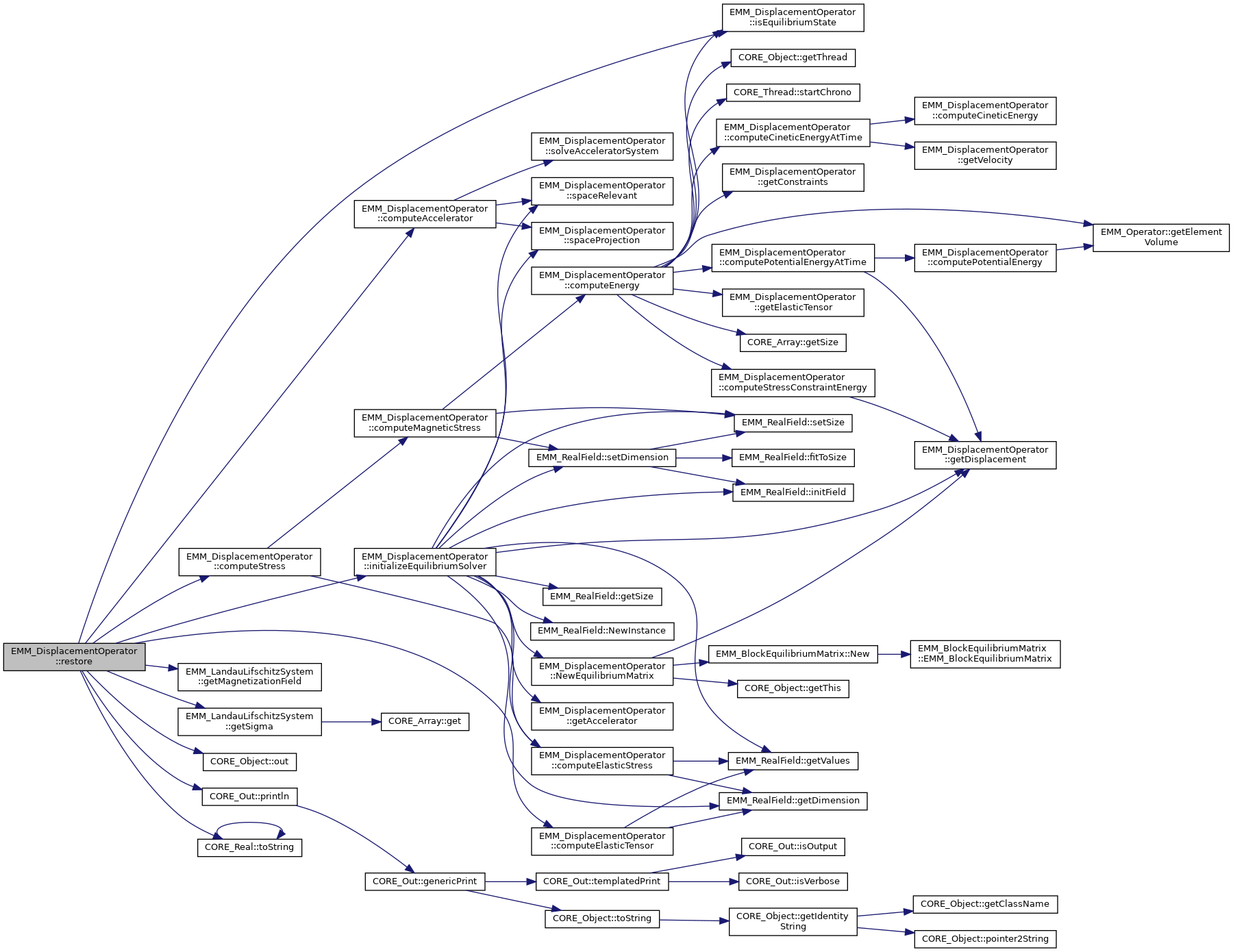
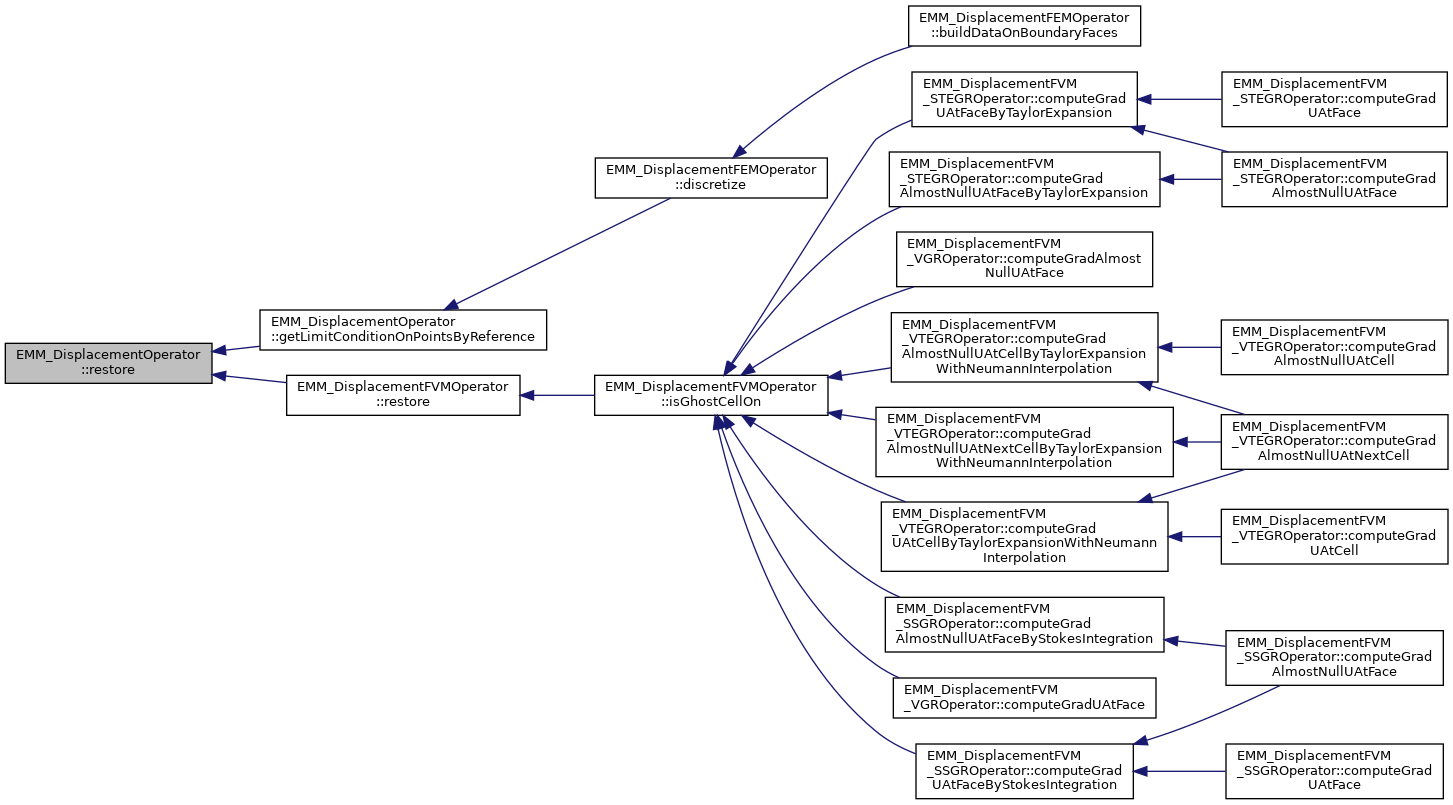
◆ setCFL()
|
inline |
set the cfl for computing the initial time step
- Parameters
-
cfl initial time step
References computeAccelerator(), computeFieldsAtTime(), computeFieldsAtTimeWithGL1Interpolation(), computeFieldsAtTimeWithGLnInterpolation(), computeFieldsAtTimeWithTE1(), computeFieldsAtTimeWithTE2(), computePastDisplacement(), NewEquilibriumMatrix(), solveAcceleratorSystem(), spaceProjection(), spaceRelevant(), tBoolean, tFlag, tReal, and updateAtNextTimeStep().
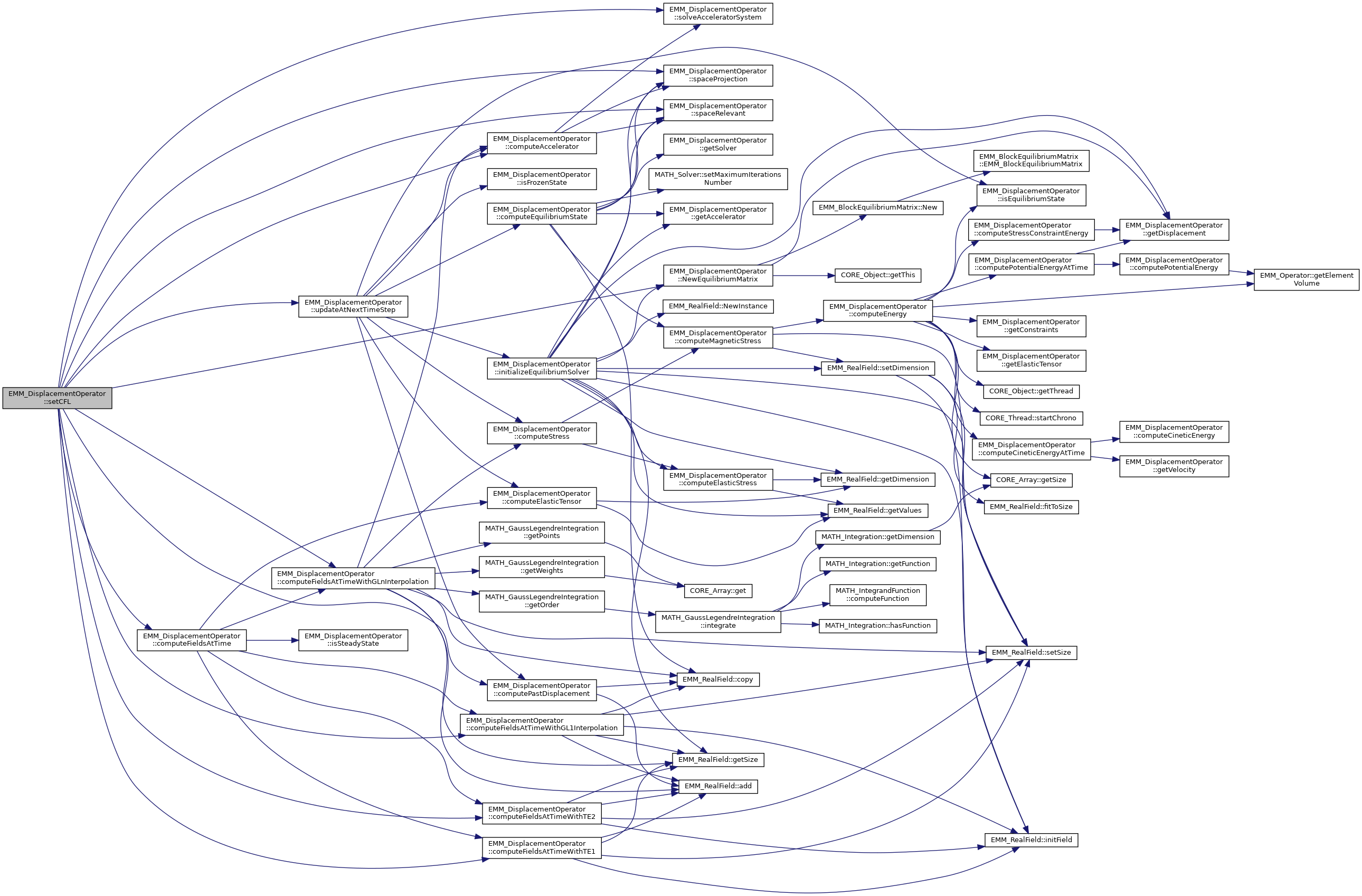
◆ setConstraints() [1/4]
set constraints from file defined on points
- Parameters
-
C constraints faces in bit : 
 if face f is constrainted
if face f is constrainted dataFile : file which contains the constraints field defined on points
Referenced by EMMG_ClassFactory::NewInstance().

◆ setConstraints() [2/4]
set constraints field
- Parameters
-
C constraint faces in bit : 
 if face f is constrainted
if face f is constrainted data : uniform data for constraints
References EMM_RealField::setValue().

◆ setConstraints() [3/4]
|
inline |
set initial constriants field
- Parameters
-
C constraint faces in bit : 
 if face f is constrainted
if face f is constrainted C0 x-coordinate of constraint C1 y-coordinate of constraint C2 z-coordinate of constraint
References EMM_RealField::initField().

◆ setConstraints() [4/4]
|
inline |
set constraints
- Parameters
-
C constraint faces in bit : 
 if face f is constrainted
if face f is constrainted data constraints field
◆ setDisplacement() [1/2]
|
inline |
set the displacement field
- Parameters
-
u : is the displacement field defined ob points
◆ setDisplacement() [2/2]
|
inline |
set the displacement field to an uniform vector defied on points
- Parameters
-
Ux uniform value of the field on the x-direction Uy uniform value of the field on the y-direction Uz uniform value of the field on the z-direction
◆ setElasticityState()
|
inline |
set the elasticity state
- Parameters
-
v the elasticity state eithet equilibrium | steady | unsteady
Referenced by EMMG_ClassFactory::NewInstance().

◆ setInitialDisplacement() [1/4]
|
inline |
set initial displacement field.
- Parameters
-
scale : the scale factor of the file dataFile : file which contains the displacement field defined on points
Referenced by EMMG_ClassFactory::NewInstance().

◆ setInitialDisplacement() [2/4]
|
inline |
set initial displacement field
- Parameters
-
data : uniform data for displacement
References EMM_RealField::setValue().

◆ setInitialDisplacement() [3/4]
|
inline |
set initial displacement field
- Parameters
-
U0 x-coordinate of displacement U1 y-coordinate of displacement U2 z-coordinate of displacement
References EMM_RealField::initField().

◆ setInitialDisplacement() [4/4]
|
inline |
set initial displacement field
- Parameters
-
data : data for displacement
◆ setInitialVelocity() [1/4]
|
inline |
set initial velocity field
- Parameters
-
scale scale of the file dataFile : file which contains the velocity field defined on points
Referenced by EMMG_ClassFactory::NewInstance().

◆ setInitialVelocity() [2/4]
|
inline |
set initial velocity field
- Parameters
-
data velocity field
◆ setInitialVelocity() [3/4]
|
inline |
set initial velocity field
- Parameters
-
data : uniform data for velocity
References EMM_RealField::setValue().

◆ setInitialVelocity() [4/4]
|
inline |
set initial velocity field
- Parameters
-
V0 x-coordinate of velocity V1 y-coordinate of velocity V2 z-coordinate of velocity
References EMM_RealField::initField().

◆ setIsEquilibriumMatrixReconditioned()
|
inline |
set to true if the equilibrium matrix is conditioned
- Parameters
-
c true to recondition the equilibrium matrix
◆ setIsMemoryChecked()
|
inlinestaticinherited |
set if the memory checking is used
- Parameters
-
v : true to check memory
Referenced by main().

◆ setLimitConditionOnPoints() [1/2]
|
inline |
set the limit condition each point is set to
- Parameters
-
lc the limit condition value for all points of the mesh. Interior point are ignored (0) - NO_LIMIT_CONDITION for all interior points or not magnetized point
- DIRICHLET_LIMIT_CONDITION for all points on Dirichlet boundary
- NEUMANN_LIMIT_CONDITION for all points on Neumann boundary
Referenced by EMMG_ClassFactory::NewInstance().

◆ setLimitConditionOnPoints() [2/2]
|
inline |
set the limit condition to all points
- Parameters
-
lc the limit condition value for all points of the mesh. Interiror point are ignored (0) - NO_LIMIT_CONDITION for all interior points or not magnetized point
- DIRICHLET_LIMIT_CONDITION for all points on Dirichlet boundary
- NEUMANN_LIMIT_CONDITION for all points on Neumann boundary
◆ setOut()
|
inlinestaticinherited |
◆ setSolver() [1/2]
|
virtual |
set the solver
- Parameters
-
solverName name of the solver which can be either : - CG or
- biCGStab or
- empty
If empty biCGStab is used only for FVM displacement with equilibrium state
Reimplemented in EMM_DisplacementFVMOperator.
References tString.
Referenced by getAccelerator(), EMMG_ClassFactory::NewInstance(), and EMM_DisplacementFVMOperator::setSolver().

◆ setSolver() [2/2]
|
inline |
set the solver
- Parameters
-
solver : the solver
◆ setThis()
|
inlineprotectedinherited |
set this weak shared pointer called toDoAfterThis setting method
- Parameters
-
p : shared pointer of the class This
References CORE_Object::toDoAfterThisSetting().

◆ setThread()
|
inlinestaticinherited |
set the thread
- Parameters
-
thread the shared pointer to the thread
References null.
Referenced by EMM_Run::EMM_Run(), EMM_TensorsRun::EMM_TensorsRun(), and MATH_SolverRun::MATH_SolverRun().

◆ setTimeIntegrationMethod()
|
inline |
set the time integration method for new field
- Parameters
-
m integration method in P1 | TE
Referenced by EMMG_ClassFactory::NewInstance().

◆ setTimeIntegrationOrder()
|
inline |
set the time integration order for new field
- Parameters
-
o integration ordre in {1,2}
Referenced by EMMG_ClassFactory::NewInstance().

◆ setVelocity() [1/2]
|
inline |
set the velocity of dicplacement defined on points
- Parameters
-
v : is the displacement velocity field
◆ setVelocity() [2/2]
|
inline |
set the displacement velocity field to an uniform vector defined on points
- Parameters
-
Vx uniform value of the field on the x-direction Vy uniform value of the field on the y-direction Vz uniform value of the field on the z-direction
◆ solveAcceleratorSystem()
|
privatepure virtual |
solve the accelerator system : M.X=V V:=X
- Parameters
-
V - input : the secund member
- output : the solution
- Returns
- true if the solving succeeds
Implemented in EMM_DisplacementFEMOperator, and EMM_DisplacementFVMOperator.
Referenced by computeAccelerator(), and setCFL().
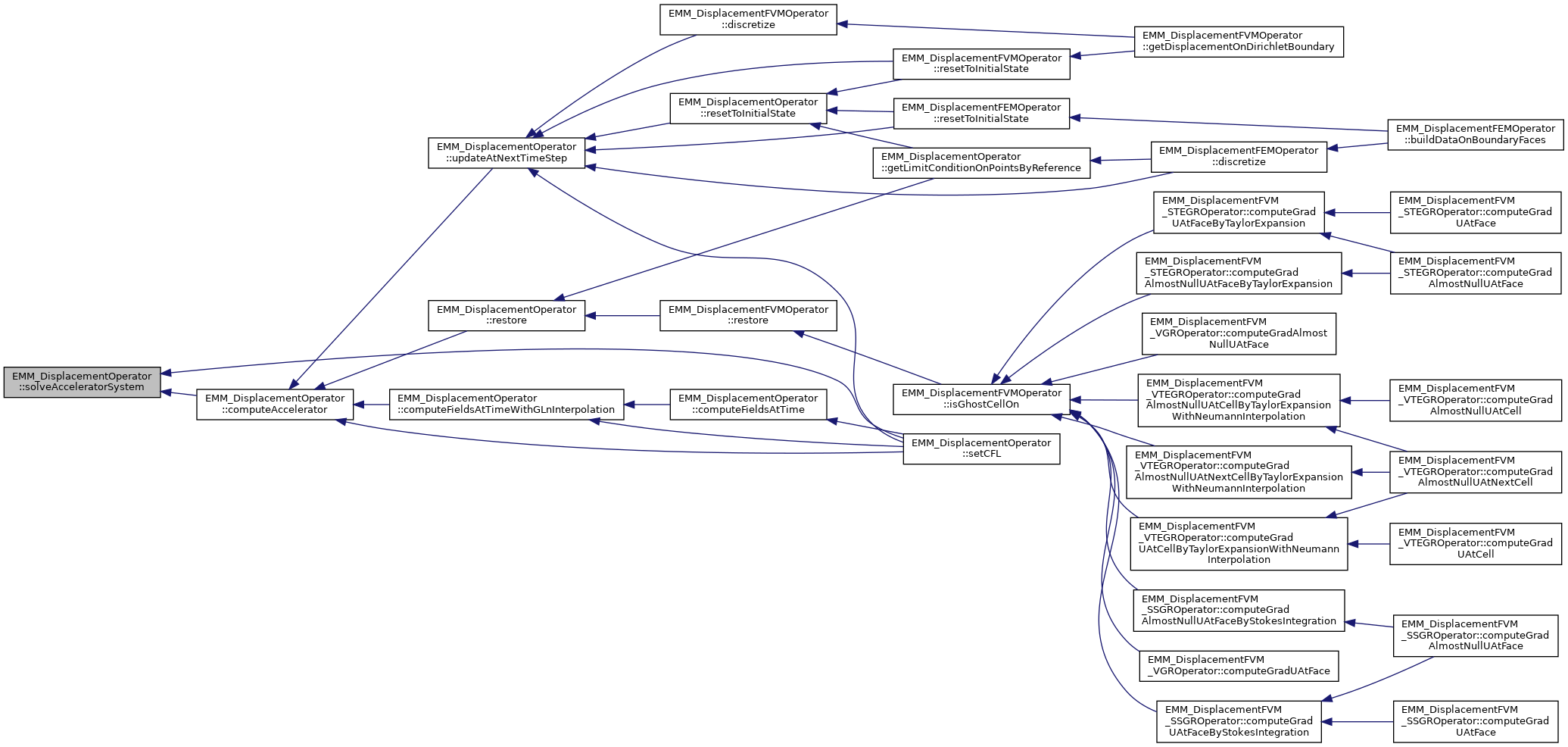
◆ SP_OBJECT()
|
private |
◆ spaceProjection() [1/2]
|
privatepure virtual |
make the projection of the vector B into the solving linear space
- Parameters
-
[out] V field to project in linear solving space
It is used in the constraint stress computing method EMM_DisplacementOperator::computeAccelerator()
Implemented in EMM_DisplacementFEMOperator, and EMM_DisplacementFVMOperator.
Referenced by computeAccelerator(), computeEquilibriumState(), initializeEquilibriumSolver(), and setCFL().
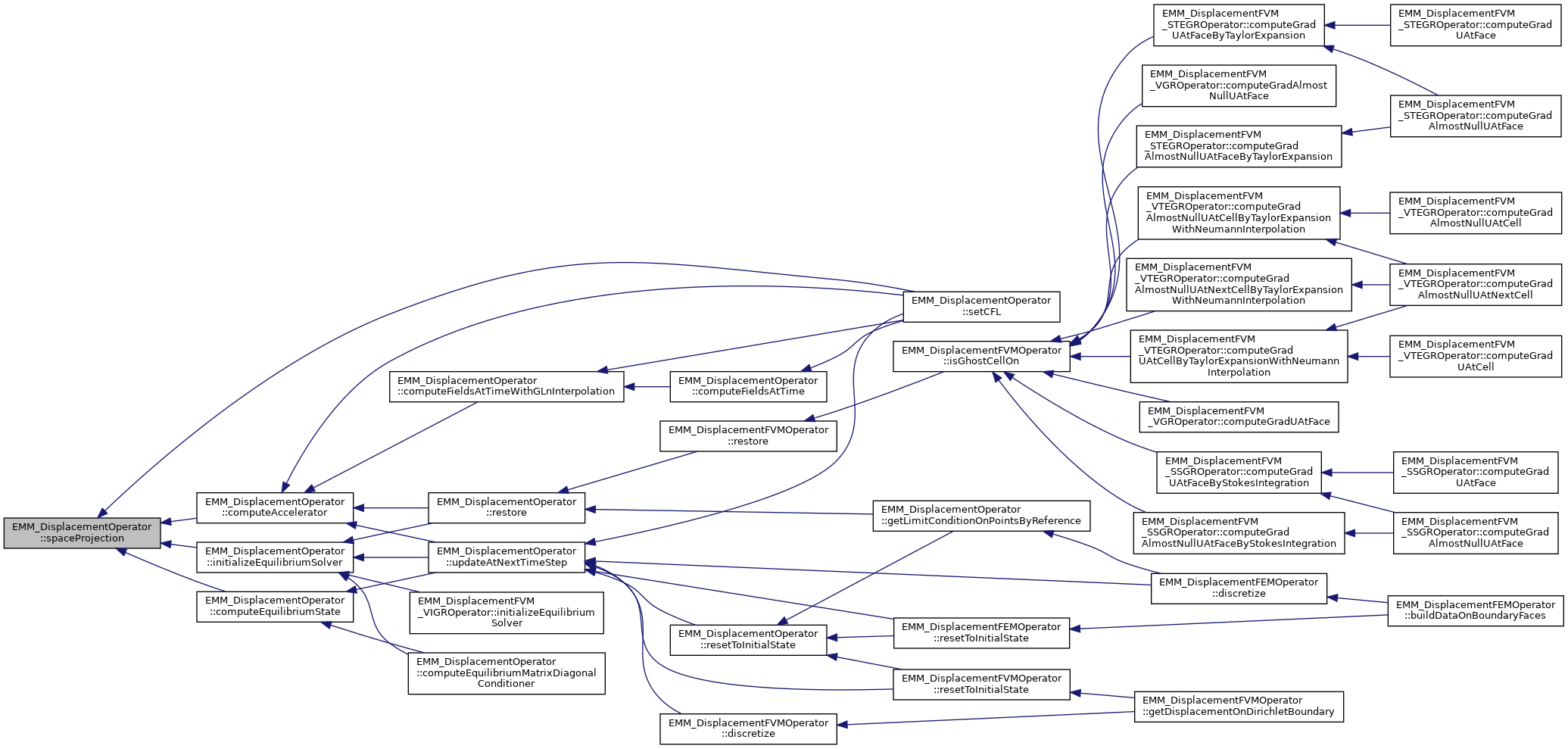
◆ spaceProjection() [2/2]
|
privatepure virtual |
make the projection of the vector B into the solving linear space
- Parameters
-
[in] V0 :orthogonal vector of the linear solving space [out] V : field to project in linear solving space
It is used in the constraint stress computing method EMM_DisplacementOperator::computeAccelerator()
Implemented in EMM_DisplacementFEMOperator, and EMM_DisplacementFVMOperator.
◆ spaceRelevant()
|
protectedpure virtual |
make the relevment of the vector B from the solving linear space.
- Parameters
-
V field to rebuild from the solving space
It is used in the new displacement fields computing EMM_DisplacementOperator::computeAcccelerator()
Implemented in EMM_DisplacementFEMOperator, and EMM_DisplacementFVMOperator.
Referenced by computeAccelerator(), computeEquilibriumState(), initializeEquilibriumSolver(), and setCFL().
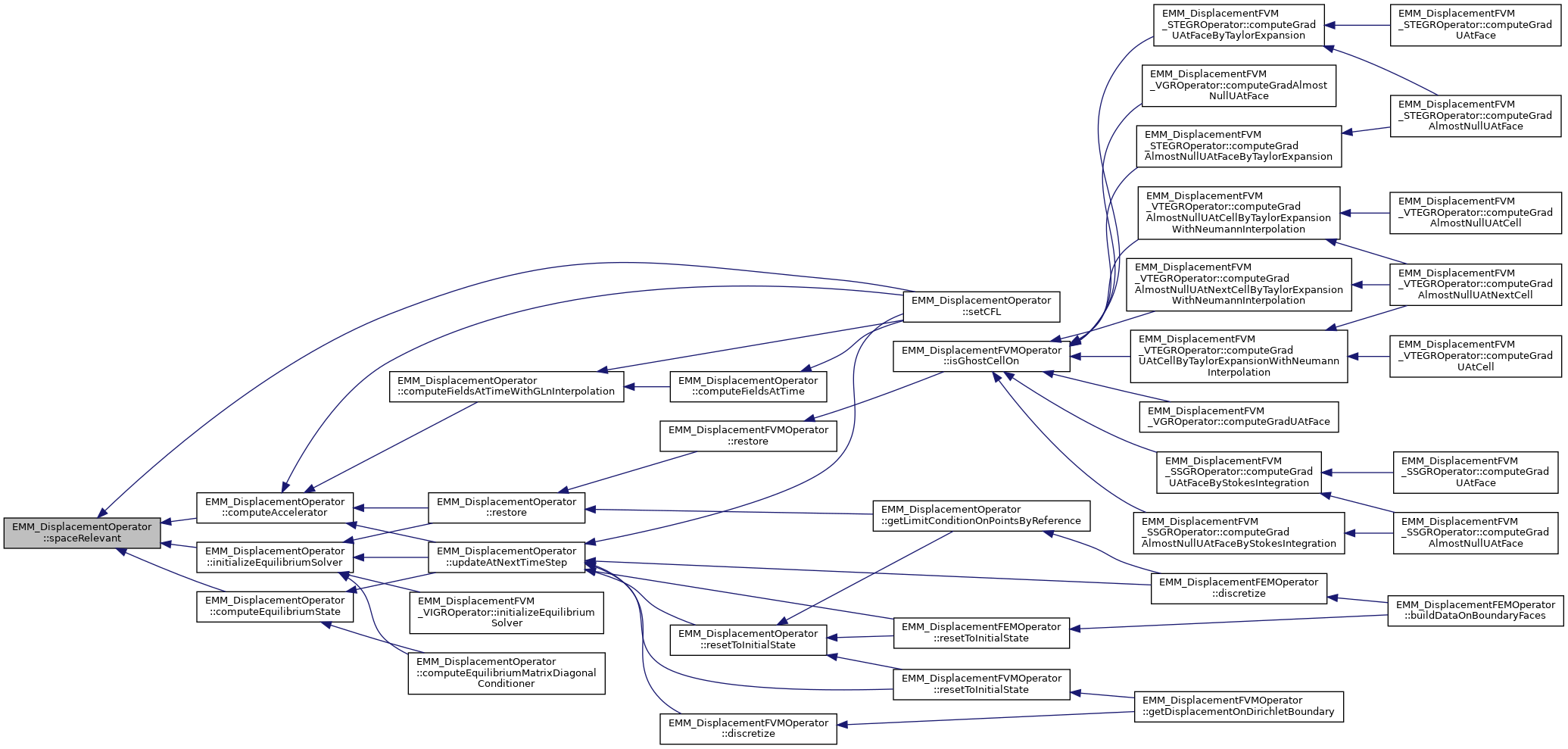
◆ toDoAfterThisSetting()
|
inlineprotectedvirtual |
method called after the setting of the shared pointer this method can only be called once.
Reimplemented from EMM_Object.
Reimplemented in EMM_DisplacementFVMOperator.
References EMM_Object::toDoAfterThisSetting().
Referenced by EMM_DisplacementFVMOperator::toDoAfterThisSetting().


◆ toString()
|
inlinevirtual |
turn the martix into string
Reimplemented from CORE_Object.
Reimplemented in EMM_DisplacementFEMOperator, EMM_DisplacementFVMOperator, EMM_DisplacementFVM_VTEGROperator, EMM_DisplacementFVM_SSGROperator, and EMM_DisplacementFVM_STEGROperator.
References CORE_Object::toString().
Referenced by EMM_DisplacementFVMOperator::toString().


◆ updateAtNextTimeStep()
|
virtual |
update the data of operator at next time step
- Parameters
-
dt the time step sigma the magnetized weight of each cell Mt the magnetization field at each point at next time step
- Returns
- true if the updating of the operator has succeeded if (dt==0) the function is called after discretization during the relaxation process
Implements EMM_Operator.
References computeAccelerator(), computeElasticTensor(), computeEquilibriumState(), computePastDisplacement(), computeStress(), initializeEquilibriumSolver(), isEquilibriumState(), isFrozenState(), mAccelerator, mDt, mEpsilonUt, mKappa, mTimeIntegrationMethod, mTimeIntegrationOrder, mUn, mUnm1, mUt, mVn, mVt, tBoolean, and TE.
Referenced by EMM_DisplacementFVMOperator::discretize(), EMM_DisplacementFEMOperator::discretize(), EMM_DisplacementFVMOperator::resetToInitialState(), EMM_DisplacementFEMOperator::resetToInitialState(), resetToInitialState(), and setCFL().
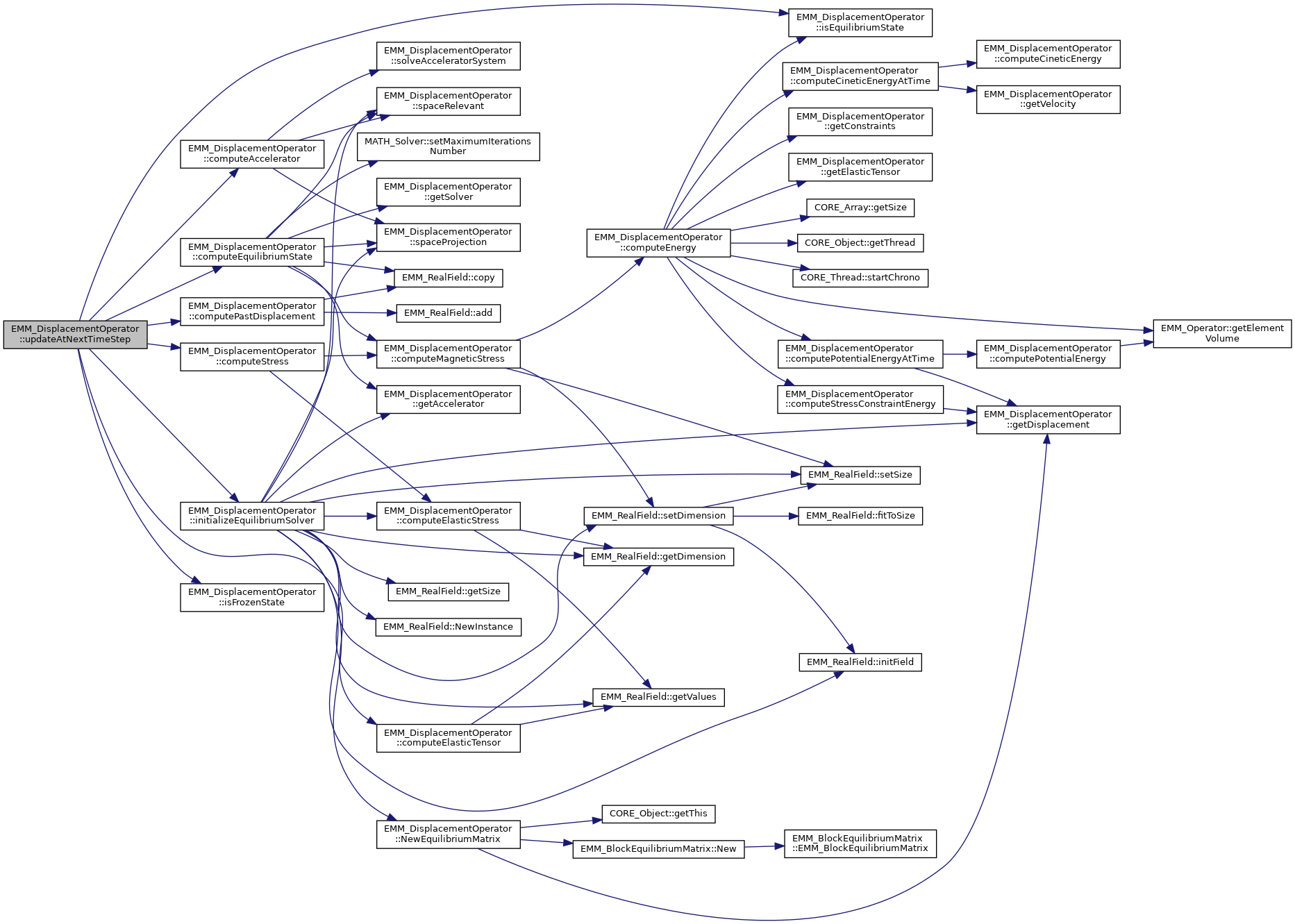

Member Data Documentation
◆ EQUILIBRIUM_STATE
|
static |
Referenced by EMMG_ClassFactory::NewInstance().
◆ FROZEN_STATE
|
static |
Referenced by EMMG_ClassFactory::NewInstance().
◆ Gamma
|
staticinherited |
◆ mAccelerator
|
private |
◆ mAccelerator_t
|
private |
Referenced by computeFieldsAtTimeWithGLnInterpolation(), and getMemorySize().
◆ mCFL
|
private |
Referenced by EMM_DisplacementOperator().
◆ mConstraintFaces
|
private |
Referenced by getConstraintFaces().
◆ mConstraints
|
private |
Referenced by getMemorySize().
◆ mDt
|
private |
Referenced by backup(), computeFieldsAtTime(), EMM_DisplacementOperator(), getTimeStep(), restore(), and updateAtNextTimeStep().
◆ mElasticityState
|
private |
Referenced by EMM_DisplacementOperator().
◆ mElasticTensorAdimensionizedParameter
|
private |
Referenced by EMM_DisplacementOperator().
◆ mEpsilonUt
|
private |
Referenced by backup(), computeFieldsAtTime(), computePotentialEnergy(), getElasticTensor(), getMemorySize(), restore(), and updateAtNextTimeStep().
◆ mEquilibriumMatrix
|
private |
Referenced by computeEquilibriumState(), getMemorySize(), and initializeEquilibriumSolver().
◆ mInitU
|
private |
Referenced by EMM_DisplacementOperator(), and resetToInitialState().
◆ mInitUFile
|
private |
Referenced by resetToInitialState().
◆ mInitUFileScale
|
private |
Referenced by resetToInitialState().
◆ mInitV
|
private |
Referenced by resetToInitialState().
◆ mInitVFile
|
private |
Referenced by resetToInitialState().
◆ mInitVFileScale
|
private |
Referenced by resetToInitialState().
◆ mIntegrator
|
private |
Referenced by computeFieldsAtTimeWithGLnInterpolation().
◆ mIsEquilibriumMatrixConditioned
|
private |
Referenced by isEquilibriumMatrixReconditioned().
◆ mKappa
|
private |
◆ mL
|
private |
Referenced by discretize(), and getAdimensionizedSegmentsSize().
◆ mLc
|
private |
Referenced by EMM_DisplacementOperator(), and resetToInitialState().
◆ mLe
|
private |
Referenced by computePotentialEnergy(), and getMemorySize().
◆ mLem
|
private |
Referenced by getMemorySize().
◆ mLimitConditionOnPoints
|
private |
◆ mLme
|
private |
Referenced by computeEnergy(), and getMemorySize().
◆ mLmem
|
private |
Referenced by discretize(), and getMemorySize().
◆ mMs
|
private |
Referenced by computeFieldsAtTime(), and getMemorySize().
◆ mMsat
|
private |
Referenced by EMM_DisplacementOperator().
◆ mSolver
|
private |
◆ mTc
|
private |
Referenced by EMM_DisplacementOperator(), and resetToInitialState().
◆ mTimeIntegrationMethod
|
private |
Referenced by backup(), computeFieldsAtTime(), EMM_DisplacementOperator(), getTimeIntegrationMethod(), restore(), and updateAtNextTimeStep().
◆ mTimeIntegrationOrder
|
private |
Referenced by computeFieldsAtTime(), EMM_DisplacementOperator(), getTimeIntegrationOrder(), and updateAtNextTimeStep().
◆ Mu0
|
staticinherited |
Referenced by EMM_MatterField::adimensionize(), EMM_MagnetostrictionOperator::adimensionize(), EMM_Matter::adimensionize(), EMM_CubicAnisotropyOperator::ComputeMagneticExcitation(), EMM_CubicAnisotropyOperator::computeMagneticExcitationField(), EMM_CubicAnisotropyOperator::computeMagneticExcitationFieldGradient(), EMM_CubicAnisotropyOperator::ComputeMagneticExcitationGradient(), EMM_Test::createMatters(), EMM_MatterField::getElasticTensorAdimensionizedParameter(), and EMM_MatterTest::testAdimensionize().
◆ mUn
|
private |
Referenced by backup(), computeFieldsAtTime(), getMemorySize(), resetToInitialState(), restore(), and updateAtNextTimeStep().
◆ mUnm1
|
private |
Referenced by backup(), computeFieldsAtTime(), getMemorySize(), restore(), and updateAtNextTimeStep().
◆ mUs
|
private |
Referenced by computeFieldsAtTime(), and getMemorySize().
◆ mUt
|
private |
Referenced by computeEquilibriumState(), computeFieldsAtTime(), getMemorySize(), and updateAtNextTimeStep().
◆ mVn
|
private |
Referenced by backup(), computeFieldsAtTime(), getMemorySize(), resetToInitialState(), restore(), and updateAtNextTimeStep().
◆ mVt
|
private |
Referenced by computeFieldsAtTime(), getMemorySize(), and updateAtNextTimeStep().
◆ NULL_VALUE
|
staticinherited |
Referenced by EMM_DisplacementFVM_VOGGROperator::computeGradAlmostNullUAtCellByOstrogradskiGreenIntegration(), EMM_DisplacementFVM_VTEGROperator::computeGradAlmostNullUAtCellByTaylorExpansionWithNeumannInterpolation(), EMM_DisplacementFVM_SSGROperator::computeGradAlmostNullUAtFaceByStokesIntegration(), EMM_DisplacementFVM_VOGGROperator::computeGradAlmostNullUAtNextCellByOstrogradskiGreenIntegration(), EMM_DisplacementFVM_VTEGROperator::computeGradUAtCellByTaylorExpansionWithNeumannInterpolation(), EMM_DisplacementFVM_VGROperator::computeGradUAtFace(), EMM_DisplacementFVM_SSGROperator::computeGradUAtFaceByStokesIntegration(), EMM_DisplacementFVM_STEGROperator::computeGradUAtFaceByTaylorExpansion(), EMM_DisplacementFVM_Interpolator::interpolateUAtEdge(), and EMM_DisplacementFVM_Interpolator::interpolateUAtVertices().
◆ P1
|
static |
Referenced by computeFieldsAtTime(), EMMG_ClassFactory::NewInstance(), and EMM_DisplacementFieldsTest::test().
◆ TE
|
static |
◆ UNSTEADY_STATE
|
static |
Referenced by EMM_DisplacementOperator(), and EMMG_ClassFactory::NewInstance().
◆ X
|
staticinherited |
◆ Y
|
staticinherited |
Referenced by EMMG_SLSDXPeriodicMultiScale::computeMultiGridExcitationField(), EMMG_RealField::fitToSize(), EMM_MassMatrix::getElementVolume(), EMM_CanonicalMassMatrix::isSymmetric(), EMM_BlockMassMatrix::product(), EMM_CondensedMassMatrix::product(), EMM_RealField::setValue(), EMM_CanonicalMassMatrix::solve(), EMM_BlockMassMatrix::solve(), EMM_BlockMassMatrix::toString(), and EMMG_RealField::wedge().
◆ Z
|
staticinherited |
The documentation for this class was generated from the following files:














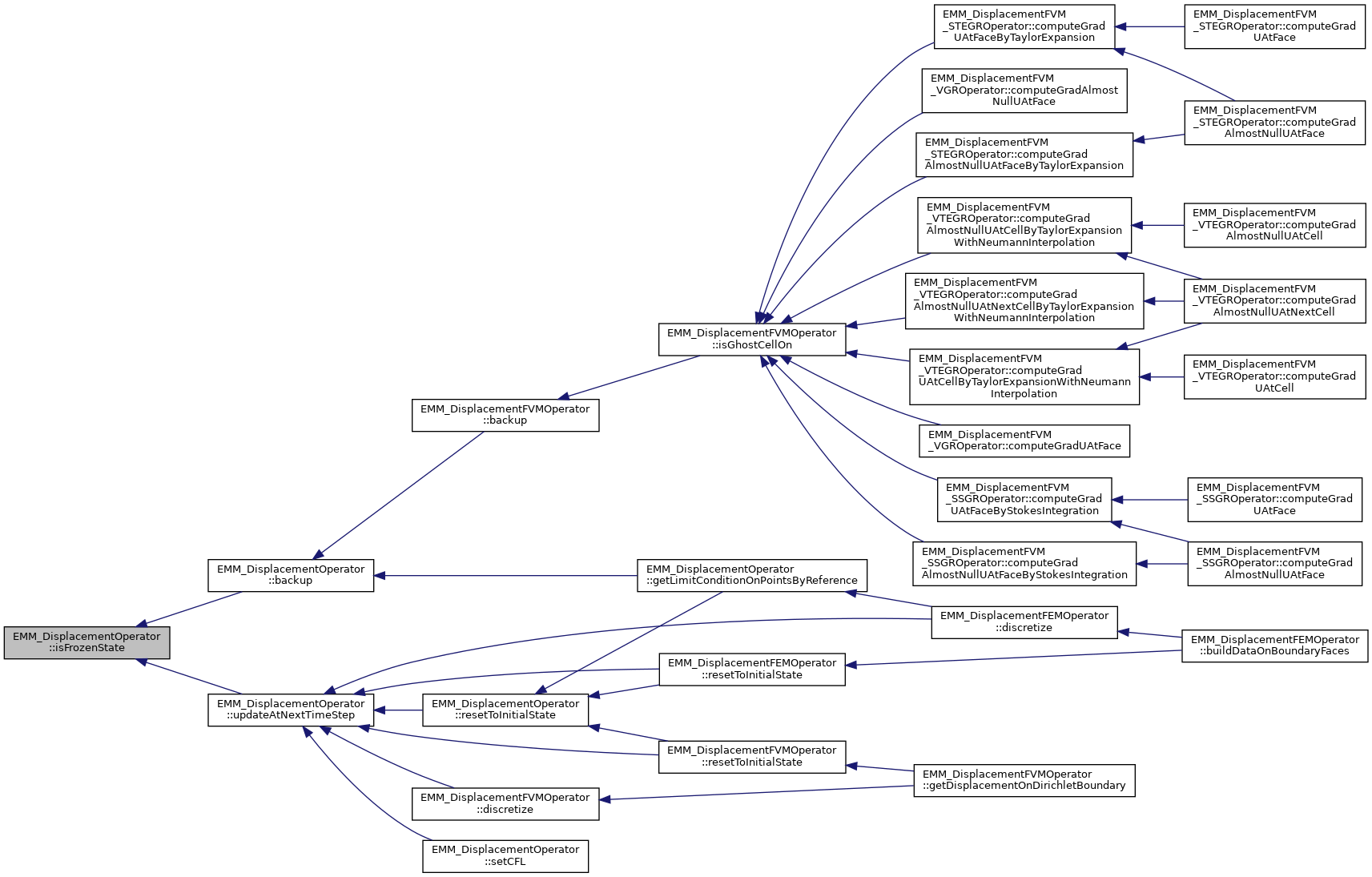


 1.8.13
1.8.13